
- Escorted Tours by Itinerary
- Escorted Tours by Date

Add-On Tours
- Escorted Tours FAQs
- Escorted Tours Terms and Conditions
- Self Guided Packages
- Self Guided FAQs
- Self Guided Tours Terms and Conditions
- Specialty Tours
- Private Tour Groups
- Pre and Post Cruise Tours
- How to Register and Booking Process
- Tour Discounts
- Staying In Ryokans
- Japanese Etiquette
- Food in Japan
- Preparing For Your Trip
- Baggage Transfers
- Smart Traveler Enrollment Program
- Weather in Japan
- Pocket WiFi Rental
- SUICA and ICOCA Cards
- Why Choose Samurai Tours?
- Meet Our Staff
- Frequently Asked Questions
- DIY vs Samurai Tours
- Ten Tour Commitments
- Gaijin on Getas Blog
- Travel Agents
Best of Japan Alps
On the Best of Japan Alps tour you will experience soaring mountain peaks, open-air hot springs, lush forests, quaint mountain villages and a slow pace that makes this central alpine area a great escape. Hidden away in its rural and remote valleys are many of Japan’s best-preserved post towns, farm hamlets, hot springs and traces of the old urban culture. Combined with its beautiful natural scenery, these features make this area a rewarding place to visit.
Proceed Booking
Already a member.
Forget Password?
Don't have an account? Create one.
Or continue as guest, adding item to wishlist requires an account, tour factors, cultural immersion, physical activity, got a question.
Don’t hesitate to contact us. We are an expert team and we are happy to talk to you.
1.866.316.7268
[email protected]
Tour Details
The Japan Alps epitomizes the extremes and contradictions of Japan today. The densely populated coastal belt region, including the megalopolis cities of Tokyo and Osaka, is a stark contrast with the beautiful natural scenery of the mountainous central region. Though readily accessible, the Japan Alps are still remote enough to have retained traditional lifestyles and architecture.
The Japan Alps is a slow-paced region that has it all, without the crowds. The castle town of Matsumoto, with its striking “Crow Castle” is sure to please with its numerous 17th-century warehouses. You will feel like you have stepped back into 16th-century Japan in the small, mountain village of Tsumago. The stunningly beautiful mountain valley of Kamikochi has some of the best hiking in Japan. The quaint town of Takayama with its farmer’s markets invites exploration. The old farmhouses at Shirakawa-go will give you a glimpse of the way of life in 17th-century rural Japan. Visit with the famous Japanese Snow Monkeys as they enjoy the outdoor baths.
Tour Highlights
- Walk from Magome to Tsumago Along the Nakasendo Highway
- Matsumoto Castle
- Daio Wasabi Farm
- Overnight in Kamikochi Valley
- Hirayu Onsen
- Norikuradake
- Tateyama Alpine Route with Overnight at the base of Mt Tateyama
- Jigoku-dani Snow Monkey Park
- Three Separate Rides on Shinkansen (Bullet Train)
- Four Kaiseki-style Dinners
Tour Inclusions
- Travel Guard Gold Policy (for American tour members only)
- Reserved Seat Train Tickets on all Inter-City Travel
- Meeting service at the arrival airport
- Sending service to the appropriate train station
- Baggage transfer from city to city
- Electronic version of Tour Handbook and Japanese History
Tour Exclusions
- International airfare is NOT included.
- A printed itinerary is not included
- Alcoholic beverages, soft drinks and desserts are NOT included
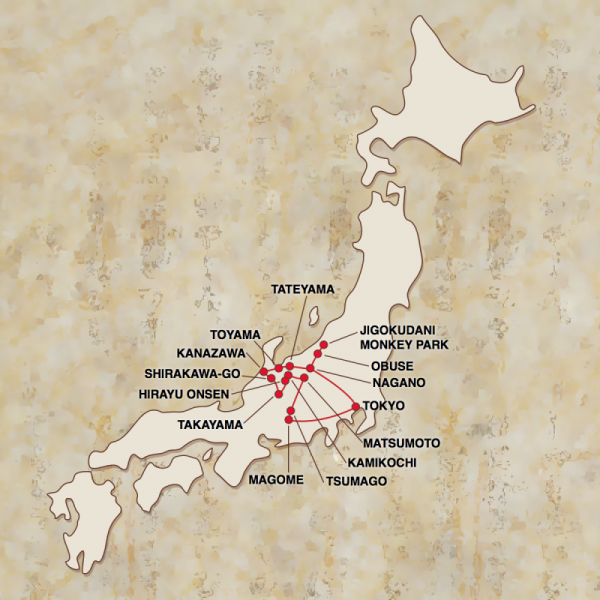
Tour Destinations
- Shirakawago
Day 1 Arrive in Tokyo
After clearing customs and immigration (which can take up to an hour and a half due to increased tourism to Japan), you will be met at Tokyo’s Narita Airport by a Samurai Tours meeting assistant. The meeting assistant will then purchase a limousine bus ticket for you and help you board the bus to the hotel. No meals are included.
Travel: 1-1/2 Hours; Walking: Light
Day 2 Travel to Magome; Overnight Magome
Before leaving Tokyo, you will need to prepare your luggage to transfer to Matsumoto. After breakfast, you will start the day with a Welcome/Orientation meeting. We start the day by traveling by Shinkansen (bullet train), express train and bus to the city of Magome. Magome and Tsumago were once major stops on the Nakasendo, a major highway through the Japan Alps built in the late 16th century. After the Tokkaido Highway was built in the early 17th century near the coast, Magome, Tsumago and the other towns along this highway became ghost towns. Tremendous efforts have been made recently to rebuild the memory and feel of these old settlements. After arriving in Magome and checking in, the rest of the afternoon is free. Breakfast at the hotel and dinner at the ryokan included.
Travel: 3 1/2 Hours; Walking: Light
Day 3 Walk along the Nakasendo to Tsumago; Tsumago - Tsumago History Museum, Wakihonjin Okuya, Honjin; Overnight Tsumago
After breakfast at the ryokan, we will arrange to have our overnight bags delivered from Magome to Tsumago (you will walk with day bags only), and we will walk the 5 miles from Magome to Tsumago along the route of the old Nakasendo highway. The old highway winds through quaint neighborhoods, old forests, along mountain streams and waterfalls as it makes its way to the historic city of Tsumago. There are even sections of the original highway still remaining. (For those who are unable to walk this far, you can take the bus either from Magome to Tsumago, or there is a bus available from the half-way point of the walk to Tsumago.) All of the electrical and utility lines have been removed and placed underground in Tsumago. You will feel like you truly stepped into 17th- century Japan and Tsumago is often used for filming period movies and television shows. First we will tour the Tsumago History Museum where we will learn the fascinating history of Tsuamgo and the surrounding area. Next we will tour the Wakihonjin Okuya where the retainers of the feudal lord’s party would stay, and the Honjin, where the feudal lords would stay. The rest of the afternoon is free to explore the picturesque and charming village of Tsumago before checking into our ryokan. Breakfast and dinner at the ryokan and lunch at a local restaurant are included.
Travel: N/A; Walking: Heavy
Day 4 Travel to Matsumoto; Matsumoto - Matsumoto Castle
After breakfast at the ryokan, we travel by express train to Matsumoto. From the moment you step off the train and hear the announcement “Matsumotooooo,” you will recognize you are someplace special. Matsumoto is unique because of its many beautiful Edo-period (17th-to-19th-century) Kura (warehouses) with their striking black-and-white contrasting latticework. Today these warehouses house restaurants and shops. After lunch, we tour the famous Matsumoto Castle. This beautiful castle is also known as Crow Castle because of its stark black walls. The castle was first built in 1504 and remodeled into its current form at the turn of the 17th century. Climbing to the top of the main tower, you will have a wonderful view of the city and the surrounding mountains. Breakfast and dinner at the accommodations and lunch at a local restaurant included..
Travel: 3 1/2 Hours; Walking: Medium
Day 5 Daio Wasabi Farm; Travel to Kamikochi; Overnight Kamikochi
Before leaving the hotel, you will need to prepare your main luggage to be sent to Takayama. You will be traveling to Kamikochi, Hirayu Onsen and Takayama with an overnight bag only. In the morning we will visit the nearby Daio Wasabi Farm. Here you can learn more about this Japanese condiment staple, while enjoying the many foods flavored with wasabi including ice cream. The farm is also famous for its river that flows though the farm with many watermills. The river appeared in the 1990 film, Dreams, by Akira Kurosawa in a segment called the “Village of the Watermills.” In the afternoon, we travel to Kamikochi by train and bus along an incomparable scenic route. Kamikochi, in the middle of the beautiful Chubu-Sangaku National Park, is only open from late-April until October because of the almost 30-feet of snow that falls in this area of Japan during the winter. As you approach Kamikochi, the valley opens onto a row of towering mountains, with the icy Azusa River flowing through the middle of the valley. Breakfast at the hotel and dinner at the ryokan are included.
Travel: 4 Hours; Walking: Medium
Day 6 Kamikochi Free Day
The day is free to relax and enjoy the beauty of Kamikochi. There are numerous gentle trails in the valley, and many trails leading to the surrounding mountains for the more adventurous. Breakfast and dinner at the ryokan is included.
Travel: N/A; Walking: TBD
Day 7 Shin Hotaka Ropeway, Overnight Hirayu Onsen
After breakfast, we travel by bus to Shin Hotaka Onsen, where, weather permitting, we will enjoy the scenery from the Shin Hotaka Ropeway. From the top of the ropeway at 2,200 meters (about 7,000 feet), you can get a beautiful view of the surrounding Japan Alps. After the ropeway, we will overnight at Hirayu Onsen. Breakfast and Dinner at the ryokans.
Travel: 2 1/2 Hours; Walking: Light
Day 8 Bus to Norikuradake, Travel to Takayama
After breakfast, we will continue by bus to Norikuradake, one of the highest mountains in the Northern Alps. And the road is one of the highest in Japan. Later in the afternoon, we will travel by buses to Takayama. Takayama, in the middle of the Japan Alps, with its traditional inns, shops, and sake breweries, has managed to retain its traditional charm. We will retrieve main luggage after checking into the ryokan. The rest of the day is free. Breakfast at the ryokan is included.
Day 9 Takayama - Miyagawa Morning Market, Jinyamae Morning Market, Takayama Jinya, Sanmachisuji District, Free afternoon
This morning we stroll through the farmer’s markets, sampling the numerous options from vegetable stands and stalls selling herbs, pickles, and souvenirs. After that, we tour the Takayama-jinya, which was the governing office of Takayama and the surrounding area since the early 17th century. The guide will take you to the San-machi-suji district, consisting of merchant homes dating back to the 16th century. For lunch, we will enjoy one of the many nearby Hida Beef restaurants. (Hida Beef is the same thing as the more famous Kobe Beef.) From here the rest of the day is free to roam and explore Takayama. Visit the many temples, shrines and museums, rummage through antique shops, or relax at one of the sake breweries. Breakfast at the hotel and lunch at a local restaurant are included.
Optional Tour – Takayama
¥ 11,722 After finishing the scheduled tour of Takayama at the Takayama Jinya, the guide will take you on a tour of the San-machi-suji District. Lined with merchant homes, sake breweries and craftsmen’s workshops, it was the center of the old town and today it still retains its quaint atmosphere. After enjoying lunch, we will continue to Sakurayama Hachimangu Shrine and Yatai Kaikan. Sakurayama Hachiman is the oldest shrine in Takayama and is beautifully constructed in unpainted wood design. Sakurayama Hachiman also sponsors the popular Takayama Festival. On our next stop to Yatai Kaikan, you will get to take an up-close look at the traditional and spectacular hand-carved floats that are displayed during the Takayama Festival.
Travel: 2 1/2 Hours; Walking: Medium
Day 10 Travel to Shirakawago; Shirakawago - Shirakawago Open Air Museum, Observation Deck, Free time; Travel to Kanazawa
Before leaving in the morning, we will transfer the main luggage to Toyama. You will travel with overnight bags to Shirakawago, Kanazawa and Toyama. You will need to prepare enough items for 2 days, 1 night. Today we travel to the valley of Shirakawa-go by public bus. Shirakawa-go is the home of many Gassho-zukuri (Praying Hand) style homes, which have been moved here from the surrounding area. These homes were first used as far back as the 18th century and are still being used today. We will tour the Shirakawa-go Open Air Museum where approximately 25 buildings from the surrounding area have been relocated. After visiting the Shirakawa-go Observation Deck, where you will have an opportunity to view the village of Shirakawa-go from above and some free time to explore Shirakawago on your own, we will continue on by another public bus to Kanazawa where we will stay overnight. Breakfast at the ryokan and lunch at a local restaurant are included.
Travel: 2 Hours; Walking: Medium
Day 11 Kanazawa - Kenrokuen, Nagamachi Samurai District, Nomura House, Higashi Chaya District, Shima Teahouse; Travel to Toyama
We begin the day touring the Kenrokuen Garden. This garden is considered to be one of the three best gardens in Japan and was initially constructed in the 17th century. After enjoying the garden, we will tour the Nagamachi District. This is the residential district where the samurai who served the nearby castle lived. At the Nagamachi District, we will tour the Nomura House. The Nomura Family was a high-ranking retainer for the Maeda Family, the feudal lord family who ruled Kanazawa and the surrounding area during the Edo Period. Next we will visit the Higashi Chaya district, the largest of the three geisha entertainment districts in Kanazawa. Here we will the the Shima Teahouse, a preserved teahouse converted into a museum. Later in the day, we travel by express train to the city of Toyama, the gateway to Tateyama. We will retrieve our main luggage after checking into the hotel. Breakfast at the ryokan and lunch at a local restaurant are included.
Day 12 Tateyama Alpine Route; Overnight at Tateyama
Before leaving for the day we will transfer luggage to Nagano or the airport. Prepare your overnight bag for 2 days and 1 night. We will be traveling by numerous forms of transportation through the Chubu Sangaku National Park. Here you will get a chance (weather permitting) for a view of the Tateyama Mountain Range. You will also have some time to go hiking around the alpine area above the treeline. Here you will not only enjoy the view of the surrounding mountains but the many alpine flowers as well, or you can just relax and enjoy the view. Breakfast and dinner at the hotel are included.
Travel: 1 1/2 Hours; Walking: TBD
Day 13 Tateyama Alpine Route; Travel to Nagano
Today we will finish our travels along the Tateyama Alpine Route. Along the way, you will have opportunities for short walks. In the late afternoon, we will finish our adventure across the Tateyama Mountain Range by taking the bus to Nagano. Breakfast at the hotel and bento box lunch are included.
Travel: 5 Hours; Walking: Medium
Day 14 Jigoku-dani Snow Monkey Park, Zenkoji Temple, Sayonara Dinner
After breakfast, we will travel by bus to the Snow Monkey Park. Here, at the Jigoku-dani (Hell Valley), we will delight in the world famous “snow monkeys” of Japan. The Red-Faced “snow monkeys” are only found in Japan, and during the entire year, the monkeys enjoy using the thermally-heated mineral water baths. We will return by bus to the city of Nagano where we visit Zenkoji, one of the most important and popular temples in Japan. It is said that the first Buddha statue brought to Japan is stored at Zenkoji. The original statue cannot be seen, but a copy of the statue is put on display every six years. The next time it can be seen will be in 2021. The large main hall of the temple was constructed in the early 18th century. After touring Zenkoji, we will return to the hotel before enjoying our Sayonara Dinner. Breakfast at the hotel and dinner at a local restaurant are included.
Travel: 3 Hours; Walking: Medium
Day 15 Return Home
You will be escorted to the Nagano station where you will travel on your own by Shinkansen and express train to Narita Airport to fly home. Breakfast at the hotel included.
Walking level descriptions: Light – 0 to 2 miles on level ground Medium – 2 to 4 miles on level ground or 0 to 2 miles on hilly ground Heavy – 4 to 6 miles on level ground or 2 to 4 miles on hilly ground
Dates & Pricing
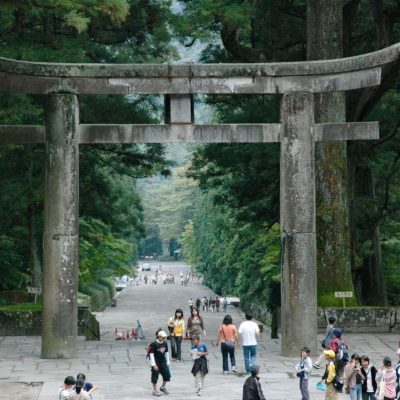
Our tours and tour itineraries are the best, but as the saying goes, “you can’t make everyone happy all of the time”. There may a specific destination or a specific experience you may want to include in your visit to Japan that may not be included your tour. Choose from our Add On tours to include your interests and make your Japan tour even better.
Click HERE to view all of the Add-On Tours.
Or, use the arrows to scroll though the recommended list of Add-On Tours for this tour.
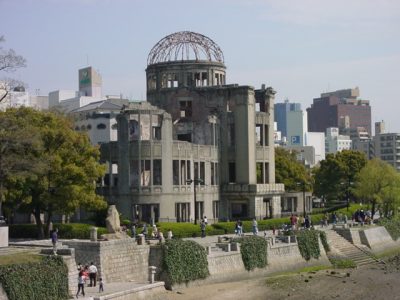
- Local, licensed, English-speaking, Japanese guides
- For residents of the following states please click here for your available plan. FL, KS, MN, MO, MT, NY, and WA
- For all other states and the District of Columbia click here
- Up to 69 – $0
- 70-74 – $104
- 75-79 – $180
- 80-84 – $331
- Travel Insurance Opt-Out: If you would prefer to opt out of the travel insurance, please note this at the time of registration. You will receive a $100 credit per person, which will be reflected on your invoice. In the event that you would need to cancel your tour, cancellation penalties may apply. See the Terms and Conditions page for the Cancellation Fees Schedule.
- The meeting service will meet you at the airport and provide you a transfer to the hotel in Tokyo
- The sending service will escort you to the Nagano train station and make sure you board the correct train. The sending service will not accompany you to the airport.
- For those requiring meeting or sending services on other than the scheduled arrival/departure dates, there will be a $100 fee for the meeting service from the airport into Tokyo or the sending service to the Nagano train station.
- Lodging for 14 nights in western-style hotels or Japanese-style ryokans
- Japanese-style or Western-style breakfast every morning(Please Note: Some ryokans offer Japanese breakfasts only.)
- Six Japanese-style luncheons including a Hida Beef lunch
- Seven Japanese-style or western style dinners (including 5 Kaiseki-style dinners)
- The appropriate amount of free time to allow you to explore and discover your own personal Japan.
- All transportation costs when traveling with the group. (Transportation costs during scheduled free times are the tour member’s responsibility)
- Electronic version of itinerary
- Admission fees to the destinations and activities listed in the Tour Highlights column on the right. (itinerary specifics subject to change)
- Sayonara dinner at the end of the tour
- Baggage transfer from Tokyo to Matsumoto (one bag only) Baggage transfer from Matsumoto to Takayama (one bag only) Baggage transfer from Takayama to Toyama (one bag only) Baggage transfer from Toyama to the airport OR Nagano (one bag only)
Each tour member receives an electronic copy of our tour handbook. This handbook is full of tips and suggestions taken from our Japan travel experiences that allow you to better plan and prepare for your trip, and therefore enjoy your trip even more. The tips and suggestions included cover everything from how to save while exchanging money, what to pack, some basic Japanese-language tips, general etiquette dos-and-don’ts, ryokan customs, etc.
- Airfare is NOT included.
heather sandifer
Thank you for your feedback on our tours! We’re so sorry you were not feeling well during your tour, and perhaps missed the best part about Japan- the food! We appreciate the time you took to respond and hope to see you again soon!
~ Samurai Tours Staff
Therese Rowley
Excellent. We would highly recommend you and book with you again.
________________________________________________
Thank you so much for the kind comments and high ratings of our tour! We are so glad you had a good time, despite the hiccup with your rail pass. We would love to see you again in Japan!
Elizabeth Elsaesser & Bradley Reeg
Loved it, a wonderful trip
Related Tours
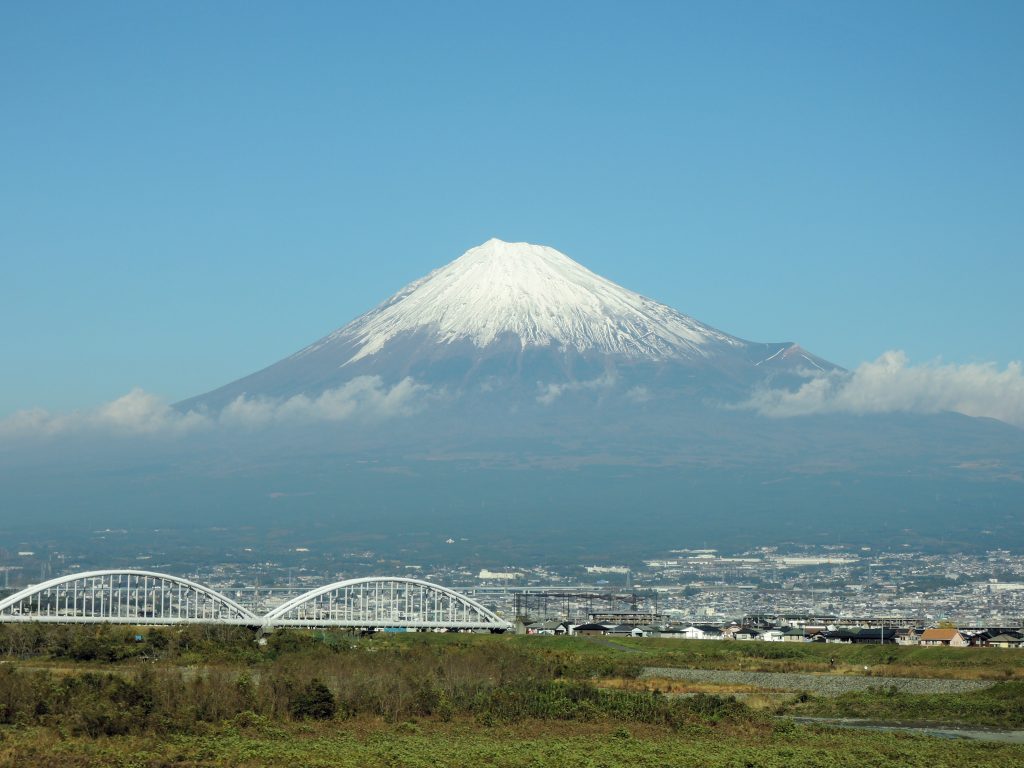
Golden Route
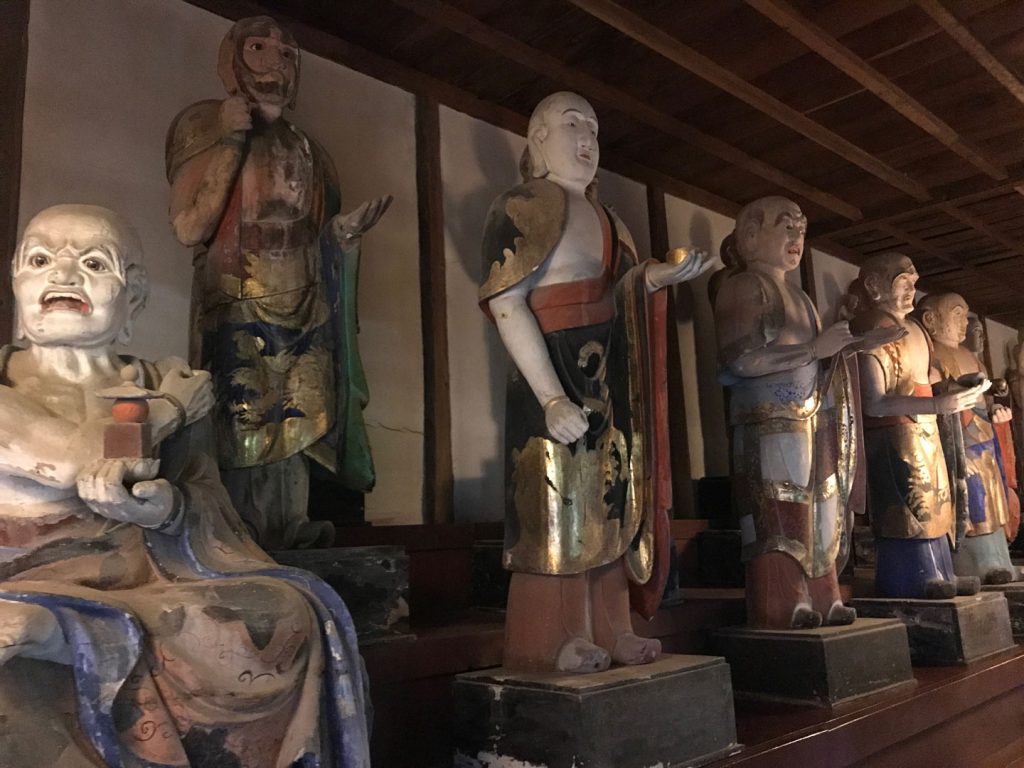
Shikoku 88 Temple Pilgrimage – Part 2
- Skip to main content
- Skip to primary sidebar

Destinations
- Plan Your Trip
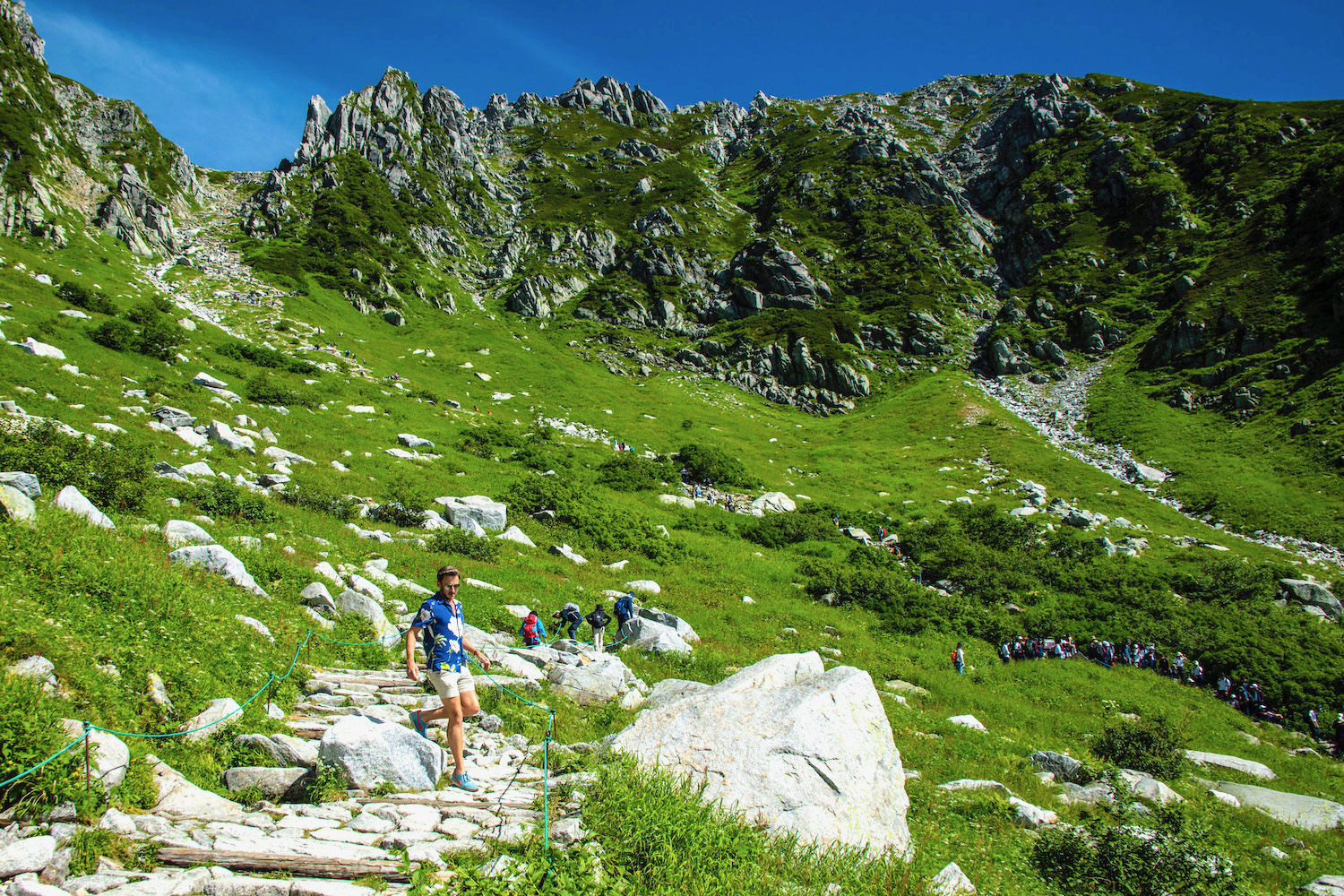
Discover the Japanese Alps
Putting together a Japanese Alps itinerary is difficult first and foremost because the region is so huge and varied. It’s also highly seasonal—you can walk through a “snow tunnel” on the Tateyama Kurobe Alpine Route in June, then hike amid wildflowers there literally weeks later in July.
Over the next few paragraphs, I’ll do my best to break down the various destinations and experiences within the huge and diverse part of Japan. Furthermore, I’ll place this in the context of the best time to visit the Japanese Alps (although, rest assured, this is definitely a 365-day part of Japan if there ever was one).
To be sure, regardless of when you want to see the Japanese Alps and what you want to do when you arrive, there’s something for everyone here. I’ve been several times and still have a long bucket list of Japan Alps experiences to conquer!
Where to Stay in the Japanese Alps
Regardless of what you end up doing during your Japan Alps itinerary, it’s essential to decide a places (or two) that will be orient you for sightseeing. Assuming you don’t actually stay in the mountains (at ryokans such as Naka-no-Yu or Kintarou Onsen ), here are some cities and towns the make great home bases:
- Nikko: Often seen as a day trip from Tokyo, the mountain town of Nikko (which its the gateway to ancient Tosho-gu Shrine) is the perfect base for Alpine sightseeing, particularly during autumn, when nearby Kegon Falls is absolutely resplendent.
- Matsumoto: This city, which is home to one of Japan’s 12 original castles, is a personal favorite of mine, and provides easy access to Kamikochi Scenic Area, the Nakasendo Way and both Nagano city and sightseeing within the prefecture, including the famous snow monkeys.
- Nagano: Assuming you don’t decide to stay at a ski resort (the Nozawa Onsen area is popular) for a trip on the slopes, Nagano city is a great base in all seasons—whether you take day trips to go skiing in the winter, or hiking excursions during the warmer months.
- Takayama : Located approximately halfway between Matsumoto and Kanazawa, Takayama is both a stunning place to stay, as well as a good base for sightseeing. It’s just as easy to access hikes and walks as it is to see heritage, most notably the haunting town of Shirakawa-go.
- Toyama : The city closest to the Tateyama Kurobe Alpine Route has a few other advantages, namely that it’s less than two hours from Tokyo by Shinkansen . One great way to work Toyama into a trip is to stay one night in a Toyama city hotel, then travel the Alpine Route and stay in Nagano on night two before heading back to Tokyo on day three.
- Kanazawa : Another sentimental favorite city of mine is Kanazawa, which is sometimes known as “Little Kyoto” because of its Geisha districts and general historical aesthetics. Coastal Kanazawa itself isn’t very Alpine, though you can easily access higher elevations—namely, in the form of a day trip to nearby Natadera temple.
Keep in mind that, depending upon how long you spend in the Japanese Alps, you don’t necessarily need to just stay one place. If you have a couple of weeks, for example, you could divide your time between Matsumoto or Nagano, and Toyama or Kanazawa.
My Favorite Things to Do in the Japanese Alps
Hike on any day of the year.
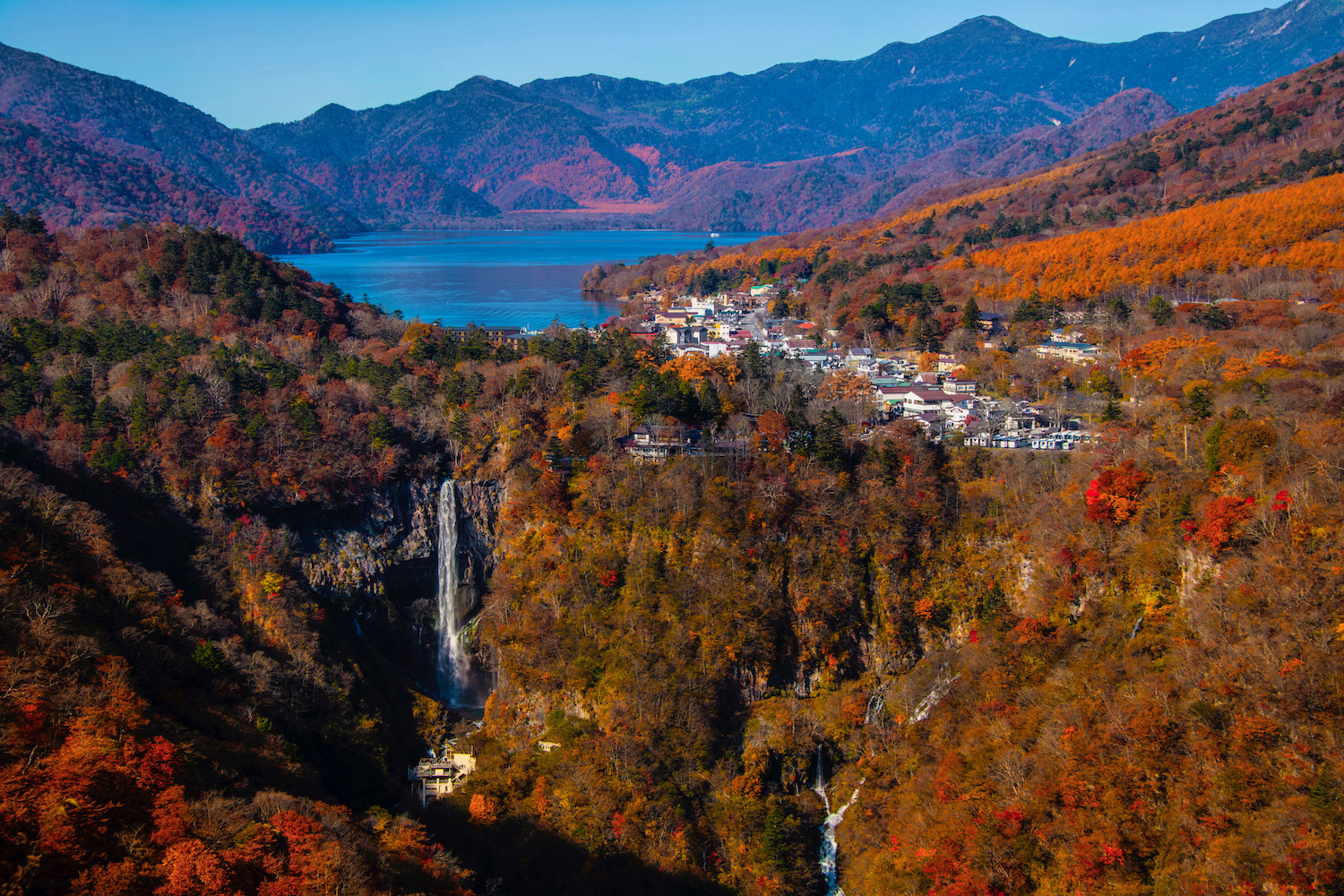
Whether day treks along aforementioned destinations such as the Nakasendo Way , Kamikochi Valley and Chuo Alps Senjojiki Cirque near Matsumoto , or glorified walks up staircases that lead to the temples in Nikko or Takayama , hiking is one of the best activities to enjoy in the Japanese Alps. And this is true in all seasons: I find it as pleasurable to spot wildflowers along the Tateyama Kurobe Alpine Route as I do to watch the snow fall from Ogimachi Observatory in Shirakawa-go .
Discover heritage cities and towns
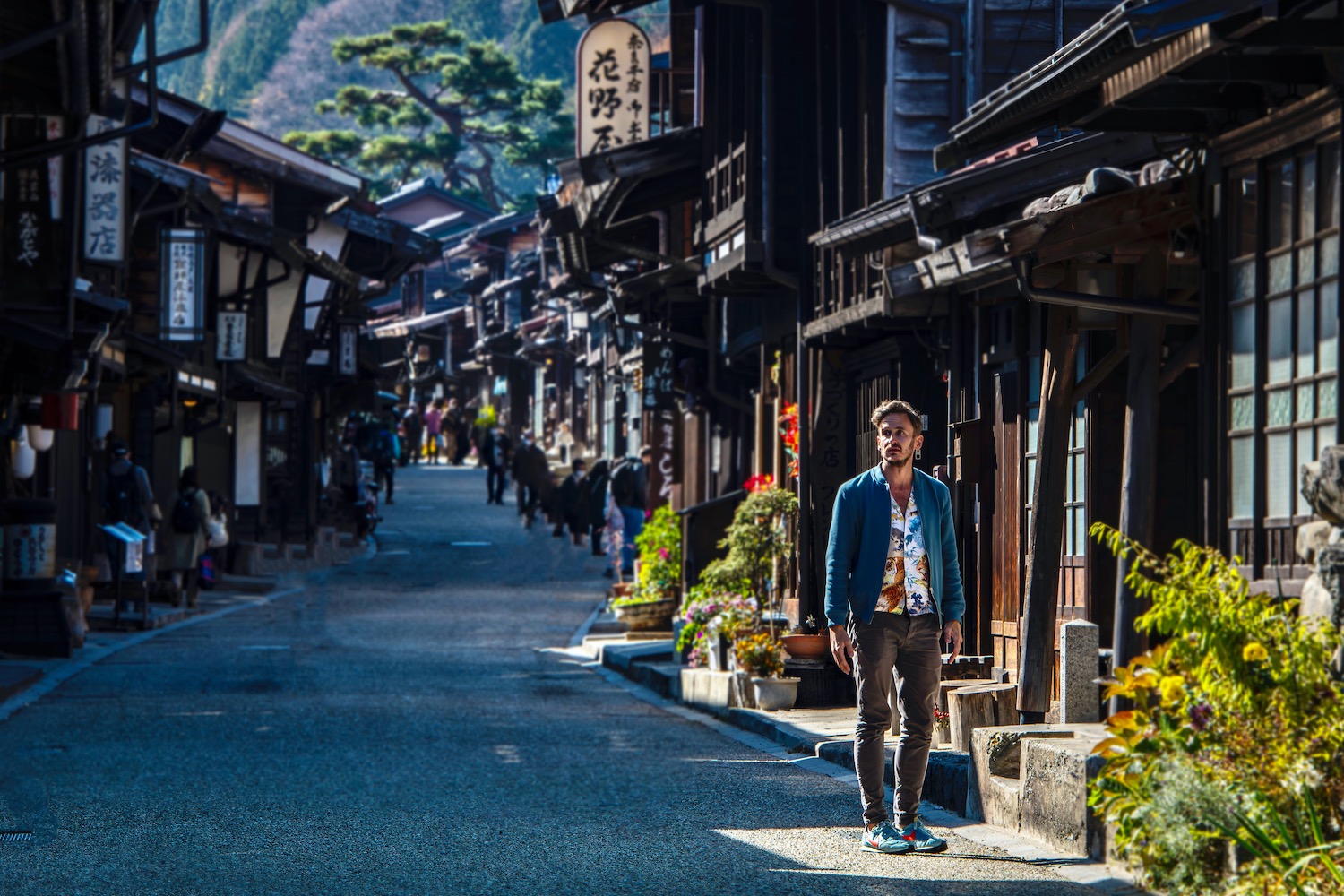
In spite of being an ostensibly natural area, the Japanese Alps are absolutely full of history. The Nakasendo Way , which I’ve mentioned several times already, was once a trading route between Kyoto (when it was the capital of Japan) and Edo (the name of Tokyo back then). Other worthwhile historical destinations include aforementioned spots such as Shirakawa-go and its famous Gassho farm houses, and Nagano and Matsumoto cities themselves, which are often overlooked, but which you should definitely scrutinize (if only for Zenko-ji temple and Matsumoto Castle , respectively).
The journey—and the destination
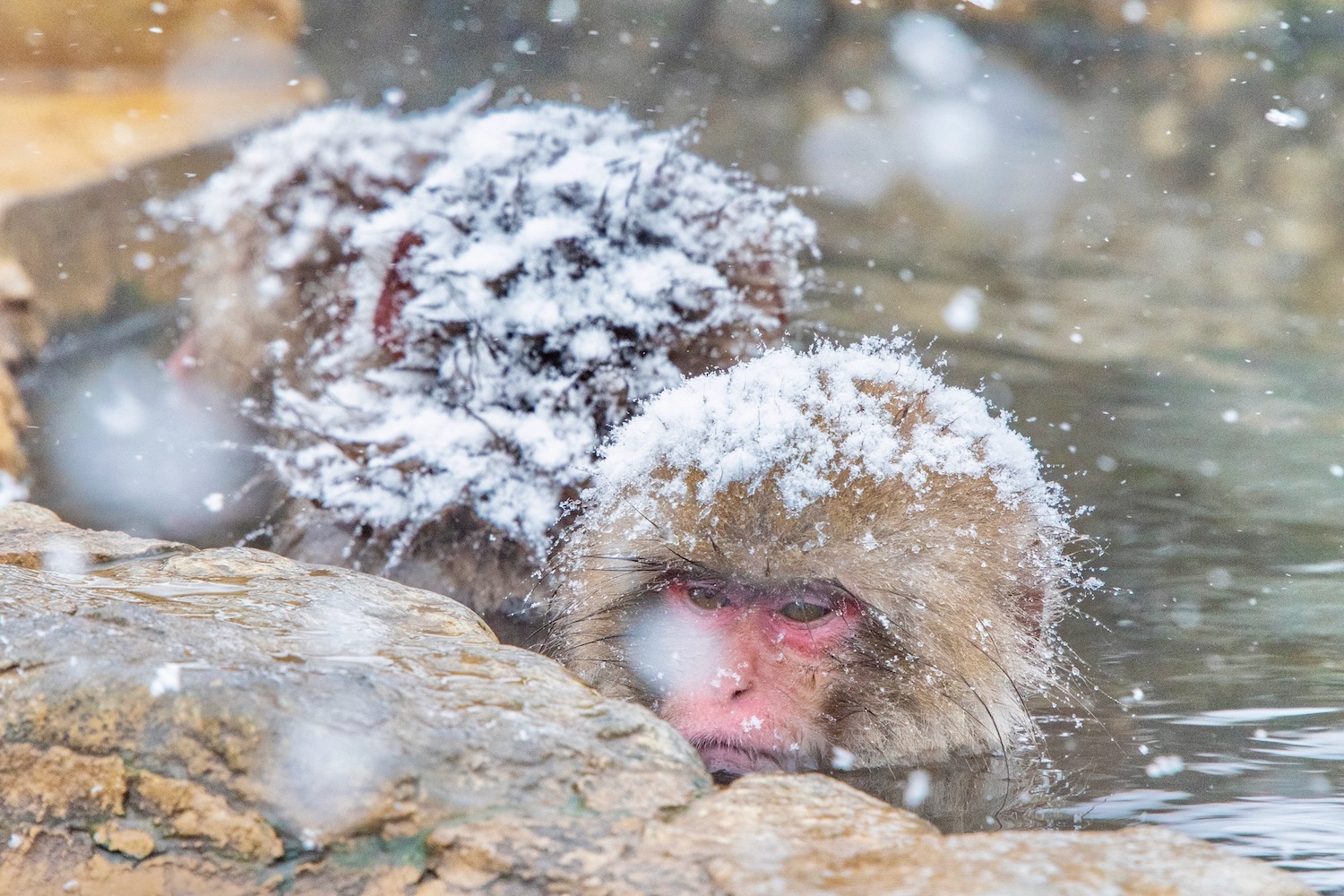
Regardless of what I do on my Japanese Alps itinerary and where I go, there’s something to be said about prioritizing both the journey as well as the destination. Whether this is on foot (walking between Nakasendo towns like Magome and Tsumago ), by train (riding the aptly-named “Wide View” Shinano between Nagoya and Nagano) or even going down a ski slope (if that’s your thing), the Japanese Alps exemplify that the journey is necessarily as important as the destination.
Enjoy the snow (on or off skis)
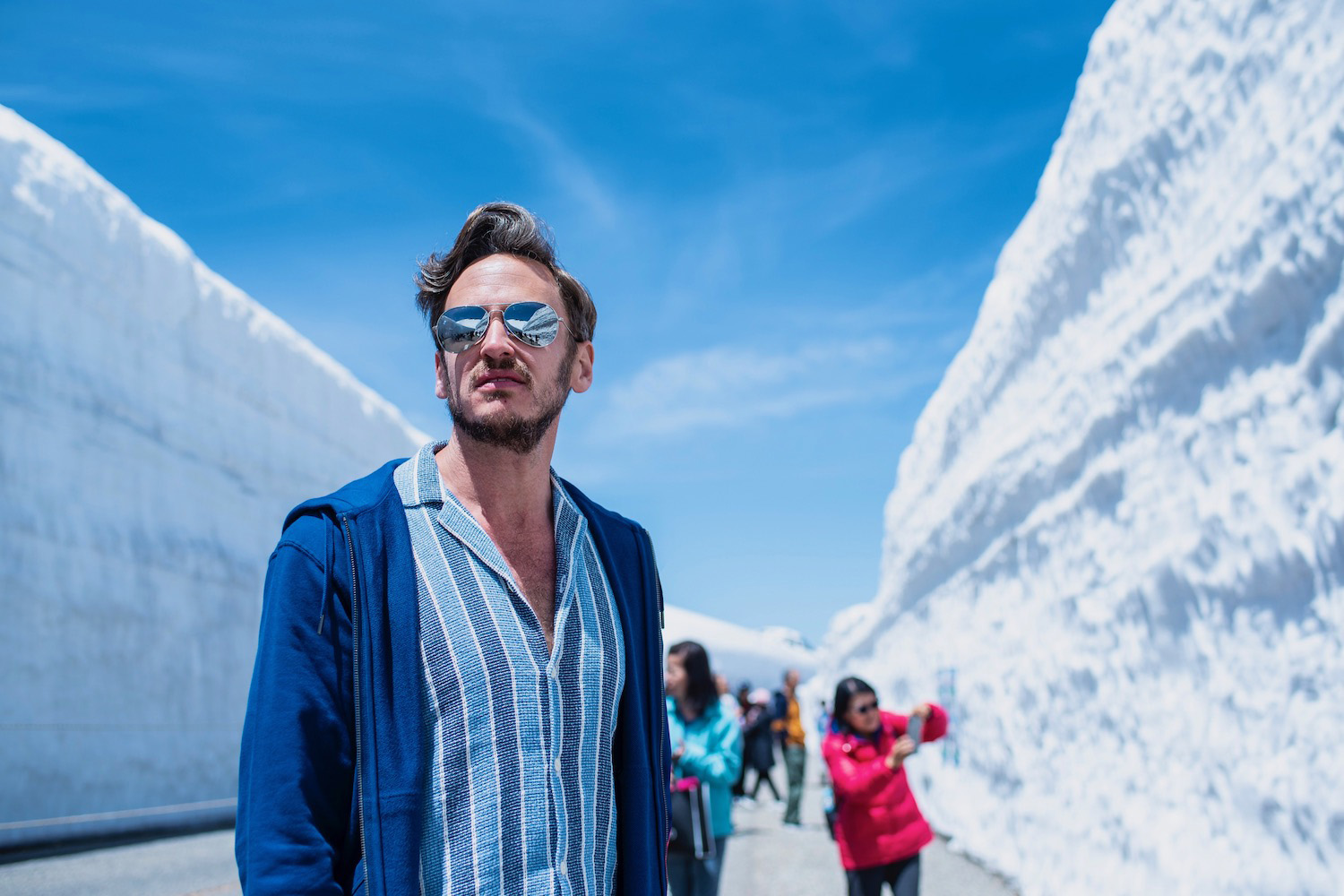
I’ll be honest: I don’t ski—and for good reason. Still, I enjoy winter in Japan as much as anyone, largely because of my interests as a photographer. As luck would have it, the Alps are one of the snowiest regions in Japan, whether that’s in the city centers of Matsumoto , Nagano and Kanazawa , or on the trail the leads to the snow monkeys of Jigokudani , which most reliably live up to their name during the months of January and February. There’s also the unique Snow Tunnel in Murodo , along the Tateyama Kurobe Alpine Route .
Focus on all four seasons

Although the highest parts of the Japanese Alps are basically either snowy or summery, the region as a whole enjoys a similar diversity of seasonal weather and landscapes as the rest of the country. If you’re in Toyama , for example, you can head to the Asahi Funakawa Spring Quartet in—surprise—spring to see sakura and tulips beneath the mountains. Kurobe Dam (also in Toyama) in one of the best places, meanwhile, to enjoy autumn colors.
Best Time to Visit the Japanese Alps
Judging from the pictures I’ve posted, it can seem very much like I’m trying to sell you on a Japanese Alps winter itinerary (or, perhaps, an autumn one). While I’ll admit that these are two of my favorite times to visit the Japanese Alps, it is worth a trip most any time of year. Hiking along the Tateyama Kurobe Route or in the Kamikochi Valley, for example, is definitely at its best amid the warm air of summer, and when wildflowers are blooming.
Speaking of blooms, there are also plenty of opportunities for cherry blossom viewing in the Japanese Alps, even if predicting the date of mankai (full bloom) gets more difficult the higher up in elevation you go. With this being said, if you do come during the second or third week of April, you hit something of a sweet spot: A good number of blossoms at Matsumoto Castle and, say, at Zenko-ji in Nagano city, with enough snow still up in the mountains for the snow monkeys to live up to their name!
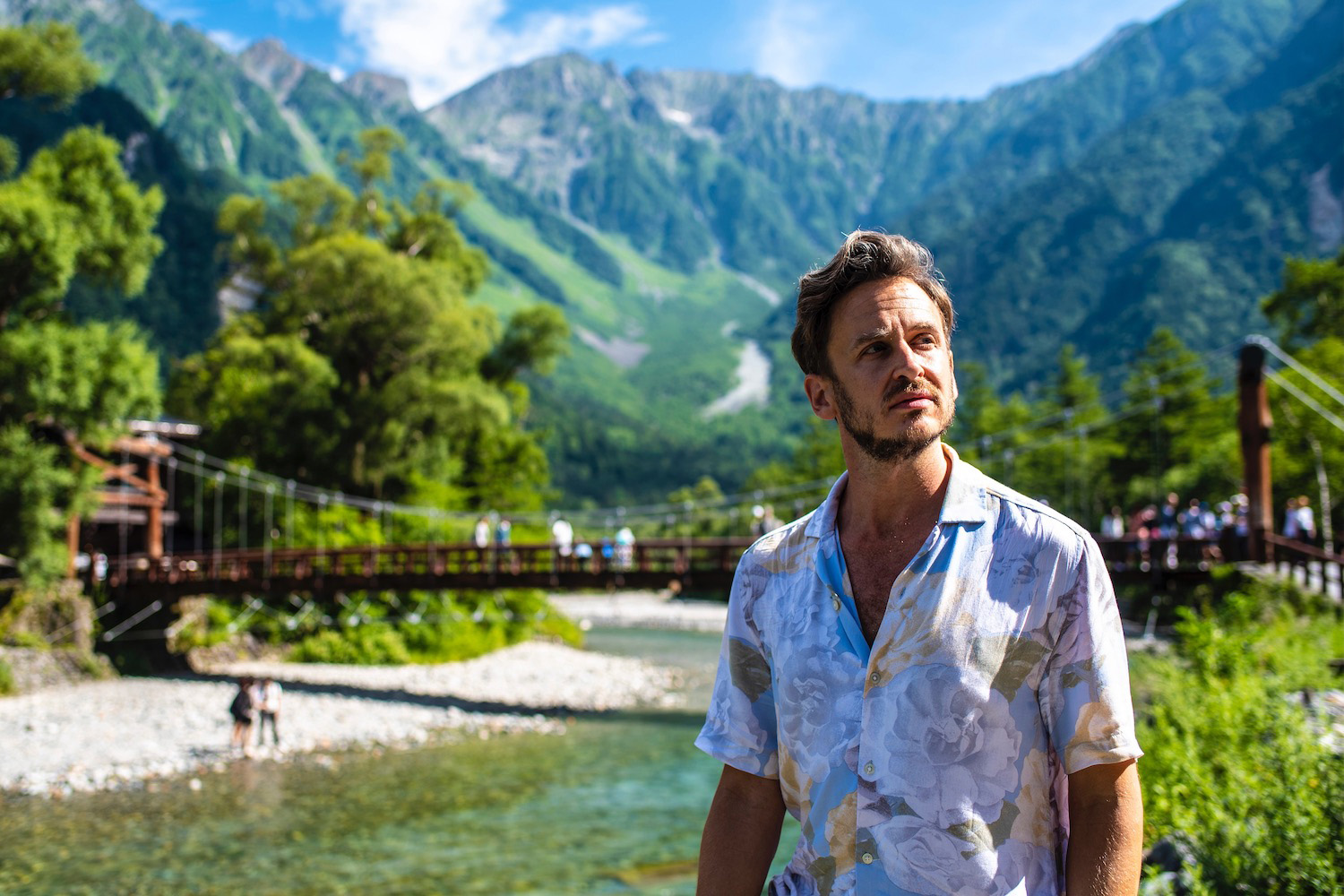
Other Mountains in Japan
The Japan Alps are the most famous mountain range in Japan (and the most convenient to cities like Tokyo and Nagoya), but they’re not the only game in town. Here are some other places to get your elevation fix in Japan:
- Mt. Niseko in Hokkaido
- Mt. Aso in Kyushu
- Mt. Zao in Yamagata
- Mt. Daisen in Tottori
Another obvious choice (which, perhaps not as obviously, is not part of the Japanese Alps) is Mt. Fuji, which you can climb or see from ground level in the Fuji Five Lakes region.
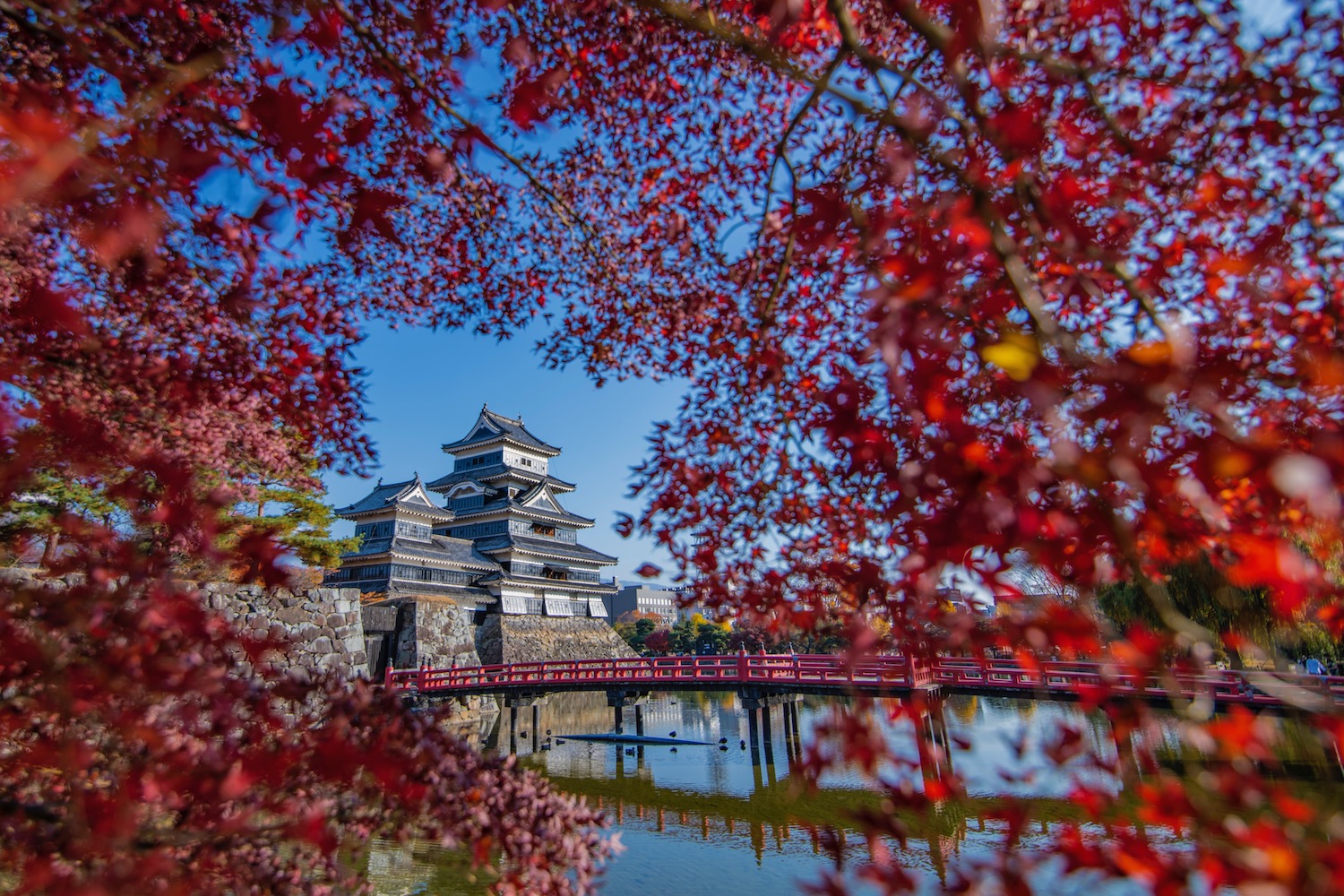
Other FAQ About Visiting the Japanese Alps
What are the japanese alps called.
In Japanese, the Japanese Alps are called Nippon Arupusu (日本アルプス), which literally means “Japan Alps.” Sometimes, Japanese people simply refer to them as Arupusu , when it’s clear they are not making any reference to Alpine mountain ranges in Europe.
Is Mt. Fuji part of the Japanese Alps?
From a travel and tourism perspective, Mt. Fuji and the Fuji Five Lakes region are distinct from the Japanese Alps. While Fujisan is part of the Tokai region, and generally accessed from on or near the coast, most Japanese Alps tourism begins in cities of the Hokuriku region like Toyama or Kanazawa, or from Nagano prefecture, which is deep inland.
Where can I see Japanese Alps?
The most popular places to see the Japanese Alps are the Kamikochi Nature Area near Matsumoto city in Nagano prefecture, the Nakasendo Way hiking trail between Nagoya and Nagano and the Tateyama Kurobe Alpine Route, which runs between the cities of Toyama and Nagano. If you simply want to see the mountains and not hike or trek in them, you can view them on most domestic flights between Osaka or Fukuoka and Tohoku or Hokkaido.
The Bottom Line
Whether you navigated here in search of a complete Japanese Alps itinerary, or simply wanted inspiration for a hiking, skiing or autumn color trip, I’m confident you’ve found what you were looking for. To be sure, I’ve not only talked through some of my favorite summer hikes in the Japanese Alps, or the best places in the Japan Alps to see autumn colors, but I’ve weighed the pros and cons of different base cities and towns, and been honest about my own favorites times to visit. Still aren’t sure exactly when you should travel to the Japanese Alps, or where you should go? Commission a custom Japan itinerary , and let me sweat the details!
Plan Your Japan Trip

Subscribe to email updates!
Words, images and design ©2018-2024 Robert Schrader, All rights reserved. Read Privacy Policy or view sitemap .
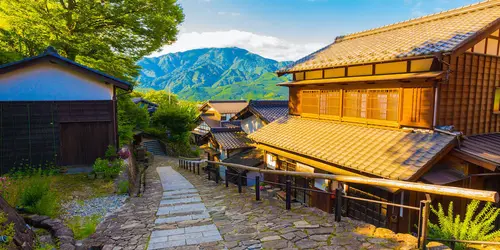
Hike on the Nakasendo road, between Tsumago and Magome in Japanese Alps
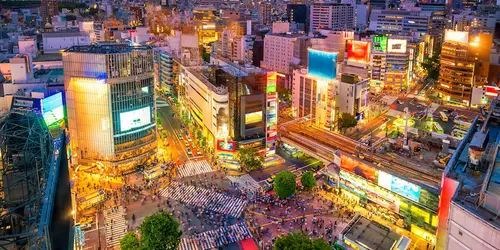
Worldwide famous Shibuya crossing, Tokyo
©Wasin Pummarin/123RF
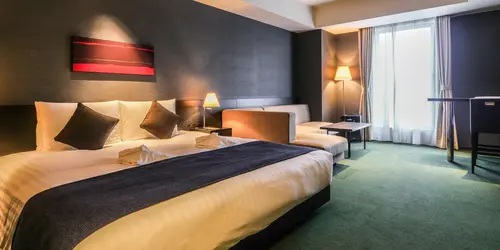
Indulge yourself with a move upmarket in an equivalent 4 * hotel (optional)
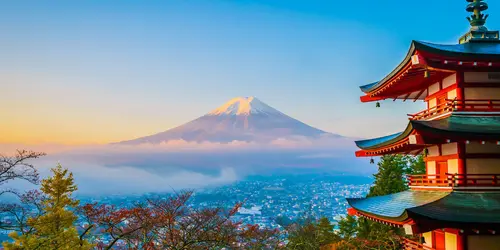
Mount Fuji from Kawaguchiko pagoda
©siraphol/123RF
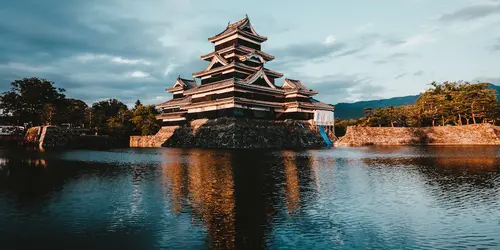
Matsumoto Castle, also known as the "Crow Castle" due to its black exterior
©Claire Chang/123RF
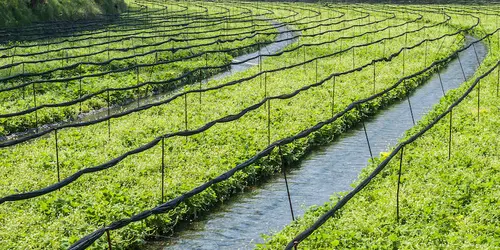
Wasabi Farm in Matsumoto area
©faula/123RF
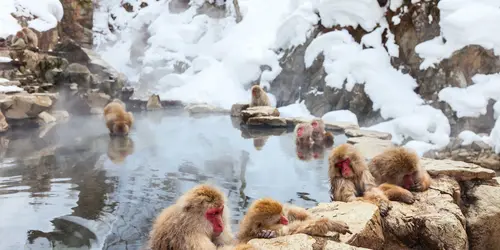
Famous Snow Monkeys to meet in Nagano area
©BlueOrange Studio/123RF
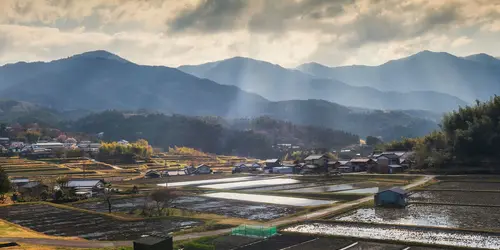
Japanese countryside in Japan Alps
©blanscape/123RF
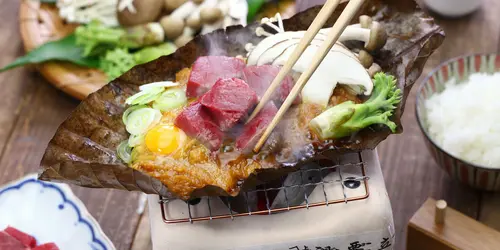
Enjoy tasty Hida beef in Takayama
©cokemomo/123RF
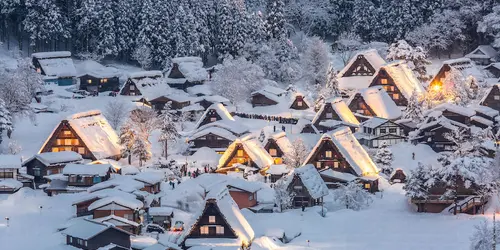
Shirakawago, a Unesco World Heritage village in the Japanese Alps
©vichie81/123RF
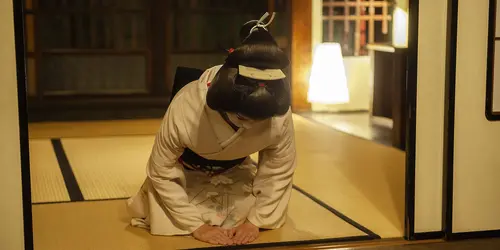
Kanazawa's geisha district invites you to take a timeless stroll, among its ancient alleys
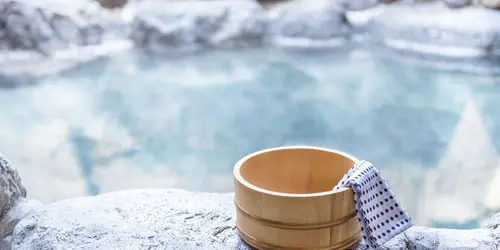
Onsen - Japanese hot springs
©Keisuke Kai/123RF
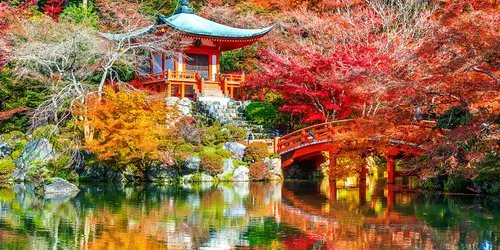
Temple in Kyoto during Fall season
©Tawatchai Prakobkit/123RF
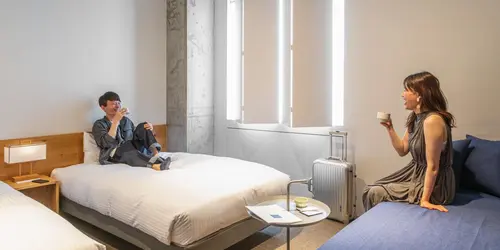
Enjoy comfortable 3 * hotels, well located, with impeccable Japanese service
©Tsugu 京都三条 Kyoto
- Travel insurance
- Japan Experience
The Japan Alps
- Duration : 18 days
- Locations : Tokyo, Kawaguchiko, Matsumoto,Tsumago,Takayama, Shirakawago, Kanazawa, Kaga Onsen, Kyoto
- Add to favorites
This Japan tour takes you to the heart of the Japanese mountains.
A tour in the Japanese Alps means discovering a less touristy, more unspoilt and traditional Japan .
Not forgetting the must-sees: Tokyo, Mount Fuji and Kyoto . Enjoy a guided tour of Matsumoto Castle or a visit to Kyoto's geisha quarter in this tour package.
18 day itinerary from Tokyo to Kyoto, crossing Mount Fuji and the Japanese Alps :
- Departure city/airport : Tokyo (Narita : NRT or Haneda : HND )
- Tokyo (3 nights)
- Kawaguchiko - Mount Fuji (1 nights)
- Matsumoto and surroudings (3 nights)
- Tsumago (1 night)
- Takayama (2 nights)
- Kanazawa (3 nights)
- Kaga Onsen (1 night)
- Kyoto (3 nights)
- End Return airport : Osaka (Kansai international airport : KIX )
Please find below the itinerary details.
Tour length : 17 nights / 18 days (+ 1 day at the beginning if you leave from Europe)
Indeed, the tour departure and end dates presented on this page relate to your stay in Japan. On departure, you will have to leave Europe on the day before. The return flight is on the same day due to the time difference.
Example :
- Departure from Europe : January 1st
- Arrival Tokyo (date to be selected in the tour calendar while booking ) : January 2nd
- Return flight from Kansai international airport : January 19th
Interested in this tour but limited to 2 weeks in Japan?
The " Path of the Samurai " and " Zen and Wellness " tours pass through most of the places on this tour in a shorter time frame.
Why this trip to Japan?
- Welcomed at the airport by our team, you will be taken to Tokyo by shuttle bus
- Head for Kawaguchiko, in the Five Lakes region below Mount Fuji
- In Matsumoto, Sylvain is waiting to take you on a samurai experience at the foot of the castle
- Several nights in traditional accommodation (ryokan, minshuku, house) in the Japanese Alps
- Continue towards the Sea of Japan, passing through a typical Japanese mountain village
- Finish in Kyoto, where a guided tour of the Gion district awaits you at nightfall
- Take advantage of your transport passes : Japan Rail Pass, Mount Fuji Pass, Shirakawago bus..
- On the final day, a shuttle bus will take you from your accommodation to the airport
- Enjoy unlimited internet access thanks to your pocket Wi-Fi
- If needed, contact our bilingual Japanese/English-speaking assistance team available 7/7
- Numerous guided days or other optional activities available
- Benefit from the expertise of Japan Experience , European leading travel agency in Japan.
Your trip in detail
Day 1 : wake up in tokyo 東京.
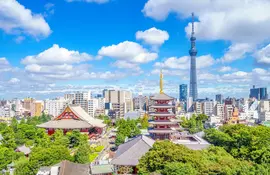
Senso-ji temple in Asakusa with Tokyo Sky Tree behind, a must-see on your first days to visit Tokyo
©Chan Richie/123RF
Arrival at Tokyo airport (Narita or Haneda). Welcome to Japan! Yokoso 日本へようこそ!
Welcomed out of customs by our airport assistant, who will give you all your travel documents and Pocket WiFi. Unaccompanied transfer from the airport to Tokyo (see details).
This transfer is done in a shared shuttle or bus, with other guests departing for the same hotel or a hotel close to yours. These transfers depart between 1.5 and 3 hours after your scheduled flight arrival and stops can be made before your hotel.
If you would like a private, non-stop transfer directly after the actual arrival of your flight, feel free to take the "Private Taxi from the Airport" option.
Check-in at Hotel OMO3 Tokyo Akasaka by Hoshino Resorts or same category hotel 3* (rooms available from 3:00pm).
Day 2 : First steps in the capital

Crepes in a shop in Harajuku, Tokyo
©Dick Thomas Johnson/Flickr
What is there to do in Tokyo on the first day?
We advise you to slowly start visiting Tokyo from its western districts: - Harajuku: the avant-garde district - Meiji Jingû, the imperial shrine - Takeshita-Dori: the most famous street in Japan - Omotesando: Tokyo's Champs-Élysées - Shibuya and its unmistakable "crossroads"
One of our many experienced English-speaking guides can also accompany you to visit the classic sights of Tokyo (optional, from 9:00 to 17:00).
Day 3 : The big loop
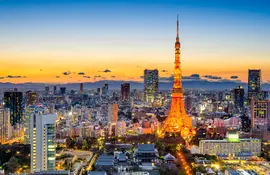
Tokyo tower by night
©Sean Pavone/123RF
For this second day of visiting Tokyo, we recommend the following "loop". Start from Tokyo Central Station, with its original architecture, then go to visit: - Ginza, Tokyo's chic district - Tsukiji, the small outdoor food market - Hamarikyu, the Japanese garden between Tokyo's buildings - Asakusa, a traditional district and place of pilgrimage, accessible by a cruise on the Sumida River - Sensô-ji Buddhist temple, one of the oldest in the city - Tokyo Sky Tree, reaching a height of 643m, and its panoramic view of Tokyo at sunset
Enjoy a cruise on the Sumida River between Hamarikyu and Asakusa.
Day 4 : A breathtaking view of Fuji
Mount Fuji from Kawaguchiko pagoda at sunset
©Clément Sabatier/123RF
We advise that you have your luggage sent to the hotel in Matsumoto (details in your travel diary, check with the hotel reception) and that you travel light for your night in Kawaguchiko. Reach Tokyo Station and and board a train to Kawaguchiko (3 hours journey, 1 change, all included) The train will gradually leave the Japanese megalopolis behind and head deeper into the valleys of the Mount Fuji region. You will arrive in Kawaguchiko in the late morning.
Go to your hotel near the station and Lake Kawaguchi to drop off your small bag and explore the Five Lakes region: - Pass through the Chureito pagoda, one of the best photo viewpoints on Mount Fuji. - See Mount Fuji from the lakes and the many viewpoints in the area. - Take the Kachi Kachi Ropeway to see the beautiful panoramic view of the lake on one side and Mount Fuji on the other.
All transport is included in your Mount Fuji pass.
The pass also includes many discounts at local attractions, such as the famous Fuji-Q Highland theme park.
You can also rent a bicycle for half a day to visit Kawaguchiko and Mount Fuji.
Day 5 : Nature and mountain lakes
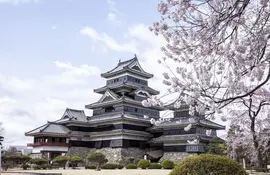
Matsumoto Castle in Matsumoto city in the heart of Japan Alps during cherry blossom (sakura)
Breakfast at the hotel.
Enjoy Kawaguchiko and its region before leaving in the middle of the afternoon for your next destination in the heart of the Japanese Alps: Matsumoto (3 hours 30 by train, 2 changes, all inclusive).
Arrive and check into a city centre hotel, between the station and the castle.
Day 6 : The Samurai Castle
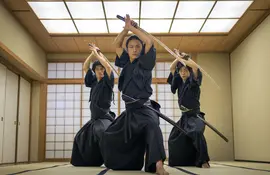
Japanese martial arts athlete training samourai kendo
©Fabio Formaggio/123RF
Matsumoto has preserved many traces of its prosperity from the feudal period. But the most striking feature of a visit to the town is its imposing castle, known to the Japanese as "the crow" because of its black colour. It is the oldest of its kind in Japan and its keep offers a stunning view in all seasons. Matsumoto was also an industrial and commercial city, and has preserved its typical Meiji era workshops in the Nakamichi district.
Included: Enjoy a private guided tour of Matsumoto city for half a day. Discover the feudal castle, the historical districts... and step into the shoes of a samurai for a morning with Sylvain, Japan Experience guide. In English or French. Please note that for some trips in peak season, this half-day guided tour in Matsumoto may be replaced by a half-day guided tour in Tokyo or Kyoto.
2nd night in the hotel in Matsumoto.
Day 7 : Mountain air

©Jordy Meow
There are several choices for this day: - Continue visiting Matsumoto, including its famous japanese prints Ukiyo-e museum. - Discover a wasabi farm nearby. - Go for a day in the region of Nagano, famous for having hosted the Winter Olympic Games, (1 hour by train, included in your package): in the morning, visit the famous Zenko-ji temple then the natural site of Jigokudani with its monkeys that play in the hot springs (optional). - Kamikochi, in the summer season, will bring you a breath of fresh air in the middle of the Japanese mountains! Last night in your hotel in Matsumoto.
Day 8 : Japanese Villages
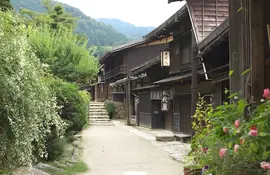
Old traditional houses in Tsumago village, in the heart of Japan Alps
In the morning, we advise that you have your luggage sent to the hotel in Takayama (details in your travel diary, check with the hotel reception) and that you travel light for your night in Tsumago .
Leave for Tsumago, one of the most beautiful villages in Japan , in the heart of the Kiso Valley. The train (2 hours, included in your package) runs through this narrow, densely wooded valley. Halfway along the route, we recommend a stop in the small hidden village of Narai, with beautiful houses dating from the Edo period. Upon arrival in Tsumago, you will reach your minshuku accommodation (comfortable family inn, halfway between ryokan and guesthouse) on foot (45 minutes through the mountains) or by bus (10min, bus ticket available from the driver, about €2, details in your travel guide). Tsumago is a listed village with traditional architecture. Preserved from modernity, it has preserved its character as a stopover town along the Kyoto - Tokyo road from the Edo period (1603 - 1868): the Nakasendo . A visit to the Honjin (with its delightful moss garden), Wakihonjin and Shiryôkan complexes is particularly interesting and relaxing. In the evening, dinner at your hostel.
Day 9 : Trekking on the Nakasendo trail
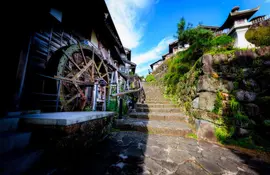
Walk the Nakasendo road, between Tsumago and Magome in Japanese Alps
Breakfast at your hostel.
Hike along the Nakasendo River to Magome (8km, with major elevation changes: from 420m (Tsumago), to the Magome-Toge pass (800m) and back down to Magome (600m). Allow 3 to 5 hours.). A bus also allows you to reach the pass or go directly to Magome (in 30min, €5, purchase from the driver) to avoid the climb or the whole hike. There is also a luggage transport service with the tourist office. After arriving in the small village of Magome at noon and taking a stroll in this picturesque village , you will reach Nakatsugawa station (bus, 25min, €4.50 to be paid to the driver) then Takayama (4 hours, 1 change, all included with your JR Pass). Arrive in Takayama in the evening at your comfortable hotel near the station. You will be able to relax after a busy day with your head full of memories.
Day 10 : The charm of the Japanese mountains
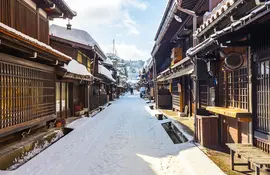
Old streets in Takayama, Japanese Alps
©NATTEE CHALERMTIRAGOOL/123RF
Enjoy the charms of Takayama , a medium-sized city and the "capital" of the Japanese Alps , at your own pace. The centuries-old mansions, temples and museums will seduce you.
We recommend that you visit: - The traditional Kusakabe and Yoshijima houses - The Yatai Kaikan, where old religious festival floats (matsuri) are on display - The picturesque Shôwa-Kan , museum of the 1940s to 1970s - The old Sannomachi shopping district - The Fuji Folk Art Museum
2nd night in your hotel in Takayama
Day 11 : Head for the Sea of Japan!
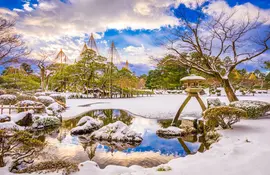
Kenroku-en garden, one of the 3 most beautiful in Japan : a must-see in Kanazawa, especially in Winter
Departure by train and Shinkansen to Kanazawa in the morning (2 hours, 1 change, all included in your package).
From noon onwards, you can settle into your traditional Japan Experience house! A Travel Angel will welcome you, show you some unique details and help you to have an unforgettable stay in Kanazawa. You will be able to "live the Japanese way" for a few days, with a space much bigger than a hotel room and a kitchen to prepare good Japanese food!
In the afternoon, explore Kanazawa , a city between tradition and modernity on the coast of Japan:
Discover Kanazawa, between the sea in the north and the Japanese Alps: - Kenroku-en, Kanazawa's beautiful Japanese garden - The Museum of Contemporary Art and its outdoor gallery - Omicho, the fish market of the Sea of Japan - The Nomura house, residence of the Samurai and its picturesque old quarter
Day 12 : Rural & Mountain
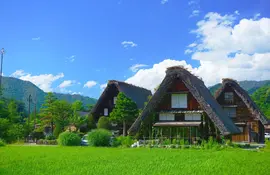
Shirakawago, a world heritage village typical of the Japanese Alps
©amstk/123RF
Starting from Kanazawa, we propose a day trip to a typical village in the Japanese Alps, classified as a UNESCO World Heritage Site : Shirakawago!
Leave for Shirakawago by bus (1 hour 15, tickets included in your package).
Visit a minka ( traditional Japanese house ) or the Myôzenji, a Zen temple in the village.
In the middle of the afternoon, return to Kanazawa on the same bus. As an option, you can decide to stay in Shirakawago for one night in a traditional lodging in the village. And don't worry about your luggage: it will remain at the house in Kanazawa that is allocated to you for the 3 nights. You need only the minimum for this unforgettable night!
Day 13 : The pearl of Japan
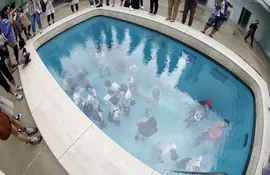
21st Century Museum of Contemporary Art, Kanazawa
©Tomoaki INABA/Flickr
For this day several options are available to you: - Continue visiting Kanazawa (optional, English-speaking guide for one day) - Discover the Noto Peninsula's Japanese countryside with one of our guides (optional) - Other activities, such as a meal with one of our English-speaking travel angels in Kanazawa
Final night in your traditional Kanazawa house.
Day 14 : Japanese wellness
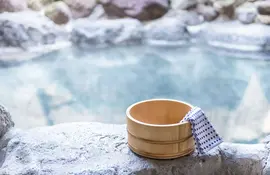
Take a leisurely trip to Kaga Onsen (25 minutes by train, included), a spa town in the middle of the Japanese countryside. Kaga Onsen awaits you with its high quality natural waters, discovered 1300 years ago, traditional Japanese craftsmanship and authentic nature walks. It is the ideal place to relax, just dive into one of the baths. In addition, you can enjoy local specialities during dinner at your Mori no Sumika Resort & Spa ryokan or same category hotel 3*.
Day 15 : The old capital
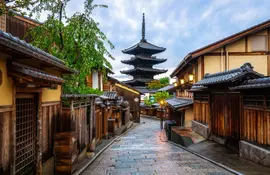
Walk on the streets close to Yasaka pagoda, in Gion, Kyoto old town
©Pitinan/123RF
In 2 hours, reach Kyoto and check into the RAKURO 京都 by THE SHARE HOTELS Hotel or same category hotel 3*.
You have 3 days to visit Kyoto. Start in the afternoon in the historic Gion district near your accommodation.
We advise you to start your visit to Kyoto slowly by visiting the city centre and the Gion district: - Kiyomizu-Dera, the great water temple - The historical streets of Sannen-zaka & Ninnen-zaka - Kodai-ji, the maple and bamboo temple of Kyoto
Finish off seeing the sunset in Gion. Meet your guide at 19:00 to start your late stroll around Gion, Kyoto's historic district.
At the end of this 1 hour 30 walk, your guide will be able to advise you on the best places to eat out! Please note that it is strictly forbidden to take photographs in the historic district of Gion.
Day 16 : Gold and Silver Treasures
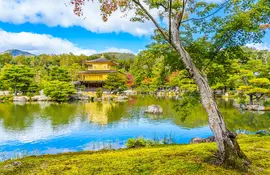
Golden Pavilion Kinkaku-ji : a must-see in Kyoto ancient capital
We recommend the following itinerary for this second day's visit to Kyoto: - Ryoan-ji Zen Garden - The Kinkaku-ji ( Golden Pavilion ) - Ginkaku-ji ( Silver Pavilion ) - The bewitching path of philosophy - The Nanzen-ji temple
One of our many experienced English-speaking guides can accompany you on a tour of these symbolic sites (optional, from 9:00 to 17:00).
Day 17 : Now for some activity...
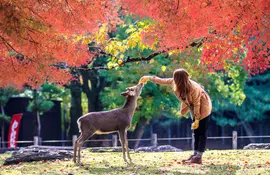
Nara Sika deers are sacred, and protected as National Treasures.
©nicholashan/123RF
This is your last full day to visit Kyoto, so make the most of our many optional activities: - Want to enjoy nature? Check out our cycling activities along the Kamogawa River or hiking in the Takao Gorge! - Prefer Japanese arts? tea ceremonies, meditation activities or private visits to secret gardens will seduce you. - Looking for Japanese countryside? Let yourself be tempted by a trip to Ohara, or try our flagship activity: on the Tea Road!
If you wish to visit at your own pace, continue exploring Kyoto's 2000 unique temples, shrines and gardens!
You can also reach Nara in 50 minutes by train (not included in your package, around 16 € for the round trip, otherwise, get the optional Kansai Thru Pass).
For your last night, don't forget to enjoy the sunset at Fushimi Inari, the huge 10,000 torii shrine in Kyoto.
Day 18 : Sayonara, and see you next time

Sayonara - bye bye Japan !
©Sezer özger/123RF
Direct transfer to Kansai International Airport (included but not accompanied).
Return flight to Europe, North America, Australia.
Do not hesitate to extend your trip by one or more days to Kansai or elsewhere... We will be able to advise you!
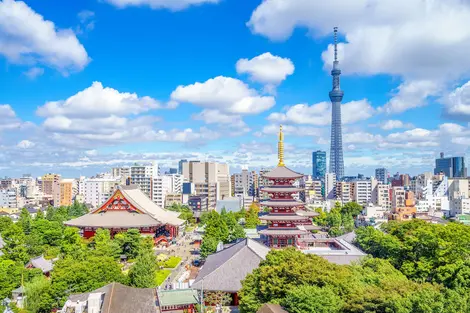
Included in your self-guided tour
Accommodation
- 3 nights in a 3* hotel in the heart of Tokyo, close to the metro.
- 1 night in a 3* hotel in Kawaguchiko
- 3 nights in a 3* hotel in Matsumoto, between the station and the castle
- 1 night in a minshuku in Tsumago, traditional half-board
- 2 nights in a 3* hotel inTakayama
- 3 nights in a traditional Kanazawa house
- 1 night in a ryokan in Kaga Onsen, traditional half-board
- 3 nights in a 3* hotel in the heart of Kyoto, close to the metro.
The basic rate includes a twin room for two people.
- Transfer airport -> Tokyo
- Transfer airport Kyoto -> KIX
- Prepaid public transport card
- 2-day Mount Fuji pass
- Kanazawa <-> Shirakawago autobus
- Japan Rail Pass for 14 days
Experiences and meals
- Welcomed at the airport
- Discounts in many tourist sites as Kawaguchiko and Mount Fuji
- Half board in Tsumago and Kaga Onsen
- Breakfasts except in Tokyo, Kyoto and Kanazawa
- Matsumoto Discovery , half day, with samurai experience
- Welcome to Kanazawa house by a travel angel
- Night Walk in Gion
Additional services
- Unlimited Wi-Fi access with pocket-WiFi
- Complete e- travel diary
- The helpline is available from 8am to 10pm Japanese time, 7 days a week, in English and Japanese. The number will be given to you in your travel pack. It is valid for telephone calls and Whatsapp.
Not included in the price of your trip
- Flights Europe <> Japan
- Optional insurance polices
- Personal expenses (including meals and some breakfasts)
- Public transport when your transport cards have run out (see details)
- Anything not included in the "included in your tour" section
More about your trip
Your tour :
- The prices displayed on this page may vary according to the exchange rate of the Japanese ¥.
- Unfortunately, this tour is not accessible to people with reduced mobility.
- Pets are not allowed
- Children and babies accepted. From 3 to 11 years old a child rate is offered. In each accommodation, a standard adult bed will be offered to them, and a standard seat will be allocated to them in transport. From 0 to 2 years old inclusive, a "baby" rate is offered. This price corresponds to the allocation of a cot in the majority of the accommodation of the chosen circuit. However, we cannot guarantee a baby cot in each accommodation.
- This programme is subject to change due to circumstances such as weather conditions or any other case of force majeure. The order of visits may also be modified. Please note that due to the current circumstances, any information mentioned is subject to change or modification.
- Travel diary by email at least 8 days before departure, as well as other electronic documents
- Paper documents (airport transfer ticket, transportation card, Japan Rail Pass voucher) and Pocket WiFi upon arrival at the airport by our airport assistant.
- NB : no ticket for airport transfers to Kansai airport. The reservation is registered in the name of the tour reservation.
- Note: In very rare cases, mostly in very high season, steps might be reversed. You will be informed in your mini travel-guide. Thanks for your kind understanding.
Your accommodation :
- Some hotels may ask you to pay a tourist tax on arrival. This depends on the city and even the hotel, as some do not include it in the booking price. Normally, it is 200¥/night/person (about £1.37/1.93$) but can be slightly higher in 4* hotels. It must be paid in cash at the hotel reception. For traditional Japan Experience accommodations, it is included in the initial tour price.
- Room size: in Japan, a densely populated country where everything is compact, 3-star luxury hotels are of very good quality but the rooms are often quite narrow (12 to 20m2/129 sq ft to 215 sq ft) depending on the hotel. Please note the size of the single room, between 10 and 16m2 (107sq ft and 172 fq ft). For more comfort, you can choose our luxury 4* accommodation upgrade option.
- Double room: Rooms for two people in western hotels have 2 single beds (twin rooms) by default, which can usually be joined together. As an option, you can select a double room instead of a twin if you prefer a double bed. This option is not valid in the Kanazawa traditional accommodation.
- Single room: People travelling alone and wishing to book a single room must pay a supplement at the time of booking. The single room supplement is compulsory for orders with an odd number of participants. Please note that if you request more than two people in a single room, the single room supplement will be applied to all accommodation except for the ryokans (3 and 4*). In fact, as this is traditional accommodation, people with the same reservation are grouped together in spacious rooms for up to 5 people.
- 3-person room: If there are 3, 5 or more of you and you do not select the single supplement, a triple room will be allocated to you.
- In the case of a group order (> 5 people), it is possible, depending on hotel availability, that not all members of the group will be accommodated in the same hotel. Nevertheless, we aim to keep you close.
- Names of the hotels : The names given on the site are for information only. In the event of unavailability, an establishment of equivalent standing will be scheduled. Hotels, corresponding to local standards, are given as an indication and may be changed on site for hotels of a similar category.
- In the ryokan, guests sleep on comfortable futons placed on the tatami mat. The room has a private sink and toilet. As is customary in Japanese ryokan, the onsen bathroom is shared (not mixed) unless you take the "private bathroom in the room" option. OPTION only valid for Hakone ryokan : Enjoy a private Japanese bathroom (traditional or modern onsen) in your room. This option is recommended for mixed couples, families, people who are modest or have visible tattoos. The 4* ryokan (see 4* option) have comfortable futons raised on either western beds in a traditional tatami room. The bathrooms and toilets of the 4* ryokans are private.
- In the minshuku, you will sleep on comfortable futons in tatami rooms. WC and bathrooms are shared. The bath can be privatized on request at reception and subject to availability.
- Traditional house in Kanazawa : each house has been chosen for its location (transport, shops, temples...) and thus to facilitate your stay. All lodgings have at least one Japanese tatami room and are equipped with a minimum of 3 beds, either in a single western bed (not double) or on a futon. Do not hesitate to specify in your comments that you want to sleep in a western bed.
Your transport :
- Flights are not included in this tour. Do not hesitate to contact us if you would like to include flights in your order: Flights in economy class with stopovers or direct flights, eco-premium or business air upgrades, provincial departures or abroad: we will be able to advise you.
- The tour departure and end dates presented on this page relate to your stay in Japan. You will arrive in Japan via Tokyo (Narita or Haneda airports) and depart from Kansai airport (KIX, not Itami ITM). On departure, you will have to leave Europe the day before and land at 6:30 p.m. at the most to make the most of the airport services of your circuit (reception and transfer to Tokyo). The return flight is on the same day due to the time difference, with a departure time of 9am at the earliest. Please do not hesitate to consult us for any uncertainty or need for precision in the choice of international flights.
- If the flights have been purchased by your care without the intervention of Japan Experience, it is necessary to send us by mail 1 month before your departure your flight information (flight number, airport, date and time of arrival) to allow us 'Organize your welcome and airport transfer.
- Airport Transfers: The shared limousine bus leaves from the airport and stops either in front of your hotel or at a stop within 1-15 minutes walk from your hotel. Our airport assistant in Tokyo will drive you to the platform to pick up the airport transfer. The transfer to the hotel is unassisted. If you wish to be accompanied from the airport to your hotel reception, please choose the option "Accompanied Airport Transfer". This transfer is done in a shared shuttle or bus, with other clients leaving for the same hotel or a hotel close to yours. These transfers leave between 1.5 and 3 hours after your flight's scheduled arrival and stops can be made before your hotel. If you would like a private, non-stop transfer directly after the actual arrival of your flight, feel free to take the "Private Taxi from the Airport" option. Please note: due to the many changes in flight schedules by the airlines, if the airline notifies you of a change in arrival time less than 72 hours before your departure, and if it exceeds 45 minutes, we cannot guarantee your airport shuttle. You will then have to take a taxi at your own expense, requesting a refund from your airline for abusive schedule changes. The same applies to your return journey: 72 hours before your return flight, we cannot change the shuttle schedule. Similarly, you will have to take a taxi booked with the hotel, at your own expense, with reimbursement procedures with the airline company being the only solution. Japan Experience is not responsible for last minute schedule changes. On the way back, the shared shuttle bus leaves from your hotel or very close by to take you directly to the Kansai KIX airport in 1 hour 30.
- Included in your tour is a pre-charged transport prepayment card of ¥ 1,500 (around £10.30 / 14.54$) (suica or Pasmo brand); a transport pass for the Otsuki <-> Kawaguchiko journey and all transport in the Kawaguchiko region (excluding taxi) and a 14-day Japan Rail Pass. These cards should cover a large part of your trips during the stay. Upon expiry of the 1,500¥ Transport Prepayment Card, or if the line you are travelling on is not covered by your Japan Rail Pass, any travel will be at your own expense by recharging your pre-paid transport card (at vending machines in all stations and metro stations).
- Kanazawa -> Shirakawago -> Kanazawa bus trips are included in your offer.
- The Mount Fuji Pass should be activated from the voucher you receive electronically at the Otsuki Station ticket office.
- Travel by metro and bus in the cities (payable by pre-paid transport card, included in your package)
- Transfers from the train station to the hotels (by foot, bus, metro or taxi)
- Travel on private train lines (other than JR)
- Travel on Nozomi and Mizuho high-speed trains (shinkansen)
- Trips made outside the validity period of the Japan Rail Pass
- Japan Rail Pass: It is not necessary to possess a Japan Rail Pass which covers your entire stay. This is only cost-effective if it is used for long journeys between the different stages of your stay (especially in shinkansen) which are very expensive. In large cities like Tokyo, only about ⅓ of public transport is covered by the Japan Rail Pass and getting around is relatively cheap (Tokyo metro tickets: £1.71 / 2.42$; Kyoto daily bus card: £4.28 / 5.97$). Thus, providing you with a Japan Rail Pass for more than 14 days (21) would not be cost-effective and, on the contrary, would significantly increase the cost of your trip.
- If a person taking part in the tour is a Japanese national and a resident of Japan, or a foreigner with tax residence in Japan (including a student), then that person is not eligible for the Japan Rail Pass. Please contact us to get the price of the tour without a Japan Rail Pass. They will have to buy the train tickets for the tour directly in Japan. The Kansai Thru Pass is also subject to the same nationality/residency requirements. This is not the case for the Hakone Free pass. If this person is a Japanese citizen but not a resident of Japan, then he/she can benefit from the Japan Rail Pass under certain conditions (see https://www.japan-experience.com/frequently-asked-questions .
Your activities :
- Airport reception is in English. Your airport assistant will be waiting for you at the customs exit holding a sign with the name of the reservation. They will give you your travel documents and take you to your airport transfer. They will not accompany you to Kyoto (this is possible, but optional).
- The half-day guided tour of Matsumoto takes place in the morning, in groups of 12 people maximum, in English. Lunch is not included. Any transport on this morning is at your own expense. Lunch is not included in the activity.
- An English speaking Travel Angel who is a specialist in Japan will be there to welcome you to your traditional house in Kanazawa. They will give you the keys, explain how the house and its facilities work, give you a tour of the area (tourist sites, supermarkets, bike rental...) and answer all your questions. They will be available throughout your stay in case of any problems or questions.
- The guided tour of Gion takes place in groups of 12 people maximum, from 6pm to 7:30/8:00pm. In English. More details on the meeting place in your travel journal. Dinner is not planned but your guide will be able to give you their best spots.
Your meals :
- Traditional Japanese dinner and Japanese breakfast (mostly savoury) are included in your Tsumago and Kaga onsen tour. Do not hesitate to indicate any dietary requirements you may have, we will pass them on to the ryokan so that they can take them into account when planning the meals. If the ryokan does not take any of these dietary requirements into account, we cannot be held responsible and no compensation will be issued.
- Breakfasts which are not included in your package can be added at the reception when you arrive at the hotel. However, you will find many cafés near your hotel serving copious breakfasts, often tastier than those in the hotels, which sometimes have tight schedules and are predominantly savoury. However, if you would like to add breakfast to your offer when you make your reservation, you can select it as an option.
- The traditional Japan Experience houses are equipped for cooking and are located close to supermarkets and markets.
Your additional services:
- Telephone assistance is available every day from 8 a.m. to 10 p.m. in English.
- A pocket wifi is included in your tour. It allows unlimited high-speed internet access. Your Pocket WiFi will be given to you at the airport of arrival.
- It comes with a small booklet to operate your device (don't panic: simple operation) and a prepaid envelope to return your device at the end of your stay. Your pocket wifi will work naturally until the last day of your trip to Japan.
- A maximum of 5 devices can be connected to a pocket wifi (phone, tablet, computer).
- A single pocket wifi is provided for a circuit order of 1 to 5 people. For an order of 6 people or more, a second pocket wifi will be added automatically and at no extra cost to your reservation.
When you buy, Japan Experience offers you 2 types of protection:
Japan Experience Flex : Cancellation insurance before departure under conditions.
Japan Experience Protect : Pre-departure cancellation insurance under conditions and on-site assistance under conditions.
Frequently asked questions
Do I need a visa? Do I need vaccinations?
As of October 11, 2022, Japan will open its borders to all Europeans (including the European Union, the United Kingdom and Switzerland) and North Americans (Canada and the United States) without requiring a visa.
Only non-triply vaccinated travelers need a negative PCR test performed within 72 hours prior to departure.
Do I still need a visa to travel to Japan as a tourist?
No, no visa is required for blue countries including all European countries (European Union, United Kingdom and Switzerland included) and North American countries (Canada and United States). List of blue countries: https://www.mofa.go.jp/j_info/visit/visa/short/novisa.html . If you have another nationality, please contact the Japanese embassy in your country of residence to obtain this visa.
Do I still need a PCR or antigen test to go to Japan?
No, if you are triple vaccinated with the vaccines approved by Japan (Pfizer, Moderna, ...exhaustive list here : https://www.mofa.go.jp/ca/fna/page24e_000317.html ) there is no need for any test.
I do not have 3 doses of vaccine or I am not vaccinated against COVID, can I enter Japan?
Proof of Covid vaccines is no longer required for travelers from "blue" countries. Therefore, unvaccinated travelers can enter Japan if they live in blue countries. But a negative PCR test is required at embarkation for travelers who are not vaccinated 3 times.
Is there still a quarantine upon arrival in Japan?
Quarantine and testing on arrival have been eliminated for travelers from blue countries.
Is insurance mandatory?
No, but it is recommended. Japan Experience, as an option of its tours, provides appropriate travel insurance solutions.
What anti-covid measures are still in place in Japan?
The mask must be worn indoors (except in exceptional cases) and in transportation.
What applications should I download before entering Japan?
For tracking the evolution of the coronavirus epidemic, the Japanese government recommends downloading several applications:
MySOS, the health and location tracking app (it will be used to confirm your location, health status and accommodation).
COCOA, the COVID-19 contact confirmation app (this will be used to notify you of possible contact with a COVID-19 positive person).
For more information, please visit: https://www.hco.mhlw.go.jp/manual/pdf-en/summary.pdf
How do I book a tour?
It's very simple and easy, just book directly online through our website: (1) Choose the tour of your choice, your departure date and indicate the number of participants. Several options are available to you. (2) Pay a deposit of 35% of the total amount* online and confirm your reservation. (3) You will then receive an e-mail confirming the conditions of your registration. (4) Book your flight ticket, either with Japan Experience or by yourself (taking into account the necessary schedules for your tour) (5) One month before departure, settle the balance of your booking. For more information on the tours or to make a reservation, please contact our advisors on +33 (0)1 42 61 60 83 or at [email protected] , or come and visit us at our agency in Paris. * travel insurance and options included
Where should you start your tour in Japan? Where should you finish?
Most Japan Experience tours begin in Tokyo. This is because it is the gateway to both modern and traditional Japan. Tokyo allows a traveller to enter Japan step by step, whilst getting used to the time difference. Tokyo also has Japan's top two airports in terms of traffic. A few of our tours end in the Kansai region (Kyoto or Osaka). The return flight then goes from from Kansai International Airport (KIX), the 3rd largest airport in Japan, offering many possibilities for return flights to Europe without any real extra cost compared to a return flight from Tokyo. On these tours, the Japan Rail Pass does not cover the whole tour, allowing you to reduce the total price of the tour. And this without losing any transport possibilities as the Japan Rail Pass is of little use in Kansai. However, tours are available from Tokyo and sometimes other cities in Japan.
What are the essentials for a first trip to Japan?
The must-see places for a first trip to Japan are:
- Tokyo, the megalopolis with a thousand sides to it
- Kyoto, the capital of sophistication and Nara, with its temples and deer
- Hiroshima, between memory and modern times, and its sacred island Miyajima
- Mount Fuji, Japan's most famous mountain
- The Japanese Alps: Takayama, Matsumoto, Shirakawa-go
- Kanazawa, both modern and traditional, on the Sea of Japan
And many other unforgettable places to discover in our tours.
When is the best time to see the cherry blossoms? And the autumn leaves?
Recommended dates for seeing the spring flowers: - plum blossoms: mid-February to mid-March - cherry blossoms (sakura): between 20 March and 15 April (dates vary from year to year) - wisteria, iris, azaleas: mid-April to end of May - hydrangeas: June - lotus flowers: August Recommended dates outside of spring : - Autumn leaves: mid-November - Observation of Zen gardens under the snow: mid-December to mid-February
Is it safe to travel in Japan? What about solo travellers and children?
Japan is one of the safest countries in the world, ranked in the top 10 by the Global Peace Index. Therefore travelling alone is safe. Women and girls can travel alone without fear of being harassed or solicited in public places. The same goes for children, who can be seen going to school alone in the metro from the age of 7. This can give you an idea of the country's level of safety. Last but not least, Japan is a haven for children: the safety, the amusement parks, the friendly attitude of the population.
How long should a trip to Japan last?
For a first trip to Japan, a period of 2 weeks is optimal, with at least 3 days in Tokyo and 3 days in Kyoto and its region. Don't forget to take some time at the beginning of the trip to get used to the time difference.
Our commitments as Japan Experience, Europe No. 1 travel in Japan
- The guarantee of the first tour operator specialised exclusively in Japan for 40 years
- A wide range of products to let you Experience Japan from the inside
- Competitive prices thanks to a single team in UK, Europe, USA and Japan, with no intermediaries
- Assistance available in Japan throughout your trip
- A specialised team is available 7 days a week by phone or email
- The best advice thanks to the 3,500 articles available on our website
Optional services
Our other self-guided tours.
Discover other Self-Guided tours like « The Japan Alps »
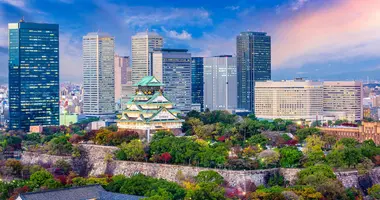
City break - Osaka tour Self-Guided Tours in Japan
- Duration : 8 days
- Locations : Osaka
- Included : Airport Transfers, 3* Hotels, Non-flight transportation, Guided activity, Travel diary, Pocket wifi, Assistance
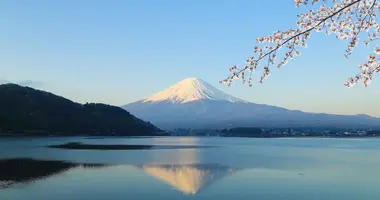
Tokyo, Mount Fuji & Kyoto Self-Guided Tours in Japan
- Duration : 10 days
- Locations : Tokyo, Hakone Mt Fuji, Kyoto
- Included : Airport Transfers, 3* Hotels & Ryokan, Non-flight transportation, Guided activity, Travel diary, Pocket wifi, Assistance
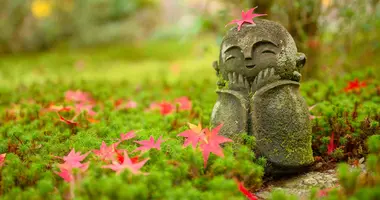
Japanese Immersion Self-Guided Tours in Japan
- Duration : 13 days
- Locations : Tokyo, Hakone Mt Fuji, Hiroshima, Osaka, Koyasan, Kyoto
- Included : Airport Transfers, 3* Hotels & Ryokan, Non-flight transportation, Guided activities, Travel diary, Pocket wifi, Assistance
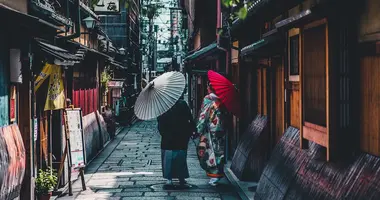
Romantic tour in Japan Self-Guided Tours in Japan
- Locations : Tokyo, Hakone Mt Fuji, Okayama, Miyajima, Kyoto
- Included : Airport Transfers, 3* Hotels & Ryokan, Japan Experience house, Non-flight transportation, Guided activities, Travel diary, Pocket wifi, Assistance
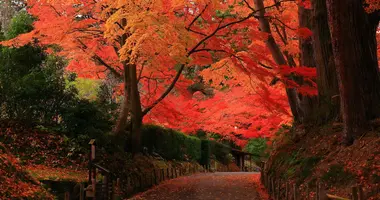
Tohoku: Traditional Japan Self-Guided Tours in Japan
- Locations : Kyoto, Tokyo, Nikko, Sendai, Tohoku, Aomori
- Included : Airport Transfers, 3* Hotels & Ryokan, Japan Experience house, Non-flight transportation, Guided activity, Travel diary, Pocket wifi, Assistance
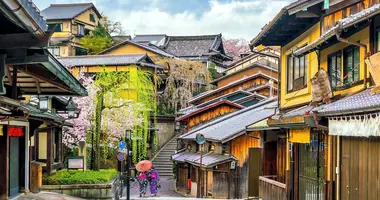
Slow Travel Japan Self-Guided Tours in Japan
- Duration : 21 days
- Locations : Tokyo, Hakone, Kyoto, Osaka, Hiroshima, Okayama
- Included : 3* Hotels & Ryokan, Airport Transfers, Non-flight transportation, Travel diary, Pocket wifi, Assistance, Activities
Our activities in Tokyo, Fujikawaguchiko, Matsumoto, Tsumago, Magome, Takayama , Kanazawa, Shirakawago, Kaga, Kyoto
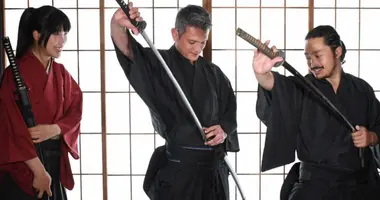
On the trail of the Samurai Matsumoto
- Duration : 3 hour
- Location : Matsumoto

Soba making and Matsumoto Castle Visit Matsumoto
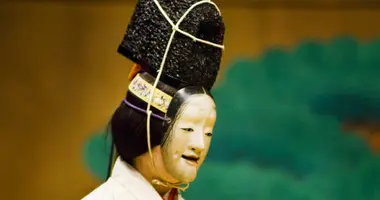
Noh, Ancient Japanese Theatre Activities in Tokyo
- Duration : 2 hour
- Location : Tokyo

Night cruise through the industrial zone Activities in Japan
- Duration : 1 hour

Tokyo Game Show Activities in Tokyo
- Duration : 5 hour
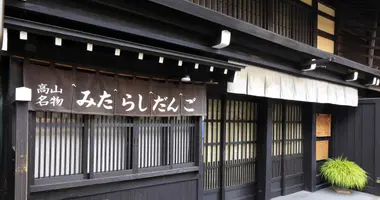
Takayama Discovery, half day Activities in Takayama
- Duration : 4 hour
- Location : Takayama
Please select your country on the list below:
- Switzerland
- United Kingdom
- Other countries
Tateyama Kurobe Alpine Route
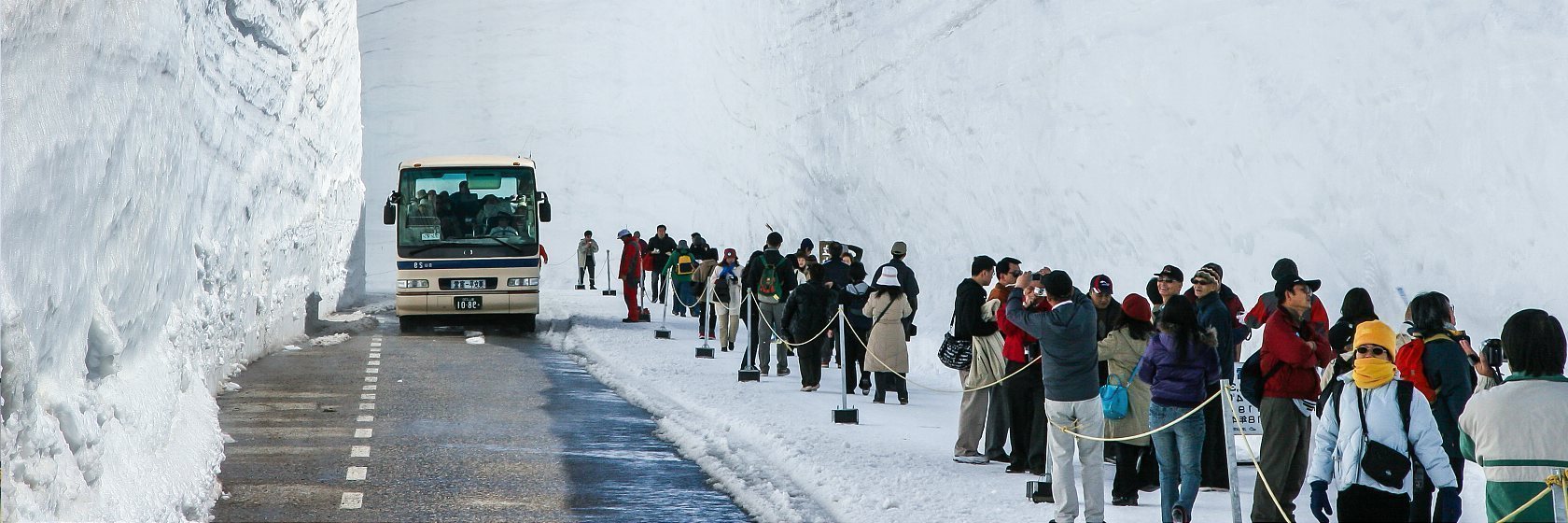
The Tateyama Kurobe Alpine Route (���R�����A���y�����[�g, Tateyama Kurobe Alpen Route) is a unique and spectacular route through the Northern Japan Alps which is traversed by various means of transportation including cablecars, electric buses and a ropeway. Completed in 1971, the route connects Toyama City in Toyama Prefecture with Omachi Town in Nagano Prefecture . The section between Tateyama Station and Ogizawa is closed to private vehicles.
The route is open from April 15 to November 30 and inaccessible during the winter.
The main attraction of the Tateyama Kurobe Alpine Route is the magnificent scenery of the Tateyama Mountain Range, part of the Chubu Sangaku National Park . Visitors can enjoy varying vistas during different seasons of the year. In spring, accumulated snow, especially around the upper sections of Midagahara and Murodo , form a majestic snow corridor whose snow walls reach up to 20 meters high. A section of the snow corridor around Murodo is open to pedestrians from April 15 to June 25.
Summer and autumn attract visitors with beautiful landscapes, alpine flowers (especially June to August) and autumn leaves . The fall colors typically reach their best around Murodo and Daikanbo from late September to early October, and they gradually descend the mountain slopes, arriving at the lower elevations around late October to early November.
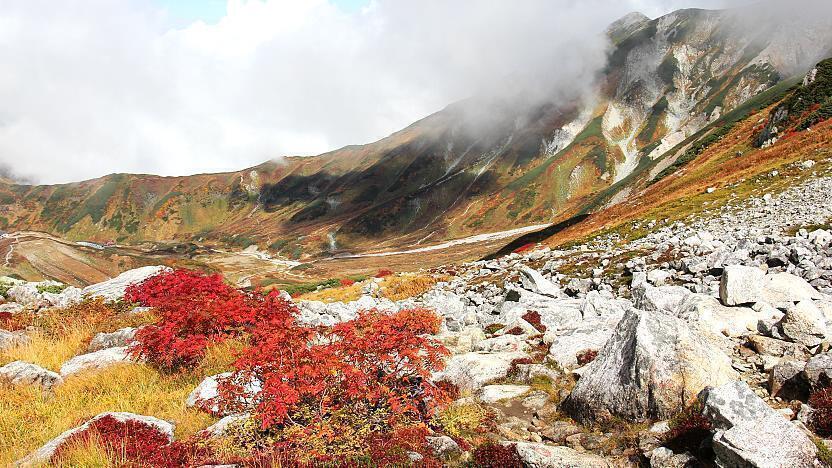
The highest point along the route, Murodo offers a variety of hiking trails that cater both to serious hikers and to those looking for a leisurely walk. Other highlights along the route are the single-span Tateyama Ropeway that provides great panoramic bird's eye views of the surrounding mountain scenery, and the 186 meter tall Kurobe Dam which is especially spectacular when it discharges water between late June and mid October.
From mid June through September temperatures along the Alpen Route are mild, and it rarely gets too hot either. From April to early May and from mid October through November, temperatures are cool and it might get chilly on windy days. Just one layer of clothing is enough for summer, while an additional sweater or jumper is recommended for spring and autumn. Good walking shoes are advised if you plan on hiking beyond the easy walking trails in the vicinity of the respective stations along the route. Accommodation in the form of hotels, mountain huts and camp grounds is available along the route, especially around Murodo.
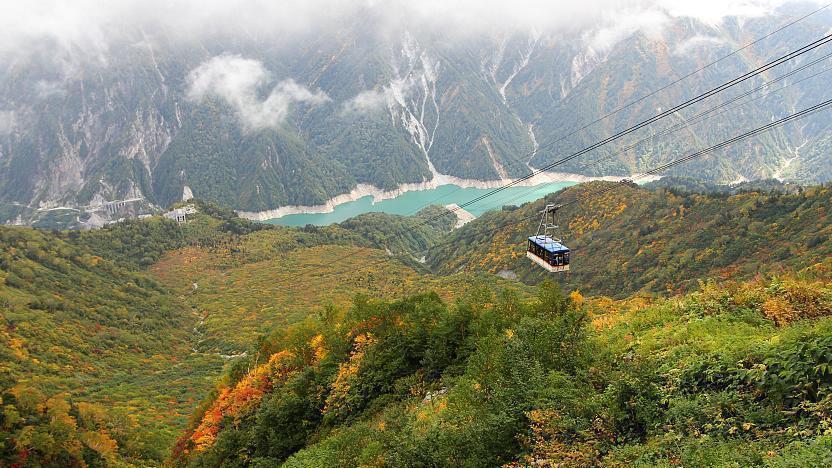
The following is a list of transportation and attractions along the Alpine Route, in order from west to east:
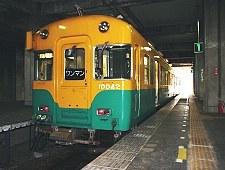
Toyama Chiho Railway
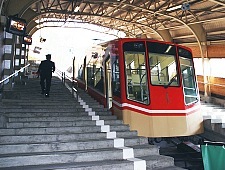
Tateyama Cablecar
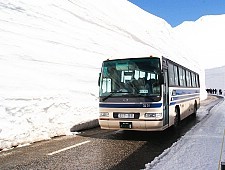
Highland Bus
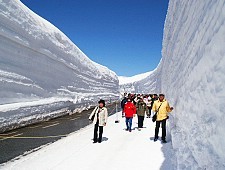
Tateyama Snow Corridor
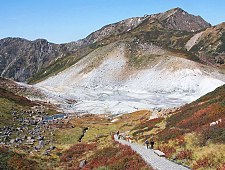
Tateyama Trolley Bus
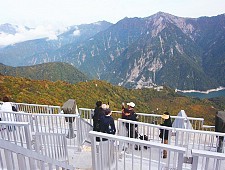
Tateyama Ropeway
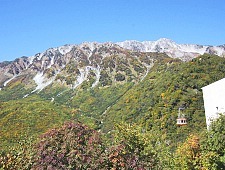
Kurobedaira
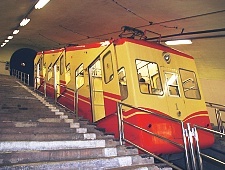
Kurobe Cablecar
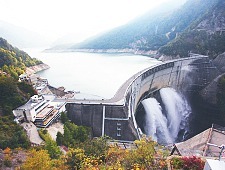
Kanden Tunnel Bus
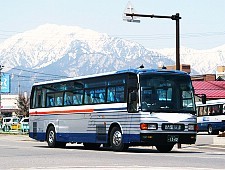
Ogizawa-Omachi Bus
Top attractions in alpine route.
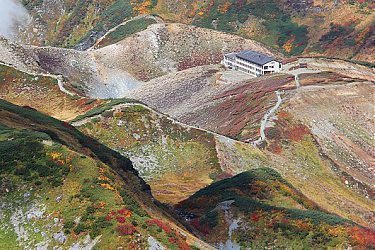
Murodo •
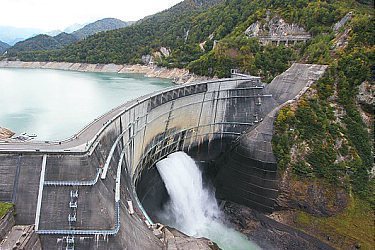
Midagahara Wetlands
Getting there and around.
Questions? Ask in our forum .
Links and Resources
Hotels around alpine route.
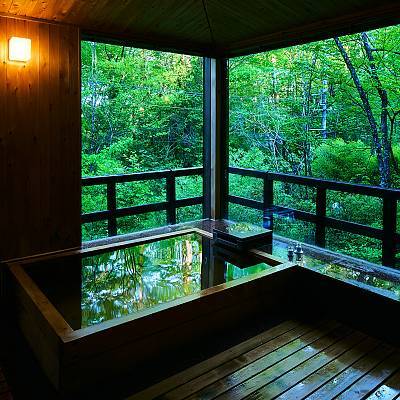
The Japanese Alps - Tour of Japan - Japanspecialist
The Japanese Alps
16 or 18 Days
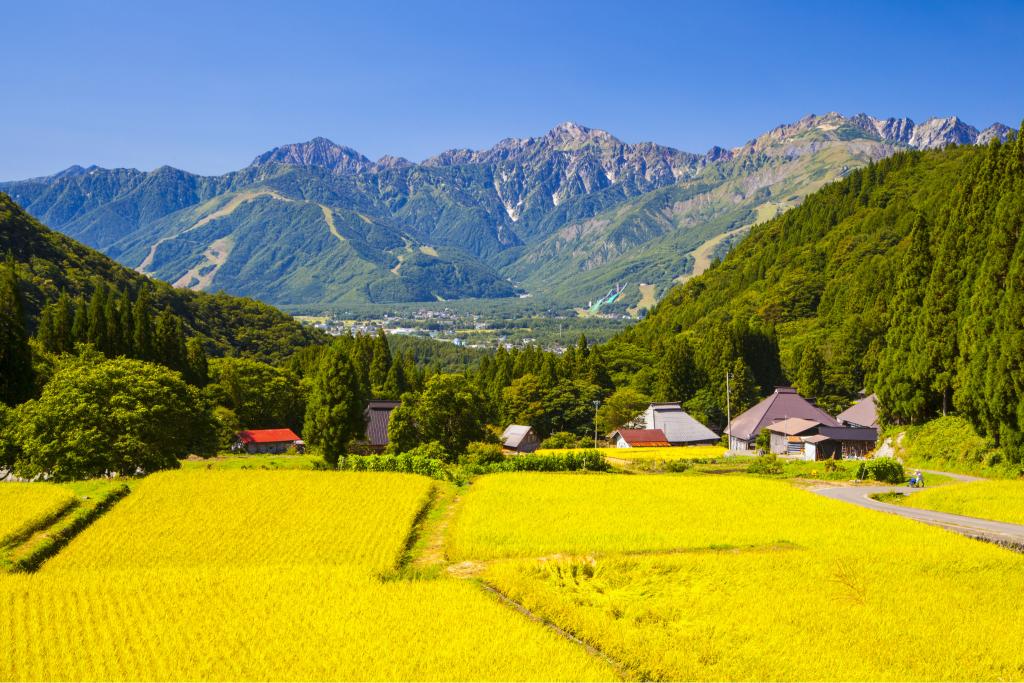
Asakusa Kannon Temple, Tokyo
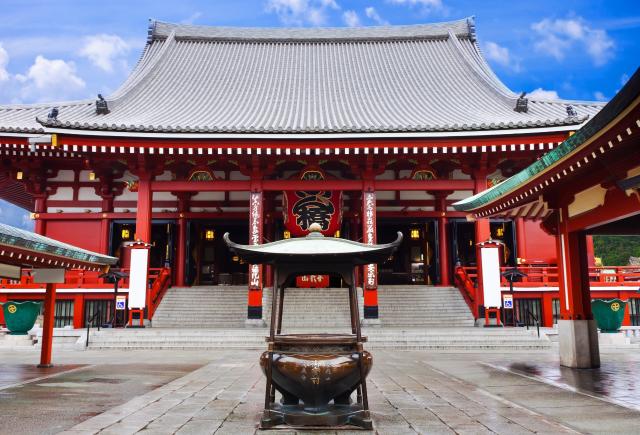
Shibuya Crossing, Tokyo
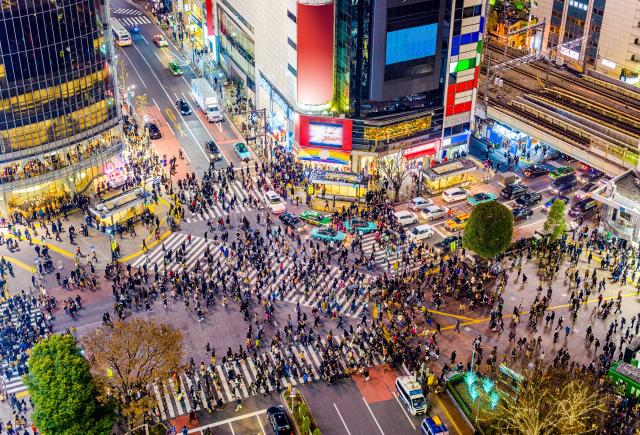
The Great Buddah, Kamakura
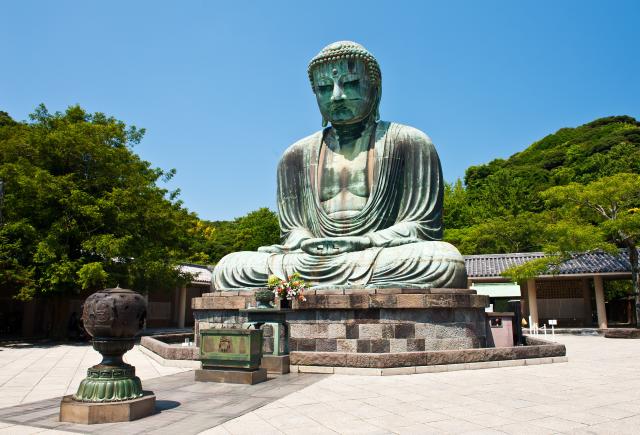
Magome, Kiso Valley
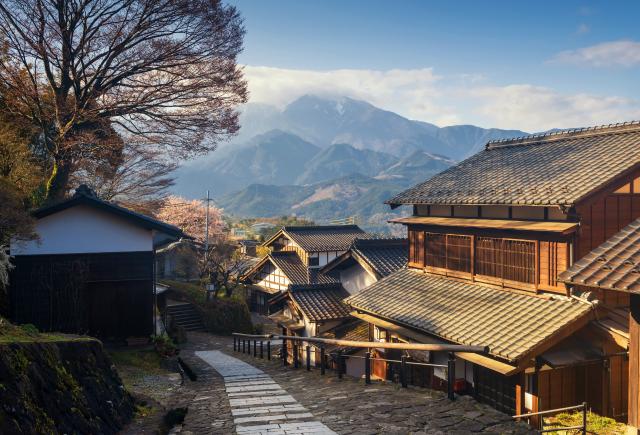
Nakasendo Trail, Kiso Valley
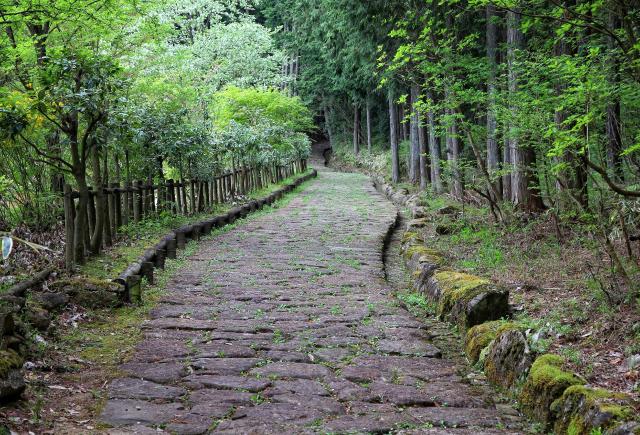
Matsumoto Castle, Matsumoto
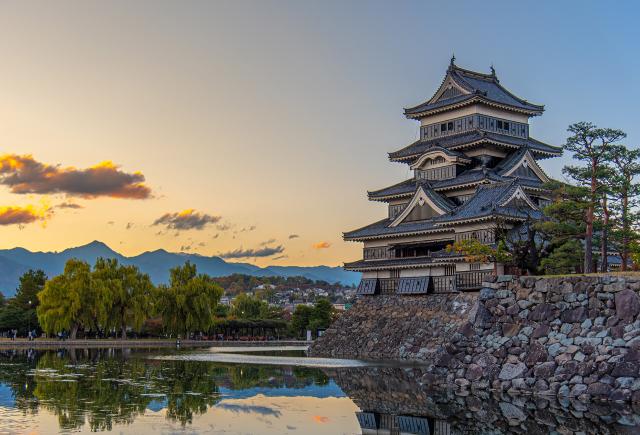
Tateyama, Toyama
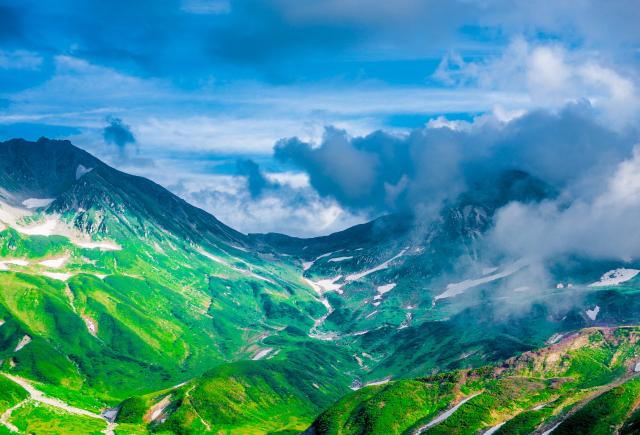
Historic Street, Takayama
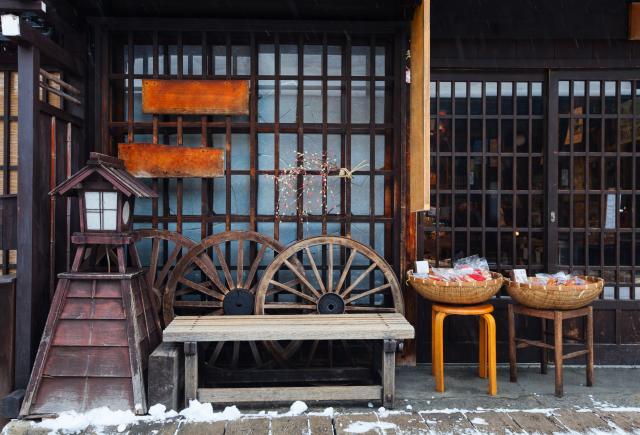
Sake Tasting, Takayama
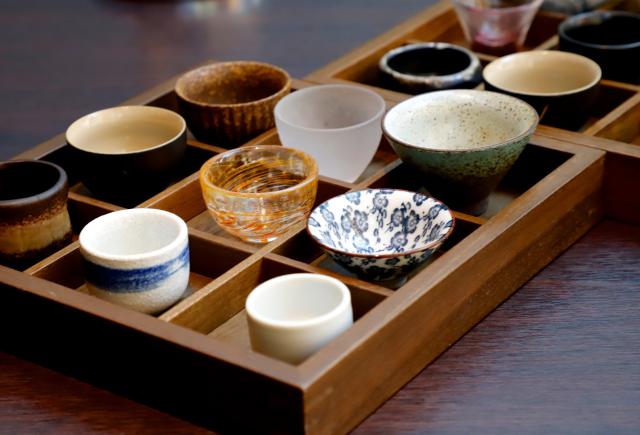
Autumn Scenes, Shirakawago Village
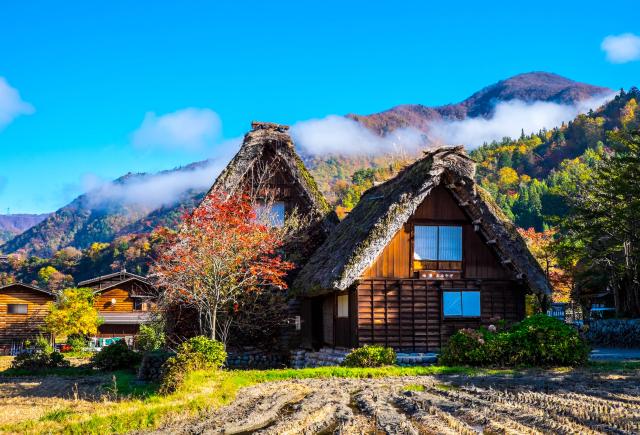
Nishiki Food Market, Kyoto
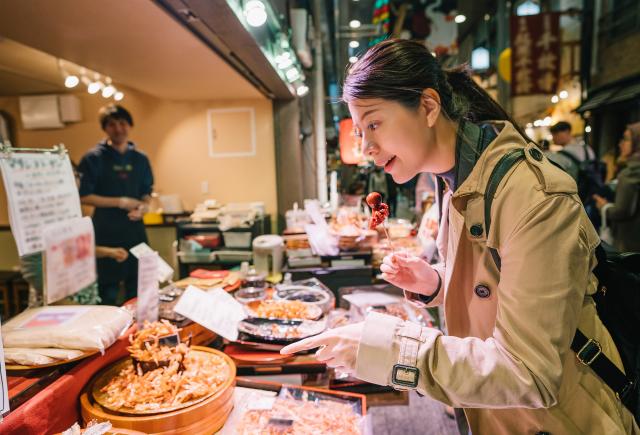
Arashiyama Boat, Kyoto
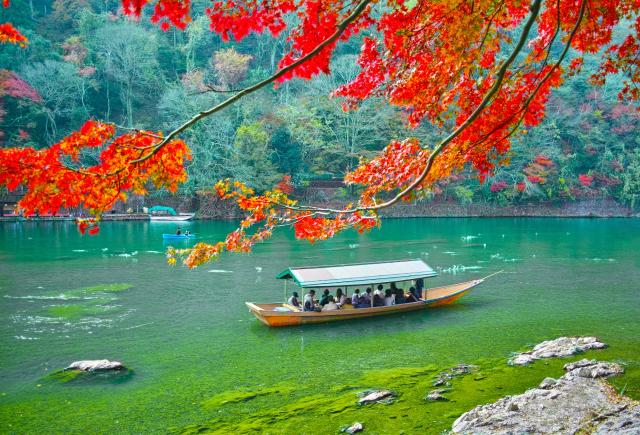
Koyomizu Dera Temple, Kyoto
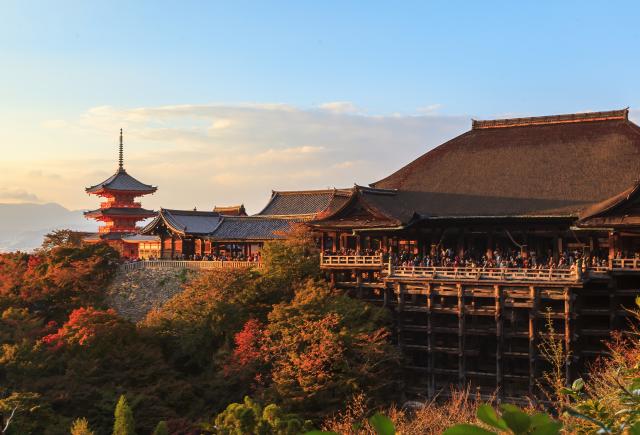
Marvel at the natural beauty and rich history of Japan.
Suggested itinerary
From one of the major cities in Europe, you will fly to Tokyo Narita or Haneda airport.
On arrival, you will take the airport transfer bus to your central Tokyo hotel. If you want to dive straight into your Japan adventure, walk to the Metropolitan Government Building to visit the observation deck on the 45th floor for free and or a walk to the Kabukicho area, where you find plenty of restaurants.
On your first full day in Tokyo, we suggest you tackle the city's must-see sights like Sensoji temple (the oldest in Tokyo) and the nearby Nakamise with small stalls with food specialities and souvenirs. In the afternoon, take a boat ride on the Sumida River. A visit to the imperial garden is also a great option for the afternoon, as is a visit to Tokyo Skytree.
Discover the hip districts of Harajuku and Shibuya, frequented by young Tokyoites. These funky pedestrian zones offer countless shops for fashionistas and are full of unique clothing stores. The famous scramble crossing in Shibuya is the busiest in the world, surpassing Times Square in New York. Be sure to catch panoramic views of Tokyo (and Mt. Fuji) from the top of Shibuya Sky.
Also, make sure to stroll down nearby Omotesando boulevard with Omotesando Hills shopping mall (designed by world-famous Japanese architect Ando Tadao).
Tokyo - Day trip to Kamakura
If you want to make a trip out of Tokyo, a short train ride to Kamakura (home to the second tallest Buddha in Japan) is just one hour away. The UNESCO World Heritage-listed Toshogu Shrine in Nikko is also a great option, located about two and a half hours to the north of Tokyo.
Alternatively, you could also spend some time in one of the many splendid museums like the impressive Tokyo National Museum, the National Museum of Western Art near Ueno Park.
Kiso Valley
Time to say goodbye to Tokyo and take the bus to the small village of Magome. There is a short walk from the bus stop at Magome before arriving at your family-run Japanese inn (minshuku). You'll stay in either Magome or Tsumago, two extraordinarily well-preserved villages that are part of the Nakasendo Road, the ancient hiking route between Tokyo and Kyoto.
Kiso Surroundings
Today we highly recommend walking along the old Nakasendo Road between Tsumago and Magome. The route is beautiful, exceptionally well preserved and marked in English. The journey takes two to three hours to walk at a leisurely pace. You can take the local bus back if you wish.
Remember to visit the well-preserved houses of Honjin and Wakihonjin in Tsumago; these are old accommodations where samurai once slept.
Kiso – Matsumoto - Omachi
Today you'll catch the bus or taxi (not included) before using your local train pass and taking the express train to Matsumoto, which is famous for its iconic jet-black Matsumoto Castle.
The castle is one of only 12 original castles remaining in Japan, and it stands as it did when it was built 400 years ago. Matsumoto is also famous for its beautiful natural landscape, surrounded by the majestic Japanese Alps.
After experiencing Matsumoto, continue by train to Omachi, located in a valley at the foot of the Alps. Here you have a traditional overnight stay with dinner and breakfast included. If you feel like it, there are also plenty of hot springs in the area.
Alpen Route and Tateyama
Today you travel through the Japanese Alps via the scenic Tateyama Kurobe Alpen Route. Leave in the morning, so you are one step ahead of the many day tourists from Tokyo. The route is a mixture of bus, cable bus, funicular, cable car and walking, with many options for stops along the way. Your transport passport covers all transport. Some of the most beautiful views are the Kurobe dam and the top of Mt. Murodo - the highest point on the route (2,450 metres).
In late spring / early summer, you can also walk a few hundred meters along the beautiful "snow corridor" - a road with walls of snow on both sides. Upon arrival on the other side, you'll once again enjoy a traditional overnight stay with dinner and breakfast included. Remember to arrive at the hotel no later than 18:00 to enjoy dinner, as most often you can not change the time of serving.
Tateyama – Takayama
After a morning of sightseeing in Tateyama, you'll hop back on the express train, along rivers and through green valley's right into the heart of ancient Japan. Takayama is a remote and extraordinarily well-preserved mountain town, often referred to as "Little Kyoto."
San-no-machi street is home to traditional wooden buildings that are extremely beautiful. Here, you can buy local handicrafts, visit family museums or take a ride in an old-fashioned rickshaw.
Start your day with a walk to the local morning market Miyakawa, which has existed since the Edo era and is home to abundant fresh vegetables and homemade goods.
It is also worth a visit to two trading houses Yoshijimake and Kusakabe, which are exquisite examples of the samurai era's elite family homes. Make a stop at one of the hundred-year-old sake distilleries to sample the region's famous sake.
In the afternoon, take a hike along the Higashiyama Yuhodo. A three and a half kilometre-long course where you will pass more than a dozen temples and shrines, the ruins of Takayama's former castle and gorgeous scenes of a rural Japanese town.
Shirakawa-go – Kanazawa
In the morning, you'll leave Takayama by bus and arrive at Ainokura village in the Gokayama area, where you walk around between the quiet old houses and get a feel for traditional country life.
After an hour, it's time for lunch at a local restaurant, and then off to Ogimachi in Shirakawa-go. Here you have about an hour and a half to explore the city before taking a separate bus further to Kanazawa.
In Kanazawa, you'll find one of Japan's most beautiful parks, the nearly 400-year-old Kenrokuen, founded on ancient Chinese principles of perfection. You can also stroll through the samurai neighbourhood of Nagamachi, look at exclusive bowls of lacquer and pottery in Hirosaka Street or explore the Ninja Temple, which has both hidden corridors and secret rooms (reservation required).
If you like sushi, don't miss the Omicho Market, the market is full of fresh vegetables too. If you have the time, pop by The 21st Century Museum of Contemporary Art, one of Japan's most popular museums.
Shirakawa-go - Kyoto
Before you leave Takayama, you have the pleasure of exploring Shirakawa-go with a guide. Shirakawa-go is an ancient agricultural area in an unspoilt valley with completely unique architecture.
The ancient gassho-zukuri farmhouses, scattered throughout the valley, are UNESCO World Heritage-recognized and still used by local families. You'll visit Shirakawa-go by bus, and after the bus returns to Takayama, take the express train and the Shinkansen to your next destination, Kyoto.
On your first full day in Kyoto, we suggest you pick out some sights in the same area; some options include Nijo Castle, Imperial Palace and The Golden Pavilion. To pack more into your day, rent a bicycle to get around. In the afternoon, visit Nishiki Market, where you can grab some lunch and feel the city's energy.
We suggest you join our morning tour or explore the city by local bus on your own. One option is to head to the western part of Kyoto to Arashiyama to see the Bamboo groves and beautiful Hozu river. The area around Arashiyama is great for cycling if you want to visit a few temples.
Before dinner, visit the narrow lane Pontocho, one of Kyoto's most atmospheric dining areas. Crossing the bridge of Kamo river, take an evening walk in the Gion area, the famous geisha district and home to machiya merchant wooden houses.
Today on your last full day, we suggest you start your day in the eastern part of Kyoto. Take the local bus to Higashiyama and walk up the narrow street to the magnificent wooden temple Kiyomizudera.
End your afternoon with a Japanese tea ceremony. You could also join our afternoon tour to Nara starting from Kyoto Station. A local guide will take you by train to Nara to see Todaiji temple, with the world's largest bronze Buddha, followed by a stroll in Nara Park.
This morning you will be picked up at the hotel in Kyoto and driven to Osaka Airport, from where the trip will return to Europe. You arrive the same evening.
Accommodation
The following types of accommodation are recommended for this tour.
Japan has quite a number of different types of accommodation, from Western hotels to traditional Japanese inns.
Please note, all our tours are tailor-made so we can arrange whatever accommodation required to meet your specific needs.
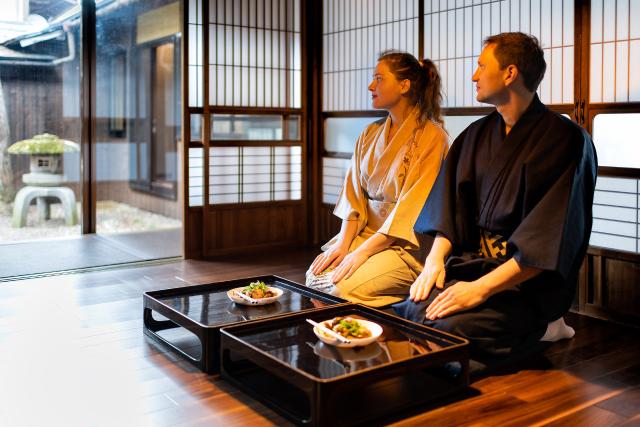
A ryokan is a traditional Japanese inn that offers a unique cultural experience. Guests sleep on tatami mats, enjoy traditional meals and may have hot springs & gardens.
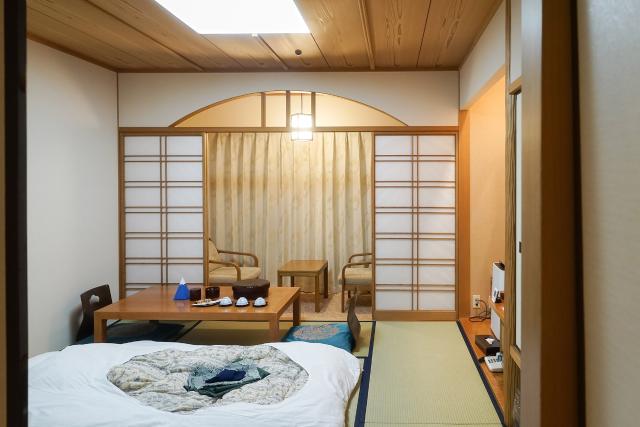
Minshukus are traditional Japanese guesthouses, where guests can experience a homestay, enjoy home-cooked meals and immerse in the Japanese culture.
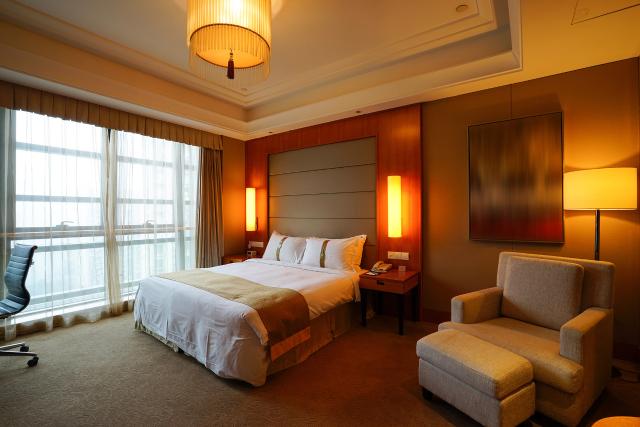
Western-style hotels in Japan offer comfort and convenience with amenities like room service and fitness centers. Many are located in major cities and near popular destinations.
What is included
- International return flight tickets
- Checked luggage
- Airport transfers
- 12 nights in western style accommodations
- 2 nights in Japanese-style Ryokan with onsen
- 2 nights in Japanese-style minshuku
- Breakfast and dinner (selected locations)
- Transport tickets between destinations
What is not included
- Local transport (buses, metro, taxis)
- Local city tax which needs to be paid on the spot
- Optional excursions and sightseeing tours
- Travel insurance
Please note, this is just an example of a tailor-made tour. The services described as included and not included will differ based on your requirements. At Japanspecialist we are happy to accommodate all your requests when creating your personalised tour.
Arrange your consultation with an expert
Our experienced travel consultants are ready to customise this itinerary and arrange your dream holiday today. You can either schedule an online meeting with one of our consultants or fill out an enquiry form and we will get back to you with a personalised tailor-made offer.
The price of this service starts at EUR 50,- and is fully reimbursable if you book your tour with us.
What is covered during the consultation?

Experience Japan your way with our experts
We are part of JTB, the largest travel company in Japan and one of the biggest in the world, with over 100 years of experience. We are passionate about this wonderful country, having spent decades designing adventurous itineraries for our clients.
Your tailor-made holiday in four simple steps
You may also be interested in....
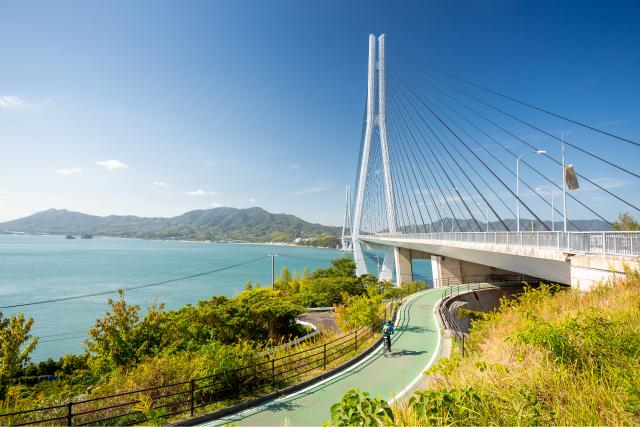
A beautiful cycling route that travels along some of Japan's most scenic islands.

A 17-day adventure across two of Asia’s most exciting countries.
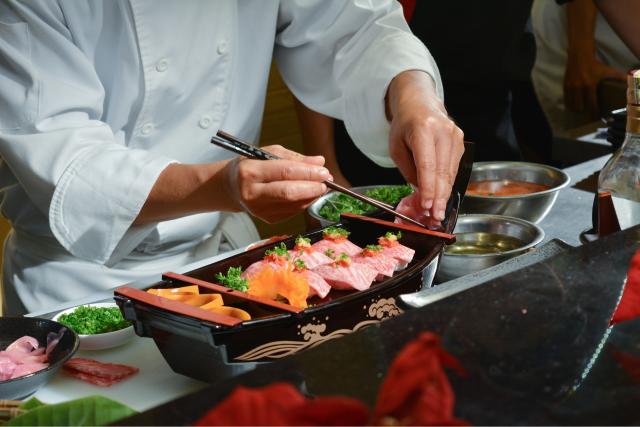
From street food to gourmet cuisine, go on a journey into Japan's unique culinary scene.

- All Group Tours 2024
- All Group Tours 2025
- Signature Tours (Non-Anime)
- Cherry Blossom Season
- Anime Related Tours
- Search Tours
- Tour by theme
- Cherry Blossom
- Anime / Manga / Game
- Highlights Japan
- Signature Tours
- Festival Tours
- Grand Tours
- Southern Japan
- Hokkaido & Northern Japan Tours
- Quilt Tours
- Snow Monkey
- Japanese Ancestry
- All Private Tours
- Cruise Connection Tours
- Custom Tours
- Last Minute Deal
- Offers & Specials
- Destinations
- Experiences
- Trip Advisor's Must-See
- Brochure Request
- Japan Tour Movies
- Terms & Conditions
- Trip Reviews
- Guest Login
- Tour Airfare
- Airport Transfer
- How to Book
- Travel Tips
- Travel Insurance
- Documents Download
- USA/Canada 1-800-285-2726
- Australia (02) 8006 4411

- View Saved Tour
US/Canada Toll Free
1-800-285-2726
- US/Canada Toll Free 1-800-285-2726
- Australia (02)8006 4411
Japan Alps | Adventure through the Rocky Mountains
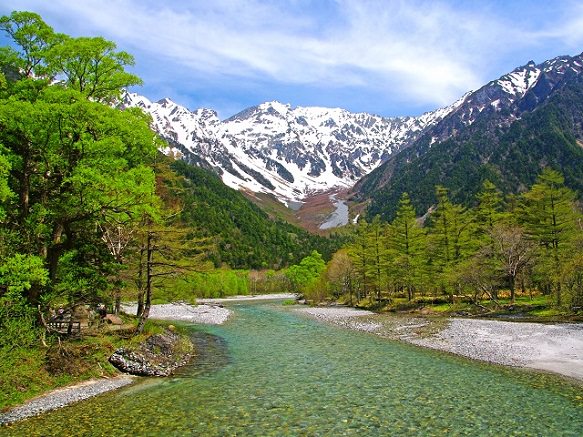
Neon lights, skyscrapers and crowded metropolises are what usually spring to mind when visitors think of Japan, so it surprises many to find there is an expanse of rocky landscape to discover for the more adventurous. More than 70% of Japan’s landmass is mountainous and covered by forests, pushing much of the 127 million strong population to the well-populated coastal areas and creating a central wilderness within the country. Situated on convergent continental plates, nature has produced sweeping tracts of mountain plains with volcanoes strewn throughout, creating the famous hot spring resorts and relaxing getaways for the islands residents in any season. The Japan Alps is an incredible assortment of mountains that provide for winter activities as well as beautiful nature scenery for hikes and photographers to enjoy. The Japan Alps is easily one of Japan's largest and most stunning nature destinations for visitors to explore.
Japan Alps | Related Pages

The Historic Village of GOKAYAMA
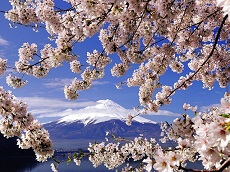
Japan's tallest mountain and its symbolic heart
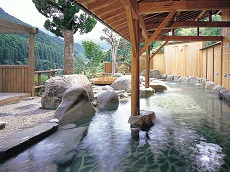
Japanese Hot Springs
Different minerals provide different health benefits, and relaxing effect.
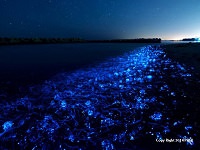
Famous for its firefly squids that light up the bay
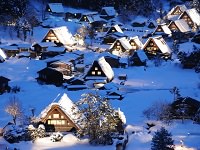
Japanese Winter Activities
Snowboading, Skiing and Snow Monkey
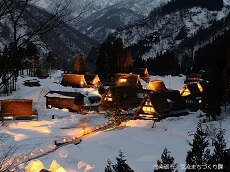
Toyama Prefecture
Famous for Beautiful Sight at Toyama Bay of Firefly Squid Emitting Blue Light
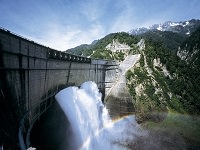
Japan's Tallest Dam, Sightseeing Cruises on the Lake
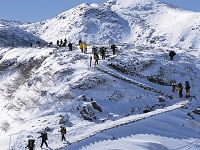
Fantastic Views of the Tateyama Mountain Range

The Japanese Alps: A 6 Day Itinerary With All The Highlights
By: Author Lotte
Posted on Last updated: March 29, 2024
Categories Japan
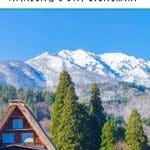
While most people traveling to Japan visit famous cities like Tokyo , Kyoto , and Osaka , Japan offers some pretty stunning nature as well.
Traveling through the Japanese Alps was one of the highlights of our month in Japan and in my opinion an underrated region. The Alps are a beautiful region, with mountains over 3000 meters high.
Besides the amazing mountain views, there are lots of cultural sights and activities as well.
During your trip around the Japanese Alps, you can't miss the Kenruko-en garden in Kanazawa, the traditional gassho-zukuri farmhouses in Shirakawa-go, and the Hida Folk Village in Takayama.
The Japanese Alps: itinerary
Disclosure: Some links in this post are affiliate links. If you make a purchase through one of these links, we may earn a small commission (at no extra cost to you!). We're very grateful when you use our links to make a purchase:-).

When to visit the Japanese Alps
The best time to visit the Japanese Alps depends on what you want to do. We did this exact itinerary in May and had great weather and comfortable hiking temperatures.
Visiting Shirakawago during winter is nothing short of magical and something that is still on my bucket list.
The gassho-zukuri farmhouses were built to withstand this weather with ease and seeing them covered in heaps of snow is something you'll surely never forget.

Kanazawa and Takayama are great destinations regardless of the season as you can visit many sights during winter as well.
Kamikochi, on the other hand, isn't open year-round, usually, the season starts in mid-April and ends in mid-November.
Fall is the most popular time to visit Kamikochi, because of the beautiful foliage. We visited in late May and even then lots of trails were still closed because of snow.
Always check with the Kamikochi Information Center about the conditions and accessibility of the hiking trails.
If hiking in the Japanese Alps is your priority, it's best to travel between (late) June and September. In most years the snow will have melted away and you can safely access all trails.
Plan your Japan trip like a pro with these tools: ✅ Get a Japan Railpass to save lots of time and money. ✅ Rent a car for your Japan road trip via Rentalcars.com . ✅ Stay connected with Airalo Japan offer . ✅ Plan your journey with the Japan Lonely Planet . ✅ Find the best hotel deals on Booking.com . ✅ Join the best tours in Japan via Klook . ✅ Travel safely and get reliable travel insurance from Safety Wing .
6-day trip in the Japanese Alps: map
I spent six days in the Japanese Alps and visited Kanazawa, Shirakawa-go, Takayama, Kamikochi, and Matsumoto.
All the highlights and our accommodation can be found on the map below.

Click here for the interactive map.
The Japanese Alps itinerary summary
- Day 1 Kanazawa: visit the Kenruko-en Garden and explore old samurai neighborhoods.
- Day 2 Shirakawa-go: check out the historic gassho-zukuri farmhouses and admire the view from the Shirakawago viewpoint.
- Day 3 Takayama: explore the Sanmachi Suji historic district and visit the Hida folk village.
- Day 4-5 Kamikochi: go hiking and camping in Kamikochi, one of the most beautiful places in Japan.
- Day 6 Matsumoto: say goodbye to Kamikochi and visit Matsumoto Castle before you head back to Tokyo.

Where to stay in the Japanese Alps
Here is a list of all the places we stayed during our travels around Japan.
Note: Prices for accommodation are dependent on the time of year and how far in advance you book. Therefore, the prices mentioned above are a rough indication of the price per night to help you compare the different options. Click ‘book here’ to see the latest prices on Booking and book ahead to get the best deal.
Things to do in Kanazawa
Kenruko-en garden.

A must-visit in Kanazawa is the famous Kenruko-en Garden (¥310 per person) .
It’s a beautiful garden and though we aren’t that much into plants, we enjoyed strolling around the ponds and the immaculately kept lanes.
Explore the old samurai neighborhoods
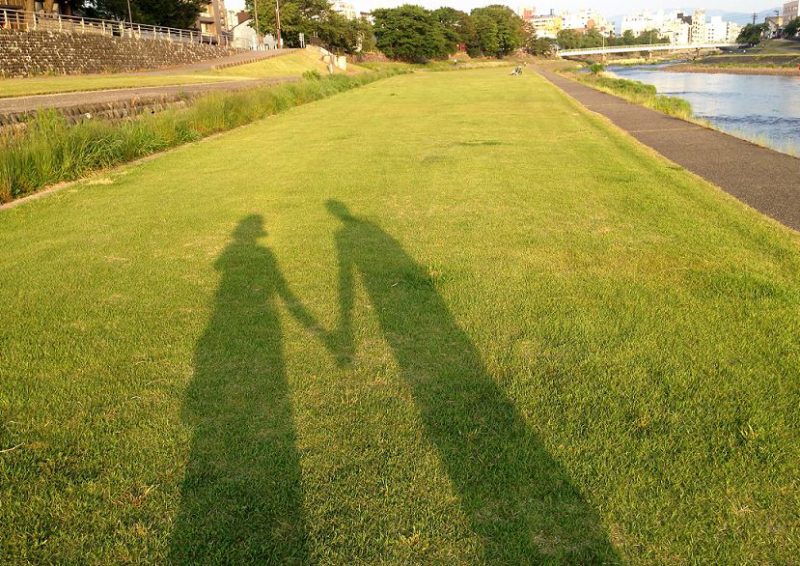
We also visited the old samurai neighborhoods, Nagamachi and Katamachi, and strolled along the river bank to enjoy the sunset. It's a lovely walk!
? If you'd like to get to know Kanazawa through the eyes of passionate locals and learn about the city's best-kept secrets, check out this customized private walking tour .
How to get to Kanazawa from Kyoto
At Kyoto station, we bought a ticket for the local train to Kanazawa (¥4000 per person). There is also a Shinkansen from Kyoto to Kanazawa. The Shinkansen takes only 2 hours, the local option takes 4 hours.
If you're short on time and have a Japan Rail Pass , the Shinkansen is obviously the better option.
Anyway, we took the local train to Kanazawa, meaning we had to change at Tsuruga. On the platform, we found a tiny shop selling soup, perfect for lunch.

From Tsuruga we took the train to Fukui, and at Fukui we boarded the train to Kanazawa. We got out at Nishi-Kanazawa where we hopped aboard a tiny train bound for Nomachi (¥140 per person).
From Nomachi station it was only a short walk to our hotel.
Where to stay in Kanazawa
We stayed at the APA Hotel Katamachi for 1 night. I searched for quite a while and this was one of the cheapest options I found.
What I liked
+ The hotel was nice, clean, and quiet. + The hotel staff was friendly and the check-in was very smooth. + Close to the bus stop to Kanazawa JR Station.
What I didn’t like
– It smelled a bit like cigarettes in the bathroom (even though we had a smoke-free room).
Things to see in Shirakawa-go
The famous gassho-zukuri farmhouses.
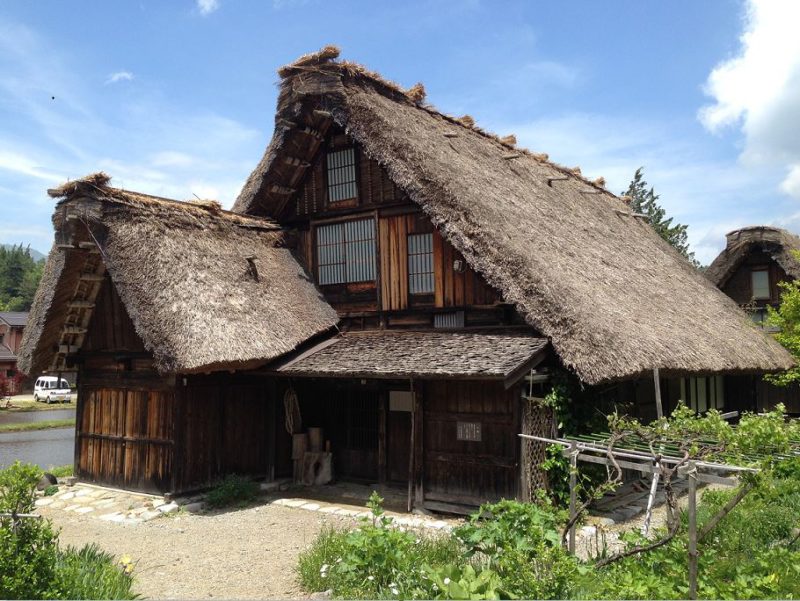
Yes, Shirakawa-go is rather touristy, but it's definitely worth visiting.
Being from Europe, I am used to seeing Swiss and Austrian wooden cottages. But the gassho-zukuri farmhouses are very different, the roofs are made from thick layers of reed.
Some of the houses are more than 250 years old!
Shirakawa-go viewpoint
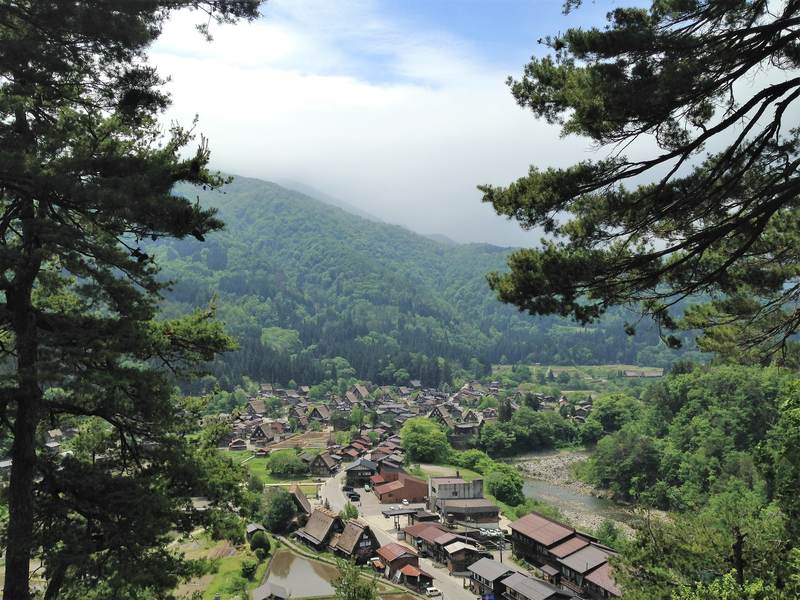
We hiked up to the viewpoint and strolled around the quaint little streets and along the small rice fields of Shirakawa-go village.
How to get to Shirakawa-go from Kanazawa
From our hotel we took the bus to Kanazawa station, there we managed to buy tickets to Shirakawa-go costing ¥1850 per person.
Yes, travel in this part of Japan is expensive!
Nevertheless, it's a beautiful trip to Shirakawa-go, with green forest and snowy mountains in the backdrop!
Note: the first 2 buses leaving to Shirakawa-go from Kanazawa bus station were fully booked. If you want to be sure of your departure time (or if you are traveling in high season) it may be wise to buy tickets the day before.
At Shirakawa-go bus station, We stored our bags at the tourist information center so we didn't have to carry them around when exploring the village.
Costs: ¥1000 for 2 big backpacks (there are also ¥600 lockers but these were all taken).

Things to see in Takayama
Sanmachi suji historic district.
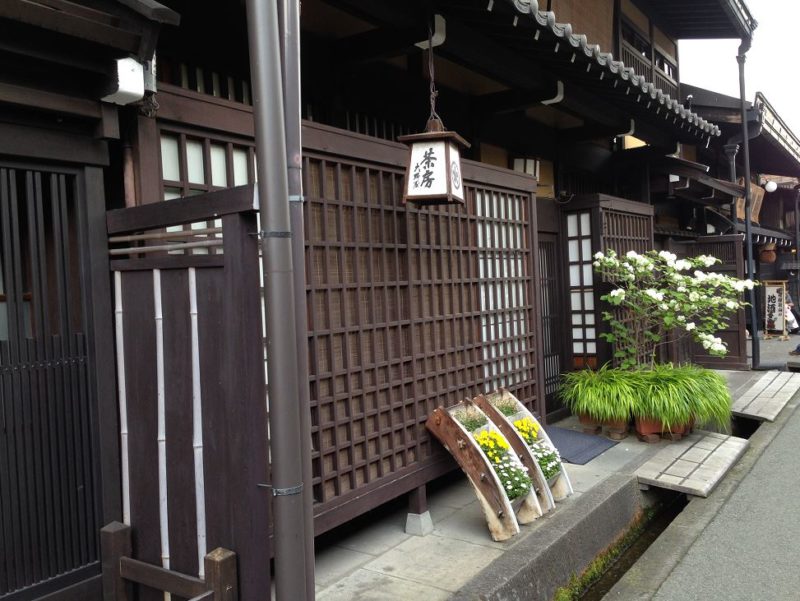
The historic center of Takayama is lovely, the streets are lined with wonderful wooden houses and tiny craft shops.
Immerse yourself in the history and culture of Takayama on this walking tour with a local guide .
Hida folk village
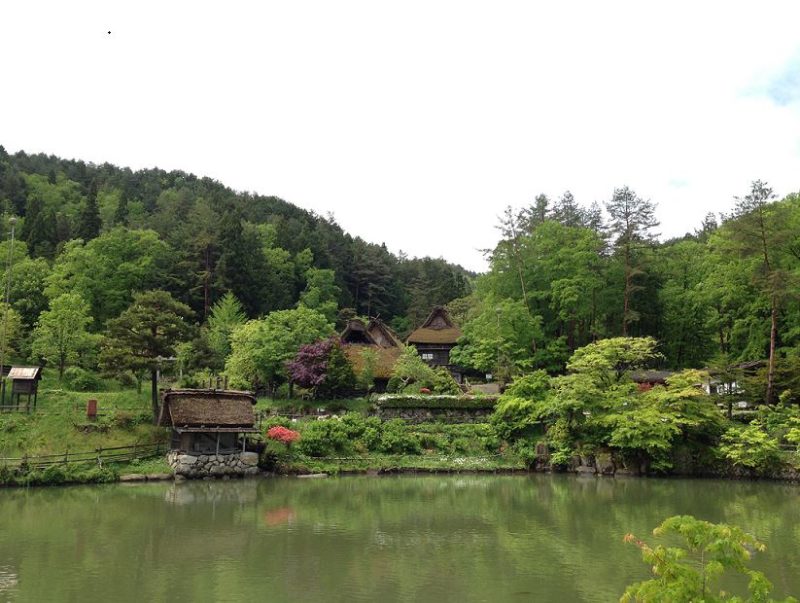
We also visited the Hida Folk Village (¥700 per person), which is a really nice place! In the Hida Folk Village, you find many old houses in building styles typical for the region.
The houses were all taken apart at their original locations and rebuilt in the Hida village, to conserve them and share their unique designs.

What I liked about the village is that you could enter many of the houses, which made it easy to imagine how people lived in ancient times.
There were also a lot of great things to eat in Takayama, such as delicious abura Soba at Le Midi ( 2 Chome-10 Honmachi, Takayama-shi, Gifu-ken 506-0011, +81 577-35-3566),

How to get to Takayama from Shirakawa-go
The buses to Takayama leave just outside the Shirakawa-go tourist information center.
You can buy a ticket at the tourist information center in Shirakawa-go or at Kanazawa bus station, the bus costs ¥2470 per person.
Where to stay in Takayama
We stayed at Guesthouse Tomaru , located within easy walking distance to the train and bus station as well as Takayama historic district.
+ Nice guesthouse with good facilities (tea kettle, Wi-Fi, and clean bathroom). + The rooms are spacious (both the communal living room as well as our bedroom) and the Japanese futons we slept on were comfortable. + The owners are friendly and helpful.
What I didn't like
– There is only one bathroom and it gets a bit crowded at times.
Things to do in Kamikochi

Kamikochi is a wonderful place that truly stole my heart… How could it not with these amazing views!
If you love the outdoors, you should add Kamikochi to your Japan itinerary . There are lots of epic hiking trails, during our 3 days in Kamikochi we tackled these trails:
- Dakesawa hut hike (3-4 hours)
- Mount Yakedake hike (5 hours)
Be sure to read my in-depth post about hiking and camping in Kamikochi here .
How to travel from Takayama to Kamikochi
From Takayama we traveled to Hirayu Onsen by bus, at Hirayu Onsen we changed to another bus taking us to Kamikochi. More information can be found here .
We booked our bus ticket at the bus station in Takayama, only a couple of hours before our departure. The price for a ticket is ¥2600 per person.

Where to stay in Kamikochi
We stayed at the Konashi-daira campsite for 3 nights.
+ The campsite in Kamikochi was also the best-managed campsite we stayed at during our 1-month trip around Japan. + There was a campsite manager who spoke English (a first), a restaurant where we could have breakfast, lunch, and dinner (a first as well), and an onsen. I could have stayed in Kamikochi for months…
– Absolutely nothing, the only downside was having to leave
Campsite information
• Check the website for more information. • We paid €13/$14,50 per night.
Best hotel in Kamikochi
If you don't want to go camping be prepared to spend a lot of money on accommodation in Kamikochi.
The lodges here are beautiful but expensive with prices starting at ¥8400/€67/$76 per night (see the Kamikochi accommodation website , Agoda, or Booking ).
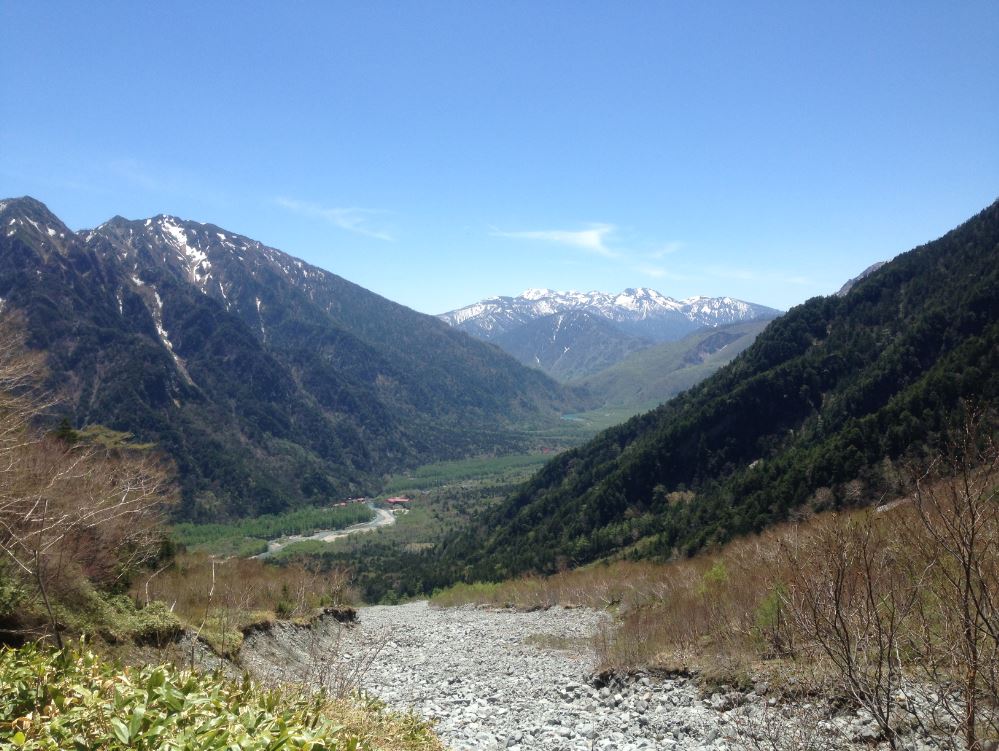
Things to do in Matsumoto
Matsumoto castle.
One cannot visit Matsumoto and not go to the famous Matsumoto Castle (¥610 per person). Of the four Japanese castles I visited during my trip, Matsumoto is my favorite!
Matsumoto Castle was built in 1504 and is made entirely out of wood. It's nicknamed the ‘Crow Castle’, because of the black exterior.
Within the castle, there is a museum where we learned more about its history.

A really cool thing about Matsumoto Castle is the secret floor, which is hidden between the levels.
The secret 3rd floor doesn't have any windows, so from the outside, it looks like Matsumoto Castle only has five stories, but secretly there are six!
The purpose of the secret floor is to mislead the enemy about the number of soldiers inside the castle. Be sure to climb all the way to the top for a lovely view over the gardens.
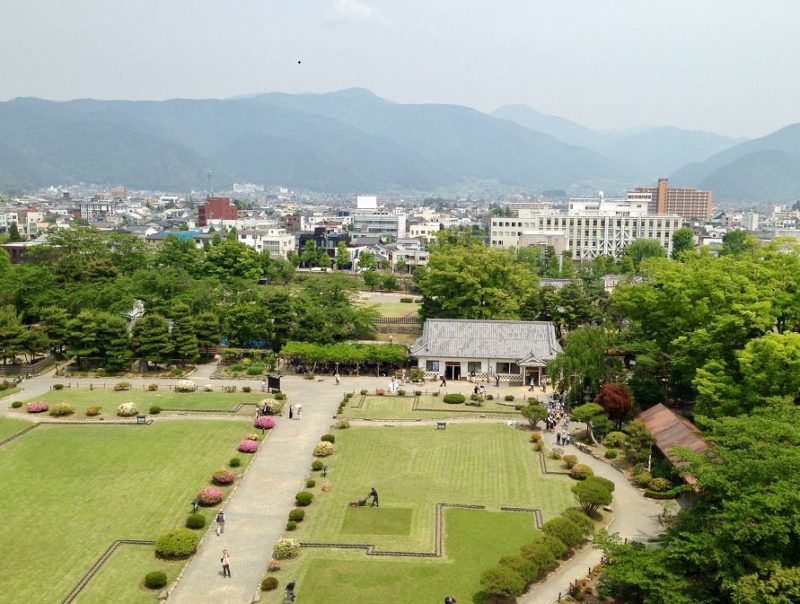
If you'd like to learn more about Matsumoto and the main sights in the city, book this Matsumoto private walking tour with a knowledgeable local guide.
How to get to Matsumoto from Kamikochi
From Kamikochi bus station we took a bus to Shinshimashima train station where we changed to a tiny train taking us to Matsumoto. More information can be found here .
We booked the combined bus-train ticket a day before our departure, you can do so at Kamikochi bus station. The price for a ticket is ¥2450 per person.
Our Japanese Alps itinerary: in conclusion
From Matsumoto, we traveled back to Tokyo by bus to catch our flight home. If you have more time, I recommend visiting Nagano, the Jigokudani snow monkey park , and Mount Fuji.
You can download the map of my 6-day itinerary around the Japanese Alps below. And if you want to read more about Japan, check out my other Japan posts !
- Alternative places to visit in Japan
- How to pack for a trip to Japan
- Japan on a budget
- Driving on Hokkaido
- Hokkaido road trip itinerary
- Hiroshima itinerary
- Miyajima itinerary
- Hiking Mount Koyasan
- Quirky things in Japan
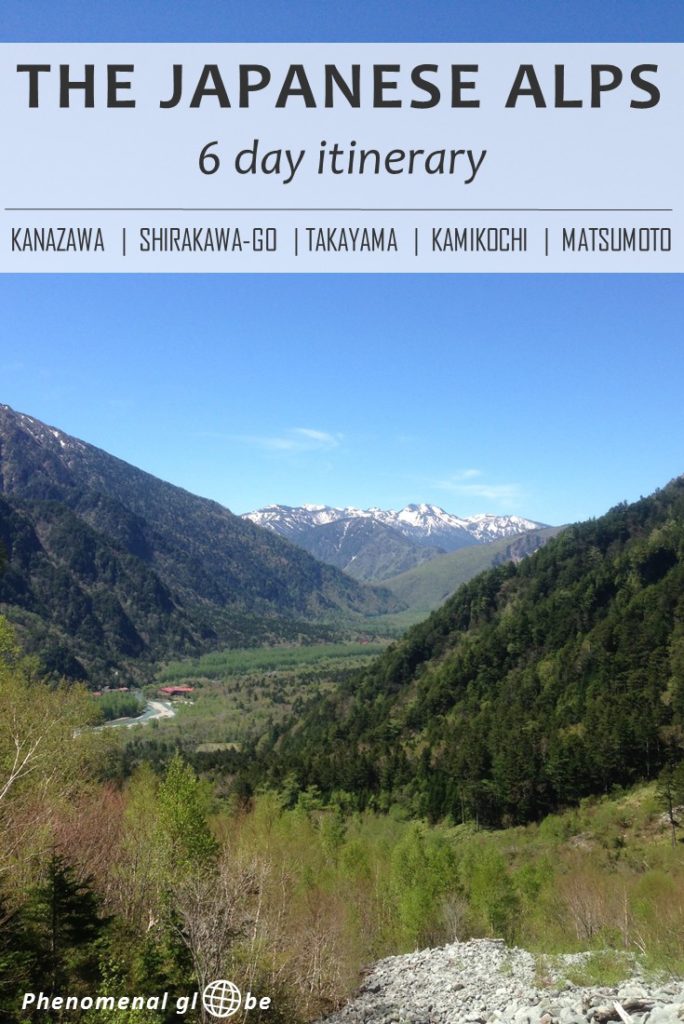
This post was updated in October 2022.
Helena Hiltunen
Sunday 18th of August 2019
Hi Lotte, I have read your blog and I am doing the trip in the reverse order. Just a quick question, do you think it is worthwhile to buy the 4-7 day bus pass or pay for each separate trip? And I was also wondering what your thoughts are about Shirakawa-go. We have one night in Takayama and not sure if we should explore more here instead of travelling to Shirakawa-go on our way to Kanazawa.
You have inspired me. Helena
Wednesday 28th of August 2019
Thank you for reading my post and I'm happy to hear this has inspired you to visit the Japanese Alps! I'm sure you'll love it, it's such a beautiful region of Japan... Regarding your question, we purchased separate tickets, probably because I calculated it was cheaper (we took our trip in 2016 so I'm a bit rusty on the numbers). We stayed in Kamikochi for 3 days so I think that was the reason I found the daily fee too high as we knew we wouldn't be using the bus pass these days.
I found Shirakawa-go definitely worthwhile, especially in off-peak season (we visited in May). It's a lovely village and the houses are very interesting to learn more about.
Have a great trip! Lotte
Hi! I am currently planning a 3 week trip to Japan for the end of October- mid November. I very much want to incorporate your itinerary to the alps! Question- do you have any recommendations for seeing all these places without moving around as much? Can we stay in one place (maybe near Kamikochi) and take day trips to the other places? Also any advice on where to stay in Kamikochi but not camping? Thank you for your help! Erin
Thank you for reading my blog and how wonderful you'll be traveling to Japan in October/November! The Alps are a beautiful region of Japan, I'm happy you've decided to include them in your itinerary:-) Regarding your question, you could base yourself in Takayama and take day trips to both Shirakawa-go and Kamikochi. Kamikochi is very expensive to stay (which is why we went camping). There are beautiful lodges such as the Kamikochi Nishi-itoya Mountain lodge (https://bit.ly/2Znwdsz) but this costs around $250 a night. In Takayama accommodation is much cheaper (https://bit.ly/32aBwsl).
I hope this helps! Have a great trip:-) Lotte
Tuesday 26th of February 2019
This campsite sounds like a great place to base several great hikes out of. I go to Japan every summer and am thinking of finding a time in my itinerary for it. How long would you suggest for moderate hikers? We will also be doing scuba in Ishigaki, biking the Shimanami Kaido, and relaxing near Hakone.
Wednesday 27th of February 2019
Wow, every summer to Japan, that's awesome! I'd love to make another trip to Japan... One day I will! I feel our 6 day trip was perfect, we did most of our hiking in Kamikichi. In the other places we strolled around to see the sights but I don't consider that hiking;-) I wish you a wonderful trip and I would love to hear about your scuba experience in Ishigaki!
Friday 31st of August 2018
Kamikochi looks amazing! What a bummer that we wont be able to go there, since we'll be there around end November. I will definitely try to arrange this into our next visits! When do you think will be the best time to do the hikes? I guess the mid of summer will be too hot, and probably too crowded though.
Tuesday 4th of September 2018
Hi Petrina,
Kamikochi was amazing indeed! I reckon November will be too late to visit, there will probably be lots of snow already:-) About the best time for hiking, I have been wondering the same thing. Summer is crowded but some trails still have snow until the end of June. So July, August and September are probably the best months in terms of accessibility of the trails. And because of the altitude the temperatures should be manageable, though I think it will be hot in the valleys. I would love to do a multi-day trail in the Kamikochi area, who knows we'll come across each other one day. Enjoy your trip in November!
Monday 20th of August 2018
Hi, I am going there in november !! But I was wondering which bus company did you book for Japanese Alps ? Thanks,
Tuesday 21st of August 2018
Great you are going to explore the Japanese Alps! You can find more information about the bus company here: https://www.japan-guide.com/bus/shirakawago.html. We didn't book ahead but just went to Kanazawa bus station to buy a ticket on the day itself. Have a great trip!

- TRAVEL Where to Go When to Go What to Do Tips and Advice Where to Stay
- CULTURE Sports Arts & Entertainment Traditions Cultural Tips History
- FOOD & DRINKS Where to Eat Bars and Brewery Regional Specialty
- SPECIAL EVENTS Festivals Shows & Concerts Tournaments & Competitions Exhibits
- ANIME Anime Spots Anime Events Recommendations Anime Tours
- LUXURY Experiences Luxury Accommodations Dining Luxury Tours

EXPLORE THE BEST HIKES IN THE JAPANESE ALPS
Known as the home of almost all Japan’s mountains going beyond 3000 meters, the Japanese Alps are a collection of uprising peaks, deep, beautiful valleys, and uneven yet exquisite terrains that make for one of the country’s most scenic views. Several beautiful trails delve into each and every crevice of the range. While all are strikingly beautiful, one stands out, often the go-to for the experienced hobbyist hiker. It is the Kamikochi-Yari-Hotaka Circuit. This hike is one of the most challenging hikes in the Alps – recommended for experienced hikers looking for a challenge. The Hotaka Circuit brings you closer to Japan’s two most famous peaks, the Yarigatake Mountain and the Okuhotaka-dake Mountain, the fifth and third tallest mountains in all of Japan. Beginning in the peaceful Kamikochi Valley, the route goes up to an astounding 1675 meters to the spear-resembling top of Yarigatake, later meandering through the outskirts of the Okuhotaka-dake through the infamous Daikiretto, which is inarguably Japan’s most traditional and exciting hiking site, going back down to Kamikochi. For the rest of this blog, we will walk you through what the actual journey will be like when you go hiking the incredible landscape of the Japan Alps! While the route may be beautiful, it is a tough, strenuous hike and not for the faint-hearted. While preparing for your own hiking adventure through the Japan Alps, consider carefully what equipment and supplies you might need, and be sure to pack appropriate clothing, hiking gear, and other supplies for your trip.
THE KAMIKOCHI-YARI-HOTAKA CIRCUIT
Kamikochi to mount yarigatake’s peak.
Hikers often start at the Kamikochi Bus Terminal when going on a hiking escapade to the Japanese Northern Alps. You might see other groups of hikers here making their way to the trailhead, and this hike only gets better with other adventure-minded travelers. Next comes the Myojinkan lodge, where the day-trippers are whisked away, and you can enjoy the view with fewer people around. Unfortunately, it often rains here, and you are advised to bring an umbrella. Just after this stop is where the real, lengthy hike will begin. So, enjoy the lodge for a little while and make sure your water bottles are filled because then you will have some serious climbing to do. As trail goes past the Tokusawa and the Yokoo lodges, the incline becomes steadily steeper. The ascent continues as the path goes through the idyllic Valley of Yarisawa, the source of the Azusagawa River. You will find that you are out of the forest and among the rockier parts of the trail upon arriving at the Yarisawa Lodge. Some amazing views await you. You will then come across the Yarigatake Sanso lodge, where you can relax and grab a bit to eat.

Yarigatake to Okuhotaka-dake through the Daikiretto
You can make it to the peak of Yarigatake from the lodge pretty quickly if you don’t stop for any extra breaks (wandering around and whatnot) apart from resting. While the remaining ascent comprises only a half-hour of effort, pulling at the rocks, ladders, and chains on the almost vertical walls can make time feel as though it is going slower. Once you have made it, though, the view will be worth the effort. You can next get some breakfast down at the hut and make sure to return any rental material back to the owners before you hit the trail. Once done, get ready for some serious hiking over the following peaks: Minamidake, Obamidake, and Nakadake. Take time to stop and enjoy the incredible views before continuing down into the Daikiretto. It will likely take you a few hours of hiking all the way from Yarigatake Sanso to be able to see the legendary Daikiretto Gap. This is a sheer, rocky expanse in the Hotaka terrain, where there is a sharp drop of about 300 meters on both ends. In various places, the ridge contracts, reaching a width only centimeters wide, where the path forward is aided by chains or even bare rock. In these areas, daring hikers enjoy the thrilling view of a breathtaking drop miles below your feet, but pay close attention to where you put your hands and feet. Precarious as the Daikaretto path may be, the hike is a wonder of wonders, and with careful effort and time you will make it safely across. You will, after having gone through some more beautiful mountainous regions, around the peaks of Kitahotaka-dake and Karasawa-dake, have made it to Okuhotaka-dake – which has huts where you can spend the night.

Okuhodaka-Dake
Mount Okuhotaka-dake back to Kamikochi through the Karasawa Valley
And we go back to Kamikochi through one of our favorite parts of the hike, which is the Karasawa Valley. You will begin by climbing up the side of the majestic Mount Okuhotaka-dake. Within about an hour, you will reach the summit. If you get the timing just right, you won’t miss the sun’s rays lighting up the third most-tallest peak of the country. After enjoying all the breathtaking colors and the whole extravagant view, head back into the Karasawa Valley. Most people will want to pick a rather short route, like the Dakesawa Valley, leading them directly into Kamikochi. However, if timing is on your side, pick Karasawa because if you are out there around early October, you will undoubtedly appreciate the vibrant colors of autumn that surround pretty much the entire valley. Once you are at Karasawa, you should pick an alternate way known as the Panorama Course. You will not regret the views you will get to see this way. Also, you get to cover more ground this way. You will soon find yourself at the Tokusawa Lodge. Treat yourself to something delicious here. They are best known for their ice cream, by the way. Some ice cream is definitely welcome after such a long and arduous hike! In addition, you can check out some gorgeous sights at the famous Kappabashi Bridge of Mount Hotaka. There is a classic view from Kappabashi that you are bound to fall in love with! This incredible hike can be most conveniently done during the main hiking season. Again, we recommend this hike only for experienced hikers, as many of the trails can be treacherous. This is from the middle of July all the way till the middle of October. If you are looking for some other hikes to try in Japan, here are a few other equally breathtaking hikes.

SENJOJIKI CIRQUE
This is a hike through the Central Alps, in Nagano Prefecture. The Komagatake Ropeway provides straightforward, year-round access to the starting point of his incredible hike. The region is named for the broad expanse carved out by a glacier an Ice Age ago, a broad flat the length of 1000 tatami mats, or “senjo”. The easiest route from Senjojiki Station (Japan’s highest ropeway station) takes hikers around portions of the cirque in a looping trail that takes about an hour. From this route, one may easily take in views of the surrounding landscape which, depending on the season, makes different impressions on the hiker’s imagination. Certain points of this Senjojiki Cirque trail feature a view as far as Mount Fuji, which can be seen on a clear day winking in the distance. The Cirque also provides access to climbing the highest peak in the Central Alps, Kiso-Komagatake. Hiking to the summit and back again takes around four hours on average and involves a steep slope with handholds to aid in climbing the first portion, reaching the top of the Senjojiki Cirque, be sure to look back for an incredible view before moving onward on an easy upward hike toward Mount Nakadake, which marks the halfway point to the summit. You’ll pass a couple mountain huts along the way, as you get ever closer to the goal. At last, you’ll finally reach the summit of Kiso-Komagatake, home to a pair of shrines and a magnificent view of the Central Japan Alps.

Senjojiki Cirque
NAKASENDO ROUTE
This is probably the most popular hike through the Japan Alps, and one that children and adults can do together. The great appeal of the Nakasendo is its preserved “post towns” which hearken back to the more rustic Edo period. For a tried-and-true trail with abundant free time to take in gorgeous scenery of idyllic mountain villages, the hike through the Kiso Valley from Magome to Tsumago is the perfect route. Departing Magome, with its old-fashioned houses and shops, is like walking out of a postcard scene into a rural countryside of mountains and forests. If you want a map to help you stay on the trail (or just want a cool souvenir), Magome has shops that sell them. The trail is well marked, so there the chance of getting lost on the way is really low. Along the path you can see the majestic waterfalls of Odaki and Medaki, a preserved residence of the once-powerful Fujiwara clan, and even an old-fashioned teahouse, still in operation. Eventually, you’ll reach your goal 8 kilometers later in Tsumago, which has its own local charms to enjoy. The total path takes about 3-5 hours of walking depending on your speed, although we definitely recommend stopping and take in the sights along the way. The Nakasendo Route is open year-round and absolutely beautiful in any season.

Nakasendo Route
There are other hiking trails through the gorgeous Japanese Alps, but no matter which one you choose, you are sure to be captivated by this fantastic location. Happy Hiking!
PLEASE SEE BELOW FOR OUR SMALL GROUP WALKING & HIKING TOURS THAT VISIT THE JAPANESE ALPS FOR 2024, 2025 & 2026
1. japan walking tour: shoguns and samurai, if you do not find any suitable guided group tours that fit your needs, we would be happy to plan a private custom tour for you. private custom tours can be customized based on your wants and needs., click here to make a customized private walking & hiking tour to japan.

NORTHERN OR SOUTHERN JAPAN? WHICH TO VISIT NEXT
TRAVEL | Where to Go
Article | April 22nd, 2024 | May Hamamoto
Can’t get enough of Japan after visiting Tokyo, Kyoto, and Osaka, but are torn between the charms ......

12 OF OUR FAVORITE JAPANESE FESTIVALS
SPECIAL EVENTS | Festivals
Article | April 11th, 2024 | Dayna Hannah
Attending a Japanese festival is an experience unlike any other! Here are our favorite annual events......

WHEN TO SEE CHERRY BLOSSOMS BLOOM IN JAPAN | 2024
TRAVEL | When to Go
Article | March 29th, 2024 | Dayna Hannah
From Okinawa to Hokkaido, here's where and when to see cherry blossoms in Japan.......
Search Group Tour
2024, 2025 & 2026 group tour calendar, subscribe to blog via email.
Your Email Address
POPULAR ARTICLES

TOP PLACES TO SEE IN JAPAN IN 2024: 20 CITIES WE LOVE

50 THINGS TO DO IN JAPAN

WHEN IS THE BEST TIME TO VISIT JAPAN?

WHAT IS KOBE BEEF?

WHAT IS GEISHA

10 THINGS TO DO IN SHIBUYA

JAPANESE FOOD
- Kamikochi Ambassadors
- Other Attractions
- Journey Journal
- Announcements
Plan Your Visit
Visiting kamikochi for the first time we want to help make your journey in the japan alps a great memory..
Please remember that Kamikochi is in the Chubu Sangaku National Park and is not accessible directly by private cars. There are 3 main ways to access Kamikochi: Public Transportation, Car + Public Transportation, and Bicycle.
Getting Here
Most people make their way to Kamikochi via public transportation. However you can also travel by car as far as the Sawando Parking Area (Matsumoto side) or the Hirayu Parking Area (Takayama side) and consider your options from there, where it boils down to a choice between a bus or a taxi. For more details about getting to Kamikochi, please click here or choose your mode of transportation below.
Sightseeing in Kamikochi
The topic of sightseeing in Kamikochi is a tough one to tackle in brief, the reason being that there’s just so much to see. If, for example, you take the bus from Sawando to Kamikochi Bus Terminal and never look back, you’ve already missed two prime spots: the wonderful Taisho Pond and the delightfully subdued Tashiro Pond .
Trekking From Kamikochi
One of the first peaks you’ll notice on entering Kamikochi is Mt. Yakedake, an active volcano that can be climbed as a day hike and which can serve as a back door into Kamikochi if done as a through hike. Mt. Chogatake, a pleasing hike for people of any level is easily reached from Tokusawa. For something a little more relaxed, check out the Tokugo Pass, with great views of Hotakadake when the weather cooperates. Then there is Karasawa, on the way to the Hotakadake peaks, which is also a nice hike in itself if you have the time. And that’s not the half of it!
Accommodations
One of the first things one needs to consider when planning a visit to Kamikochi is whether to do a day trip or spend one or more nights in the park. And there is plenty to be said for spending the night. Tranquil early mornings and starry skies really do complete the Kamikochi experience.
So what are your options? To begin with, the area around Kappa Bridge is home to many hotels to suit various budgets, including some rather luxurious fare. You can read about some of them.
There are also a variety of mountain huts, offering dormitory style lodging as well as meals for those who order them. Some of these places are quite rustic, while others like Yokoo include such amenities as hot baths. Whatever you choose, mountain huts can be a key part of an unforgettable stay at Kamikochi.
Lastly, we should also mention camping, which is an option for anyone choosing to bring their own tent into the park or rent one onsite. Camping is only permitted in campgrounds or in the immediate vicinity of mountains huts that charge a small fee to make use of their land.
RESTAURANTS & SHOPS
The main hub for restaurants and shops is in the area around the Kamikochi Bus Terminal and Kappa Bridge . Meals and snacks can be had at various shops in this area to suit a variety of tastes. Teishoku or set meals are a great favorite among the Japanese and a safe bet to fill you up for a long hike. Many hotels and lodges also double as restaurants, even in out of the way locations like the Hotakadake Sanso.
For prepared food items as well as gifts and sundries, we recommend browsing the shops around Kappa Bridge , where practical items for hiking may also be found. As souvenirs go, be sure to have a look for tenugui , small hand towels adorned with colorful illustrations and usable as bandanas. They make great keepsakes and decorations, as do the t-shirts most lodges sell.
OTHER ATTRACTIONS
If Kamikochi were the only place of interest in the area, it would still be worth a visit. However, its unique location in the Japan Alps between Gifu and Nagano prefectures lends itself to a wide array of outdoor, historical, and cultural experiences. Be sure to check out our Other Attractions page to find out what to add to your journey into the inaka (countryside).
Journey Journal on Kamikochi
The Journals are written by people who love Kamikochi and want to share their experiences with you.
Learn about the Authors
- So long, but not Goodbye
- The Last Day of the 2019 Season
- Images of the Final Week in Kamikochi (2019)
- Oh, What a Dream!
- Misty Mornings, Dazzling Days
- Kappa Bridge Hits Autumn Peak, Brighter Days Ahead

Hiking the Japan Alps
The Northern and Central Alps

Join us to explore the splendors of the Japan Alps on this completely revised itinerary. The Japan Alps (Nihon Arupusu) are composed of three roughly parallel ranges commonly referred to as the Northern (Hida), Central (Kiso or Chuo) and Southern (Akaishi) Alps. This itinerary focuses on the Northern and Central Alps and includes hikes in the Hakuba, Tateyama, Kamikochi and Komagane areas. Immerse yourself in an environment filled with rushing forest streams, deep woodlands, windswept mountain ridges and craggy pinnacles!
This is a hotel-based, day-hiking trip rather than a “hut to hut” trekking-style tour. Evenings are spent in comfortable hotels with private-room accommodations and bathing facilities. Join us for this kōraku (“pleasurable outing”) to the heart of Japan’s mountain world!

Alpine scene at Mount Kisokoma in Japan’s Central Alps.
Day 1 Overnight in Hakuba This morning, depart Toyko bound for Hakuba in the Northern Japan Alps. En route, stop in Matsumoto to visit the beautiful Matsumoto Castle also known in Japanese as Karasu-jo (“crow castle”) because of its black exterior. The keep (tower) of the castle dates from the sixteenth century and retains its original wooden interiors and stonework. Continue tof Hakuba, one of Japan’s largest ski and mountain recreation resorts. Hakuba was the main venue for the 1998 Winter Olympics and hosted the alpine skiing, ski jumping and cross-country events. Settle in for a two-night stay.
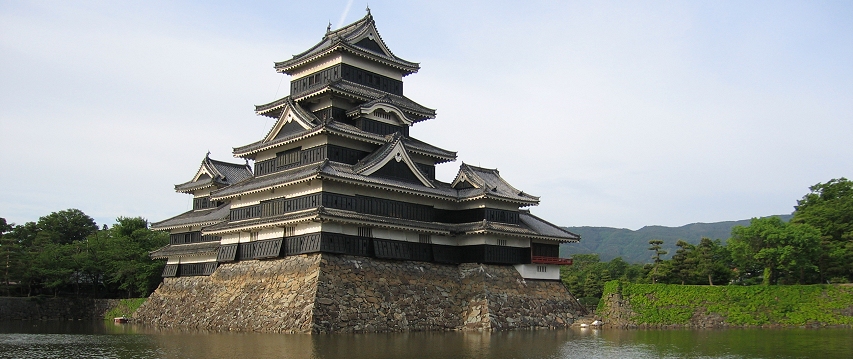
Matsumoto Castle.
Day 2 Overnight in Hakuba After breakfast, travel by gondola and chairlift to reach the high mountain ridges above Hakuba town. This area is part of the Chubu-Sangaku National Park which encompasses a large portion of Japan’s Northern Alps. Today’s hike heads westward along the Happo Ridge (Happo-one) with the trail ascending to the small, picturesque pond known as Happo-ike. From the pond, views extend north to Mount Shirouma (“White Horse”) and south toward the high peaks of Mount Goryu and Mount Kashimayari. For a more challenging option continue ascending along the ridge beyond Happo-ike to reach the peak of Mount Karamatsu (Karamatsu-dake). From the summit, a stunning vista of peaks unfolds to the south and west, and on a clear day, the waters of the Sea of Japan are visible to the northwest. Return to the upper station of the chairlift and descend to Hakuba where you’ll spend a second night.
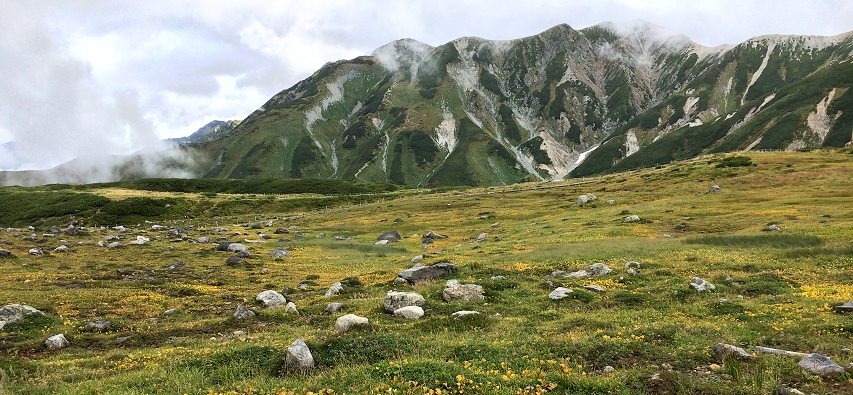
Mount Tate (Tateyama) rising above alpine meadowlands.
Day 3 Overnight in Tateyama Depart Hakuba this morning and travel by vehicle to Ogizawa where you’ll begin your traverse of the Northern Alps via the Tateyama Kurobe Alpine Route, a multi-modal transport system utilizing buses, funiculars, and cable cars (called “ropeways” in Japan) to carry passengers across the mountains. The high point of the route is reached at Murodo (about 8,000 feet above sea level). From this point you’ll begin the descent by bus through the expansive highlands on the western flanks of Mount Tate (pronounced “tah-tay”) known in Japanese as Tateyama (立山). Tateyama along with Mount Fuji (Fujisan) and Mount Haku (Hakusan) comprise the Nihon Sanreizan (Japan’s three most sacred mountains). During the descent, you’ll have the opportunity to get out and experience the highlands on short hikes at Tengudaira and Midagahara, an area of extensive alpine marshlands. Further down the mountain, a hike at Bijodaira will take you through forests of thousand-year-old cedars and beeches. At the end of the day, make the final descent by funicular and arrive at your hotel at Tateyama Station. Check in for a two-night stay.
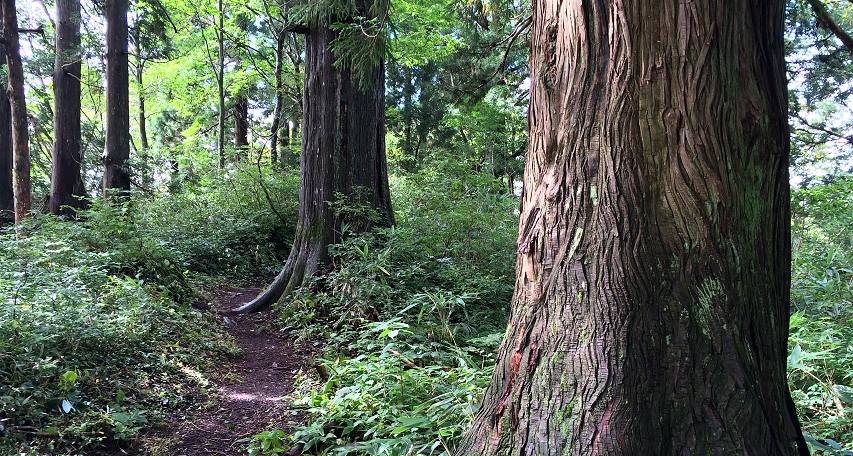
Large Japanese cedars ( sugi ) along the trail at Bijodaira.
Day 4 Overnight in Tateyama This morning, travel by funicular and bus back up the slopes of Tateyama to Murodo. From Murodo you can embark on a loop hike over the two summits of Mount Tate (Tateyama). A sacred peak, Tateyama was once an important place of pilgrimage for practitioners of Shugendō, a combination of Shinto and Buddhist beliefs and practices including rigorous physical and spiritual training in natural surroundings, particularly the mountains. Today, the mountain continues to draw people for traditional reasons as well as simply for the astounding views offered from its summit on a clear day! From Murodo a path ascends to the Ichinokoshi mountain hut at the pass between the peaks of Tateyama and Mount Jodo. The trail continues its ascent to reach O-yama, the lower of Tateyama’s two summits. Here you’ll find a Shinto shrine perched on the peak’s highest point. From O-yama, continue along the summit ridge to reach Onanji-yama, Tateyama’s higher summit. The trail continues toward the peak of Bessan with the pyramidal form of Mount Tsurugi looming beyond. From Bessan, the route descends and loops back to Murodo passing by the steaming vents and bubbling springs of Jigokudani (“Hell Valley”). Near the end of the hike, you’ll pass Midorigaike and Mikurigaike both of which are small crater lakes. On a blue sky day Mikurigaike exquisitely mirrors the surrounding mountain peaks. A shorter hiking option is also available on this day. Return by bus and funicular to Tateyama Station and your hotel.
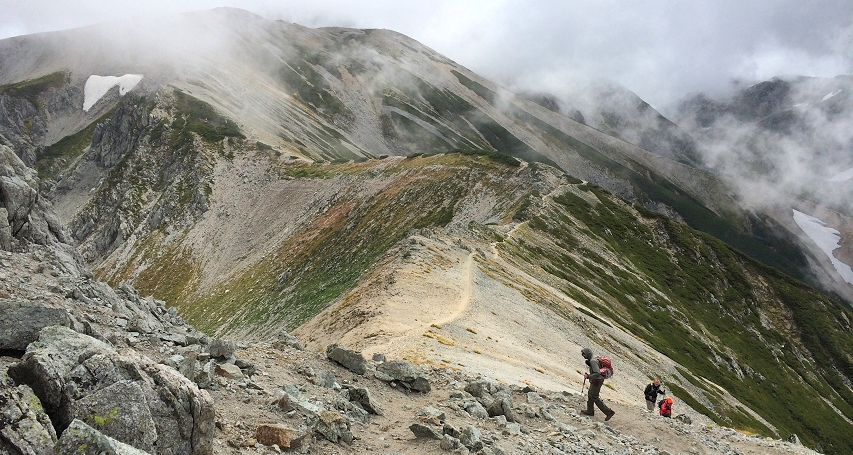
Hiking the high ridges near Tateyama.
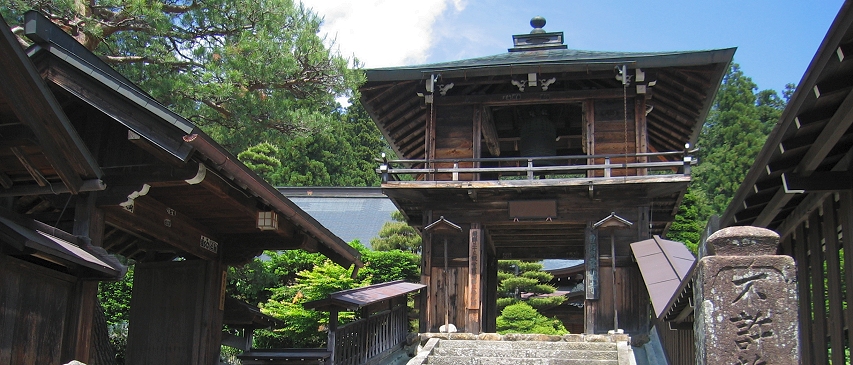
Gate to the temple of Unryuuji (“Cloud Dragon Temple”) on the Higashiyama Promenade.
Day 5 Overnight in Shinhotaka Onsen Depart Tateyama this morning and travel by vehicle to the town of Takayama (sometimes referred to as “little Kyoto”) in the Hida region of Gifu prefecture. You can spend some time walking the streets of Takayama enjoying its Edo Period (17th to 19th centuries) wooden merchant houses particularly on the street called Sannomachi. Coffee houses line the street and old sake breweries (indicated by a ball of cedar branches over the entrance) can be found at the southern end of the street. Takayama is also known for its cuisine which features sansai, or wild mountain vegetables. If you want to stretch your legs on a hike you can embark on what’s often called the “Higashiyama Promenade” which winds through Takayama’s lovely Temple District (Teramachi). This hike will take you past a number of classically beautiful temples that adorn the hillsides east of Takayama’s center. Later in the day travel by vehicle to the hot spring (onsen) resort settlement of Shinhotaka where you’ll spend the evening.
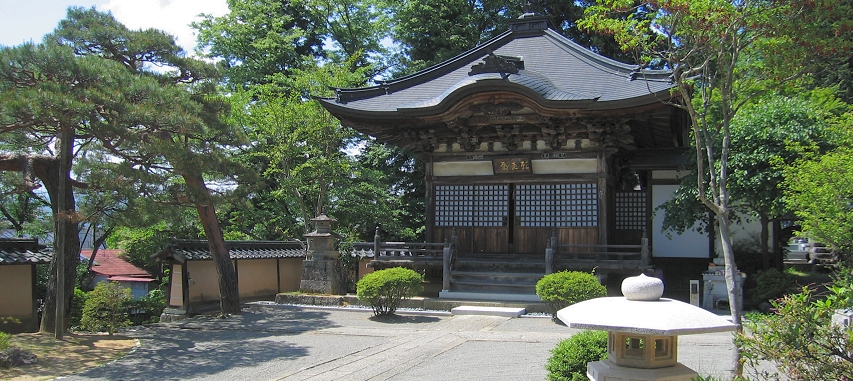
Grounds of Zennoji, Takayama.
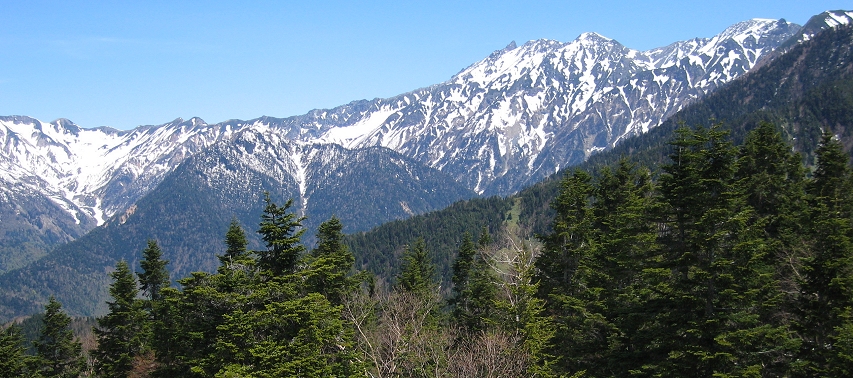
Looking toward the peak of Yarigatake from the upper station of the Shinhotaka Ropeway.
Day 6 Overnight in Kamikochi Ascend into the mountains via the double-deck cable cars of the Shinhotaka ropeway. From the upper cable car station, ascend the ridge to the Nishi Minoru mountain hut where views extend over a sea of mountains and hills toward the distant summit of Mount Haku (Hakusan). If desired, extend the walk by ascending the ridgeline northward toward the peak of Nishihotaka and the rocky pinnacle called Doppyo. Retrace your steps to the cable car station, descend to Shinhotaka and travel by vehicle to Kamikochi where you’ll spend the next two evenings. For a longer “through-hike” option, you can descend from the Nishi Minoru mountain hut and hike to your hotel in Kamikochi. Kamikochi is an important center of mountaineering in Japan and its development as such can be attributed to two Westerners in particular. William Gowland, an English mining engineer, spent sixteen years working for Japan’s Meiji government beginning in 1872. In his spare time, he undertook mountaineering expeditions in the Kamikochi area. Gowland is said to have coined the term “Japanese Alps.” The Reverend Walter Weston, a British Anglican missionary, arrived in Japan in 1888. He did much to popularize the sport of mountaineering in Japan through his writings which included the book, Mountaineering and Exploration in the Japanese Alps published in 1896. He was instrumental in the establishment of the Japanese Alpine Club in 1906. He also lobbied for the protection of Kamikochi’s natural environment, an effort that eventually led to the establishment of the Chubu-Sangaku National Park in 1934. A memorial to Weston now stands in Kamikochi.
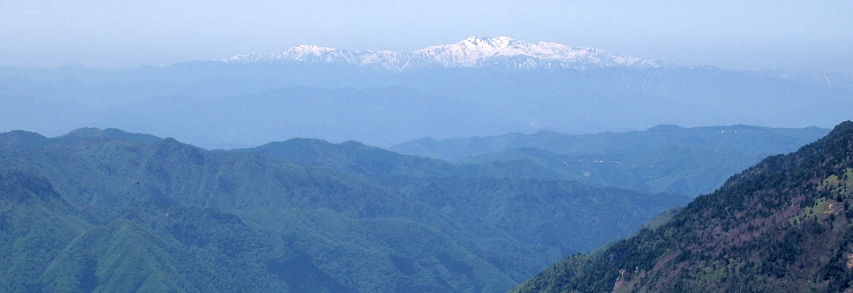
Seen from above Shinhotaka, the distant peak of Hakusan floats dream-like over a sea of azure ridges.
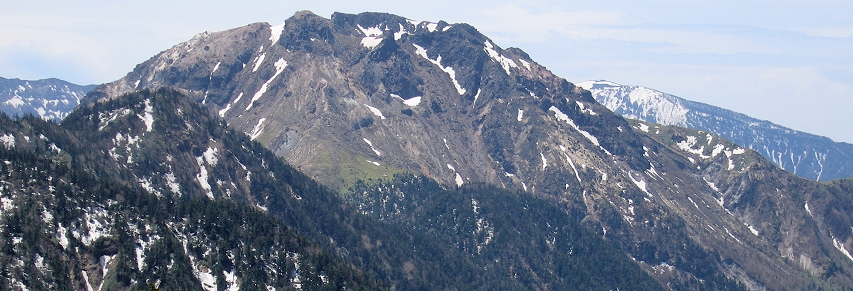
Yakedake is a volcanic summit in the northern Japan Alps.

Hikers on the riverside trail in the Azusa Valley.
Day 7 Overnight in Kamikochi Hike up the valley of the Dakesawa from Kamikochi. The trail ascends beneath the peaks of the Hotaka Range offering views of the steaming, dome-like summit of Yakedake, the only volcano in the northern Japan Alps. Continue along the trail to reach the Dakesawa mountain hut in a subalpine setting near the timberline. You can continue beyond the hut, climbing for a mile or so to higher viewpoints that allow you to survey the valley of the Azusa River and the surrounding peaks. Retrace your steps to Kamikochi and enjoy a second evening in the heart of the Japan Alps.
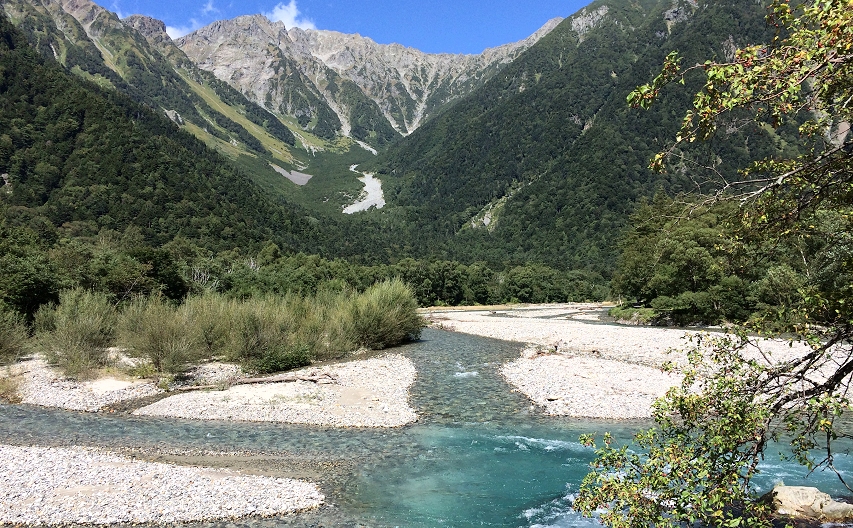
Dakesawa and the peaks of the Hotaka Range, Kamikochi.
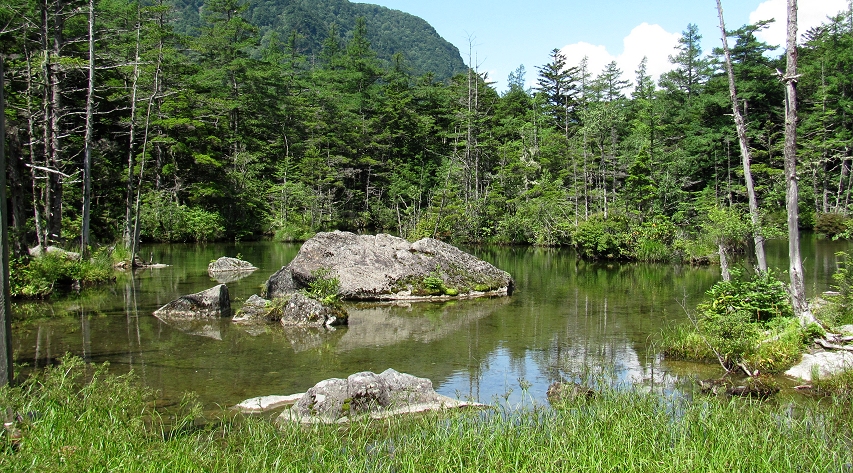
Lovely Myo-jin Pond near Kamikochi.
Day 8 Overnight in Komagane Kogen Hike upstream along the floor of the Azusa Valley through beautiful woodlands. Japanese macaques (monkeys) are often seen along this trail. Cross the Azusa-gawa (Azusa River) to reach the lovely Myo-jin Pond. Its calm waters studded by boulders reflect the surrounding forest and ridges. Return to Kamikochi by following the path along the Azusa River’s right bank passing through fragrant forest laced by crystal clear, spring-fed streams. Travel by vehicle from Kamikochi south to the Central Alps at Komagane. Settle in for a two-night stay at the foot of the mountains in a comfortable hotel at the resort area of Komagane Kogen.
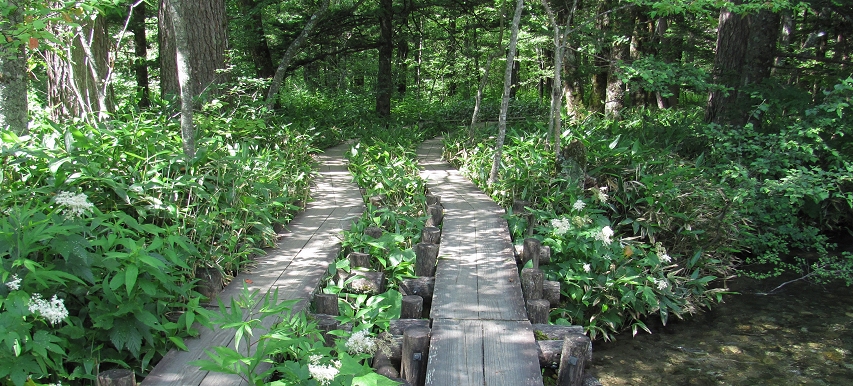
Boardwalk trail heading back to Kamikochi from Myo-Jin Pond.
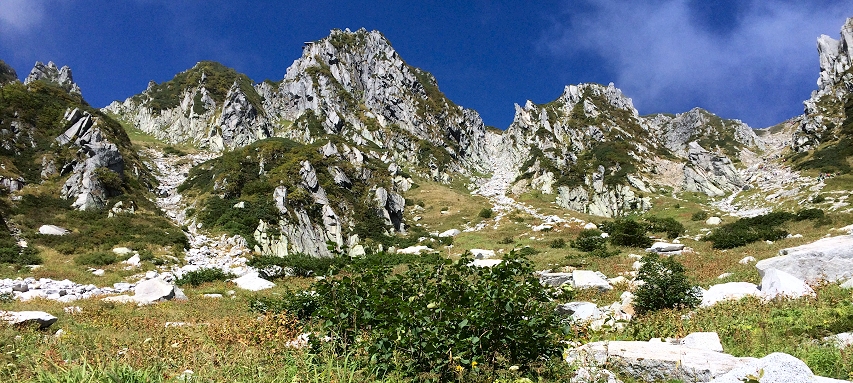
The dramatic headwall of the Senjojiki Cirque, Central Alps.
Day 9 Overnight in Komagane Kogen Ascend by bus and ropeway from Komagane Kogen to the alpine wonderland of the Senjojiki Cirque (referred to in Japanese as the “Senjojiki Curl”). The cirque is well known for its display of summer wildflowers. From the floor of the cirque a trail ascends in a series of tight switchbacks to the ridgeline between the sharp peak of Hokendake and the rounded summit of Nakadake. Once on the ridge, you’ll enjoy sweeping views across the Central Alps. Hike northward along the crest of the ridge to the peak of Kisokomagatake (Mount Kisokoma), the highest peak in Japan’s Central Alps. If you’re lucky, you might spot a Japanese edelweiss (Leontopodium shinanense) among the rocks on Mount Kisokoma. Retrace your steps to the starting point. If you’d like a longer hike it’s possible to return to the starting point via an alternate route that passes by a couple of small mountain tarns. At the end of the hikes, descend by cable car and bus to Komagane Kogen for the evening.
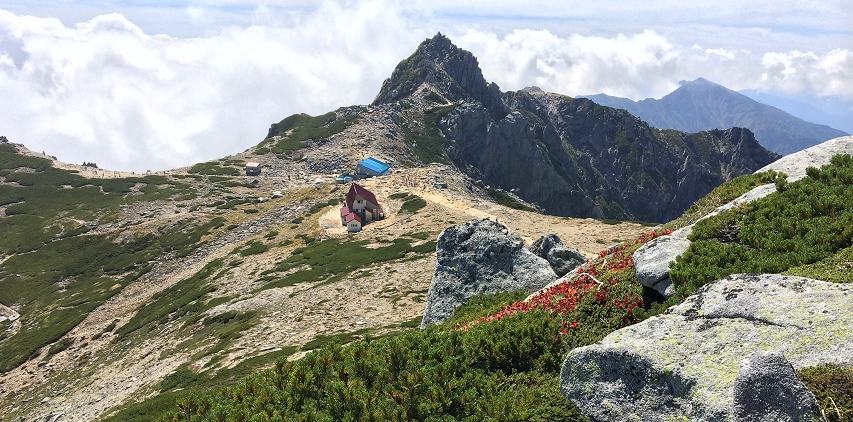
Craggy Hokkendake rising above the Senjojiki Cirque, Central Alps.
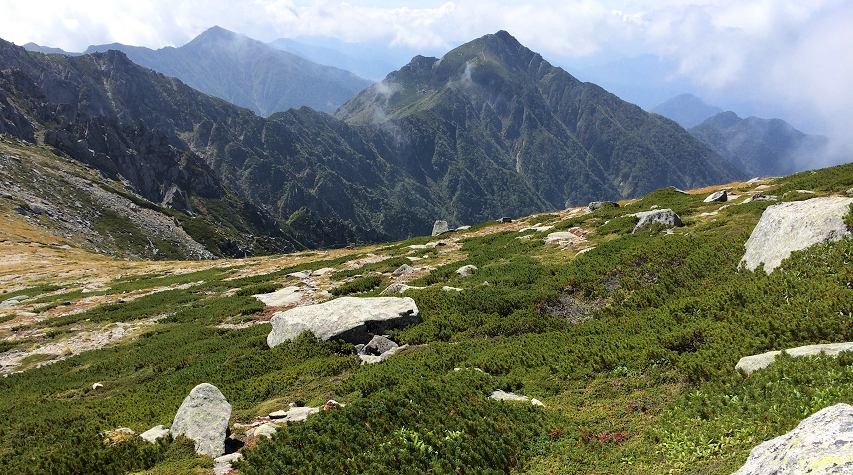
The peak of Sannosawa-dake in the Central Alps as seen from the slopes of Mount Kisokoma.
Departure day Transfer to Tokyo After breakfast, depart for Shinjuku Station in Tokyo for your onward connections. You will arrive at Shinjuku in time to make bus or rail transfers to either Narita or Haneda Airports for same day flight departures.
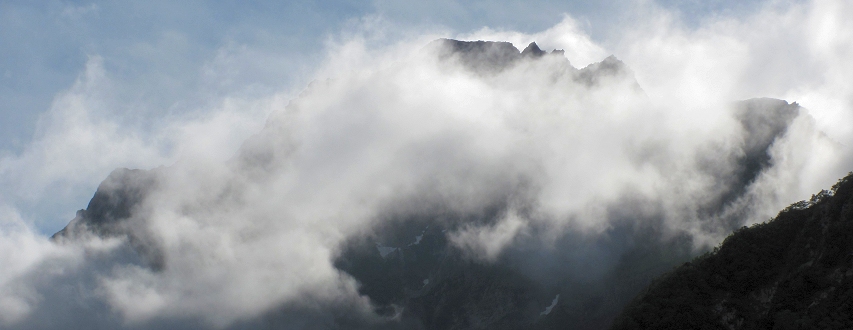
Cloudscape in the Northern Japan Alps as seen from the Azusa River Valley, Kamikochi.
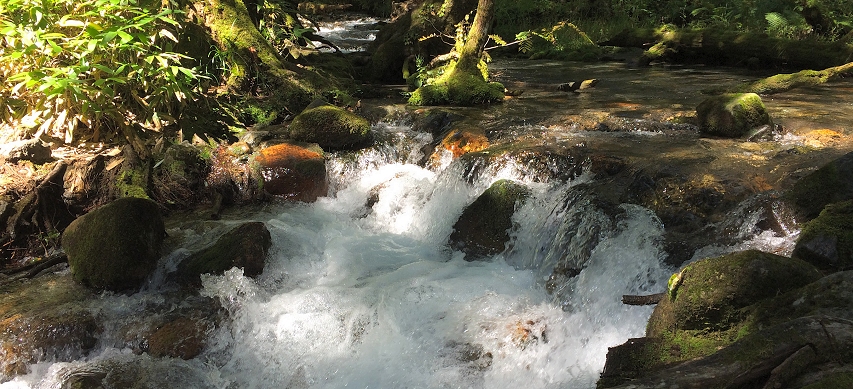
Tumbling waters in the Kamikochi area, Japan Alps.
Photos on this page are by John Osaki (© All Rights Reserved) except as otherwise credited.
THIS TRIP IS NOT CURRENTLY SCHEDULED. Over the years, Mountain Hiking Holidays has developed and operated trips to a variety of destinations including this one, but not all trips are offered every year. If you are interested in joining a scheduled departure of this trip in the future, please send us an email and let us know. Click to send us an email.
Meeting point is Tokyo, Japan (Shinjuku District). Accommodations in hotels; no mountain huts or camping. Mid-July is a good time for this trip (prior to the peak typhoon season in August and September.
Back to top | Mountain Hiking Holidays Home
Mountain Hiking Holidays
Trips for the adventurous hiker since 1996
PO Box 86250, Portland, OR 97286-0250, USA
© 2022 Mountain Hiking Holidays, Inc. All rights reserved.
Quick Links
Trip Reservations
Our Hiking Style
Passport Information
Trip Evaluation
Client Log-in
- +61 7 3368 1966
Home / Small Group Tours /
2024 Walking Tour of Nagano & Japan Alps
Top tour highlights.
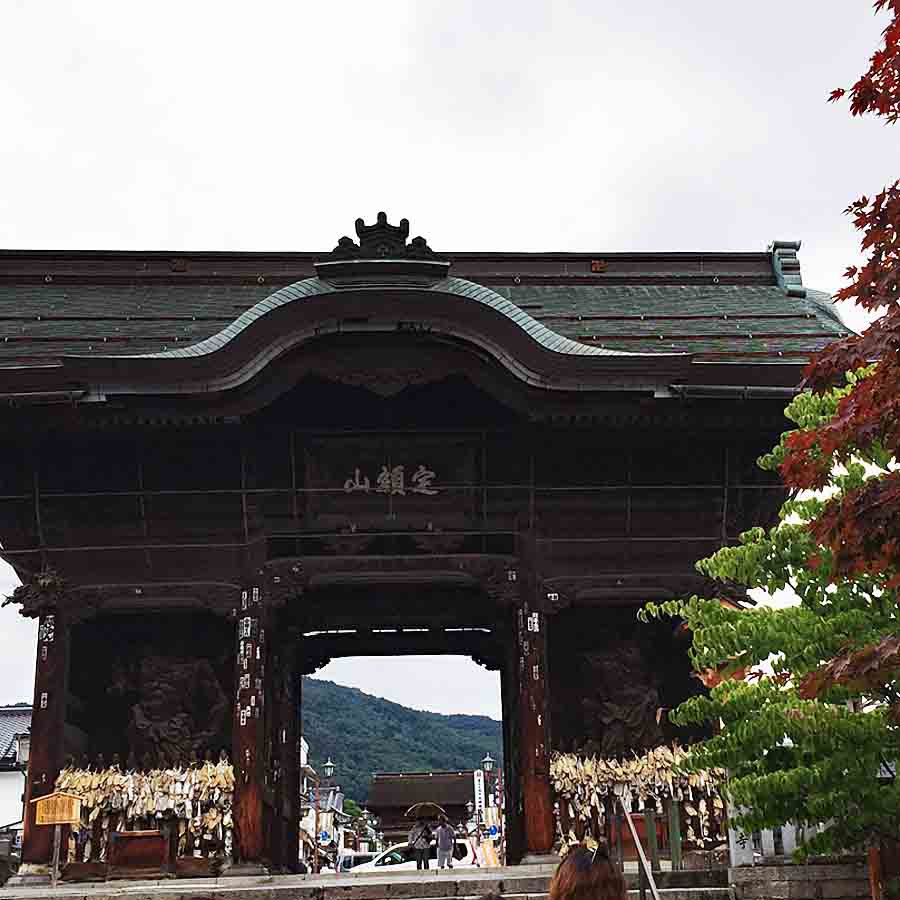
Zenkoji Temple in Nagano
Founded 642 AD, Zenkoji is one of the most significant and worshipped temples in Japan.
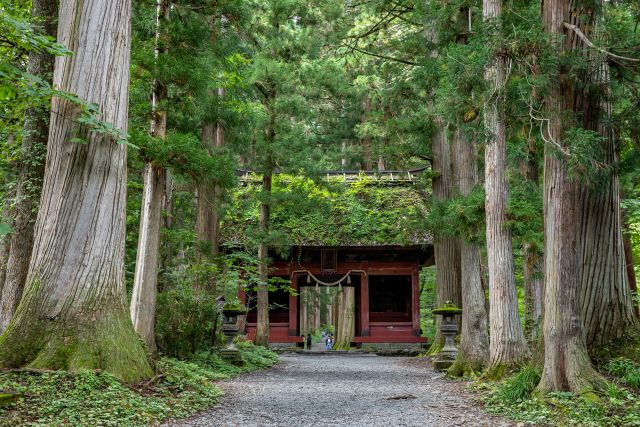
Spiritual walk in Togakushi
You will walk in the sacred forest of Togakushi with Kagami-ike Pond ablaze in autumn foliage.

National Treasure, Matsumoto Castle
Climb up the tower of Matsumoto Castle, one of the few castles that still retain original wooded structure.

Enjoy the pristine nature surrounded by the mountains of Japan Alps.
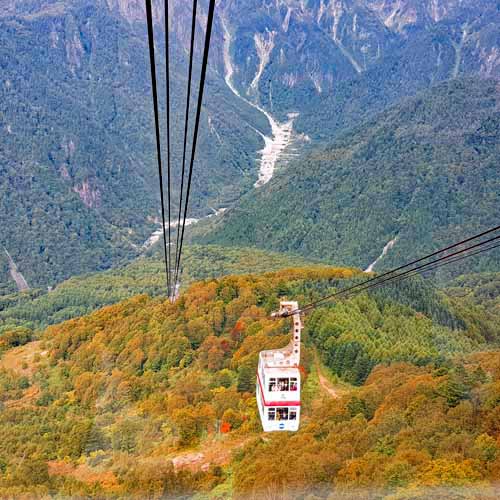
Shin-Hotaka Ropeway
Glide over the coloured mountains to reach the viewing deck at the top.
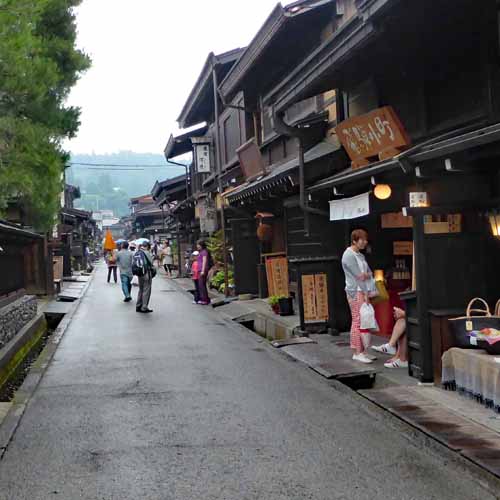
Historical city of Takayama
Amble through the timber cladded merchant houses in old streets of Takayama.
Tour Overview
The 2024 Walking Tour of Nagano & Japan Alps takes you into the heart of the Japanese Alps ablaze with the stunning alpine autumn colours.
Japan is well known for its busy cities and crowded urban areas, but did you know Japan has spectacular natural scenery too? And did you know it is renowned for its pristine wilderness too? This walking tour of Nagano & Japan Alps will have you walk though these beautiful areas so your can experience them for yourself. Expert local guides lead the intimate group of up to 8 travelers on some of the best day walks in Japan on this 8-day adventure.
This Japan Alps Tour takes you along boardwalks and forested trails through pristine Kamikochi and other outstanding national parks not typically visited by international tourists . You will stay in the national parks, enjoy the natural hot springs resort towns as well as some small regional cities. Truly a tour for those who enjoy pristine countryside without being smothered by tourists.
The Japan Alps walking tour offers easy access, starting in Tokyo and ending in Takayama. We highly recommend you spend a few more days of your own at the beginning and/or the end of the group tour to discover endless attractions of Japan, especially if you are first-time visitors of Japan. Journey to the East will be delighted to plan your private itinerary and provide information to suit your interests.
Welcome to Japan! On arrival at Narita or Haneda Airport , you will be met by a Journey to the East guide and escorted to your hotel by an airport shuttle or Narita Express train.
Today is an arrival day and no group program is scheduled. Your hotel is located near glitzy Ginza and famous Tsukiji Market . Why not take a stroll and relax, ready to start the first full day of your 2024 Walking Tour of Nagano and Japan Alps.
*Many of our guests arrive a day or so early to settle in before the tour starts. We can arrange your additional nights accommodation in the same room as the tour.
A shinkansen (bullet train) whisks you away from Tokyo to Nagano in less than 2 hours. Nagano is in the center of Japan's main island, Honshu, and at the base of the Japan Alps. Here you will;
- Visit the magnificent Zenkoji Temple complex, a National Treasure and one of the most important pilgrimage sites in Japan ,
- Walk through a 1.8 km approach leading to Zenkoji, lined with fascinating stores and little restaurants,
- Join in with some of the many interactive experiences as you enjoy the complex,
- Sample shojinryori, the Buddhist vegetarian cuisine for lunch , and local produce at an izakaya restaurant for dinner.
For the next two nights, you will stay at a hotel conveniently located at a central business district of Nagano City.
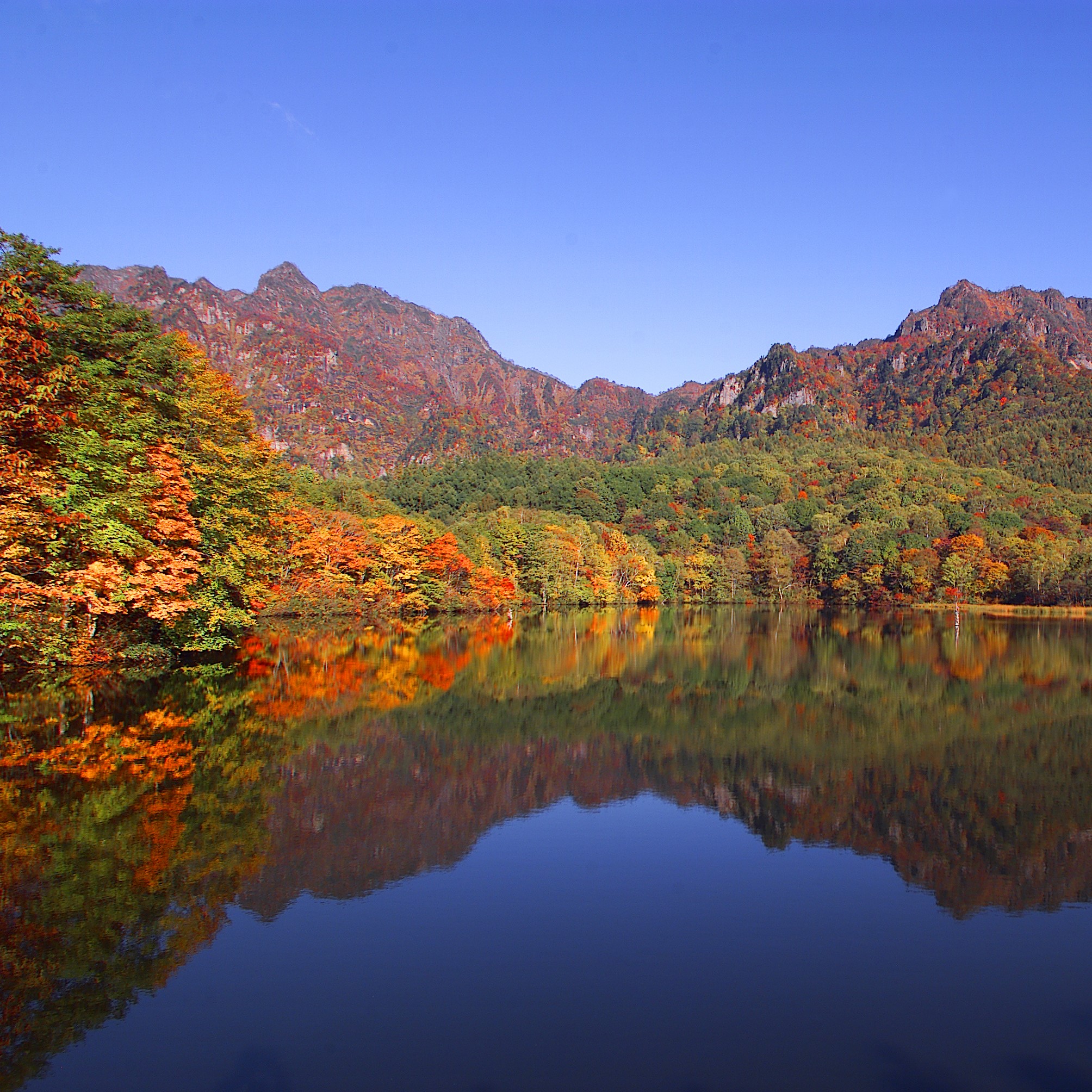
Today' trip takes you to one of Japan's sacred peaks in the Japan Alps, Mt. Togakushi with its forests and shrine are steeped in legend going back some 2,000 years.
The walk today, in the Japanese Alps, is in an area quite inaccessible until modern times , for hundreds of years Mt. Togakushi was a haven of esoteric Buddhist practice. It was frequented by mountain ascetics. We pass by Togakushi-jinja Shrine, famous as a power spot where visitors can absorb the earth's energy of old. Reaching Kagami Ike Pond, you can walk in some of the best autumn scenery in Japan.
It is free evening tonight. Enjoy one of the many restaurants around your hotel tonight. (your guide will make suggestions in accordance with your tastes.)

Aboard an express train, you head for Matsumoto in Nagano Prefecture, in the heartland of the Japan Alps.
During Japan’s feudal period, Matsumoto became an important castle town ruled by a powerful local clan. Today, the city is popular for its cosmopolitan atmosphere, galleries, and stunning alpine setting. After arriving Matsumoto, you will;
- Visit Matsumoto Castle, one of the oldest Japanese structures with five external levels and six internal stories ,
- Walk through the well-preserved old merchant district, Nakamach i and Nawate-Dori, to see the Namako-walled homes.
In the afternoon, you will transfer to tonight's destination, Kamikochi via the Norikura Highland, where you can walk among blazing autumn colours . It is a very pretty area dotted with a series of waterfalls .
You will then arrive at Kamikochi, one of the highlights of the 2024 Walking Tour of Nagano & Japan Alps. Kamikochi, literally translates as “where the gods descend ”. True to its name, it is an alpine plateau is surrounded by mountain ranges exceeding 3,000 meters above sea-level.
You stay in a Japanese style room at one of the mountain lodges in the national park for the next two nights.
(Total walking distance today - about 10-15 km)

In the morning, surrounded by the snow capped Japan alps high above you, your guide will take you on a 6 km walk along boardwalks, which crisscross mossy ponds and streams , and listen to the wind call out through virgin beech forests ablaze in stunning autumn colours as you walk to Myojin-ike Pond .
After relaxing back at Kappabashi Bridge area, you can either stroll at your leisure, or if you are up to it, your guide will be very keen to show another 4 km trek to an outstanding spot, the Taisho-ike Pond .
Another night at beautiful Kamikochi.
(Total walking distance today - about 6 -10 km)

Heading further into the heart of the Japan Alps by a private minibus you arrive at the Mt Hotaka area to :
- Ride the Shin Hotaka Ropeway, the longest ropeway in Japan.
- Stand on the observation deck at the mountain’s peak where you will be stunned by the panoramic views .
- Take a guided walk on one of the best trails, to explore the area and enjoy more of the spectacular autumn scenery .
Your home tonight is Hirayu Onsen, one of the most popular onsen hot spring hamlets in Japan. Enjoy relaxing soak after spending a day in the mountain. (Total walking distance today - about 6 km)
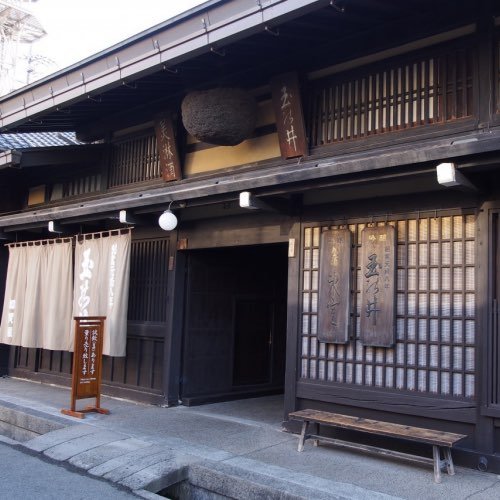
Start the day with another new experience, a traditional Japanese-style breakfast – a beautifully presented and nutritious, it is an experience in itself!
Your private minibus takes you towards Mt Norikura for one last chance to be amongst the autumn foliage and view the snowy peaks of the Japanese Alps .
In the afternoon, you will transfer to Takayama, heart of the rugged Hida Region. A guided tour of very historic town of Takayama, includes;
- A walk through the very photogenic streets of well-preserved timber merchant houses dating from the late 17th century, for you to see what this compact, atmospheric town known for,
- Visit Takayama Jinya to see the history packed, one-time prefectural office for the Tokugawa shogunate in feudal times, and
- Walk through the old streets where locals go for many traditional crafts, such as lacquerware, food items, timber crafts and sake at Sanmachi-suji.
In Takayama, you will stay at an traditional ryokan and enjoy kaiseki dinner, onsen bath and tatami mattress and futon bedding for the last time on the tour.
(Total walking distance today - about 10 km)
After breakfast, your 2024 Walking Tour of Nagano & Japan Alps concludes. Why not spend a little more time in Takayama?
You can return to Tokyo or head to Osaka’s Kansai International Airport for existing Japan.
Perhaps you might like to linger in Japan for a little longer. We will be delighted to plan your personal post-tour extension to show you a different part of Japan. Please see our Model Extension Itineraries to get some inspiration! Or just out knowledgeable travel consultants.
Note: The cost of your transfer to your departure airport is not included in our Small Group Tours (as we have found many guests choose to stay in Japan a bit longer), but we will be happy to arrange your transfer to next destination or to exit airport. Please see our FAQ for more details.
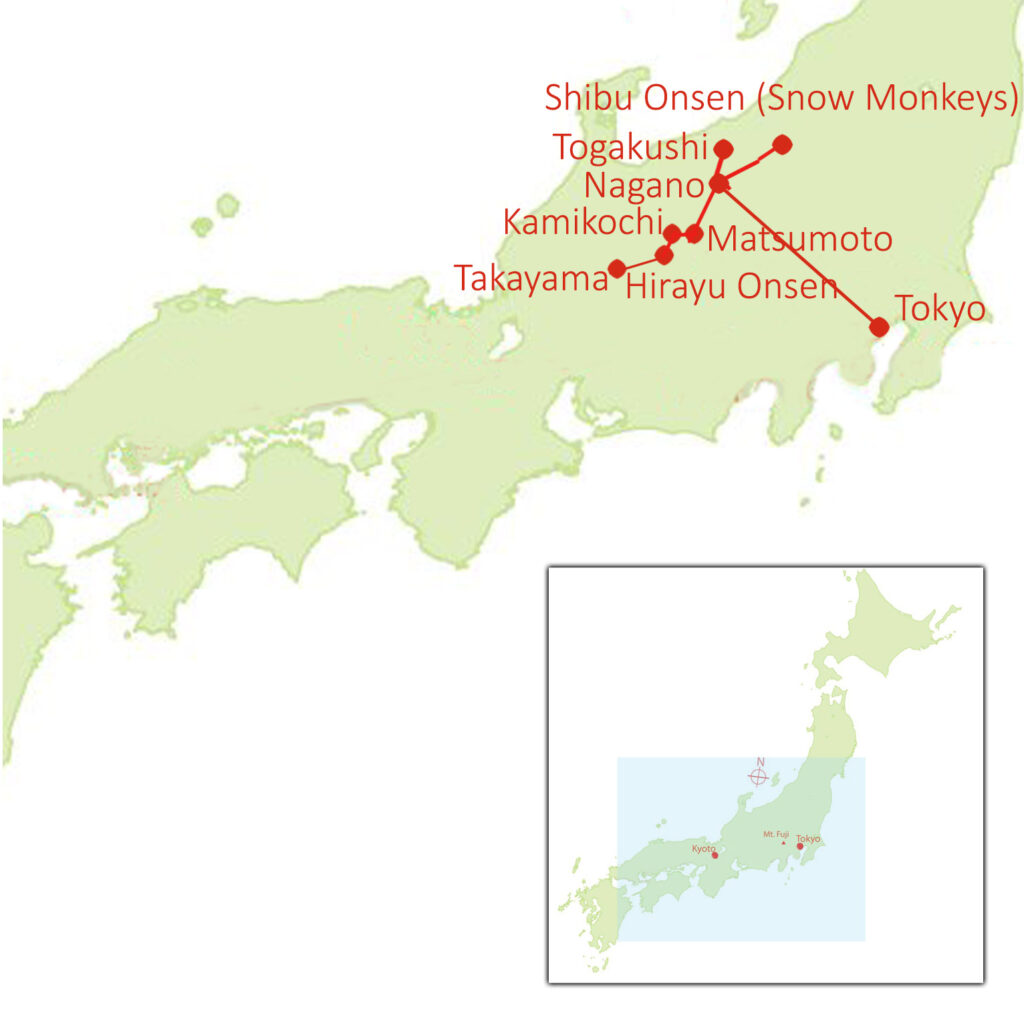
Dates & Prices
Per person twin share:, single supplement.
Each guest is personally looked after with one-on-one interactions with our hand-picked, expert tour guides. As part of your investment, this tour includes:
- First-class wisdom and higher standard of individual care and attention
- 7 nights’ accommodation (including traditional Japanese inns)
- All breakfasts
- 2 lunches (4 free choice lunches)
- 5 dinners (1 free choice dinners)
- Airport meet & greet on arrival in Tokyo
- Hotel transfer by public transport on arrival
- All local transport (train, bus and private minivans)
- Expert English speaking tour guides (Locally licensed)
- Cultural activities and entry fees included in itinerary
- Luggage transfers (1 piece per person)
DISCLAIMER: Unless otherwise stated, this tour does not include the costs of international and domestic airfares, transfers on the last day, travel insurance, alcoholic and non-alcoholic beverages, transport during free time, personal expenses (laundry, internet, telephone, coin lockers etc.) and Visa (if required).

Who this Japan tour is for...
This is a perfect tour for people who:
- Want to enjoy short (6-10 km a day) walks amongst pristine nature and remote part of Japan
- Like leisurely walks without carrying a heavy backpack
- Want to see autumn colours against natural and rural environment with October departure
- Like to learn about traditional cultures by visiting castle, temple, and old towns
- Enjoy a variety and authenticity in accommodation style from resort style hotel to traditional ryokan
We wanted a different kind of tour than most tour companies offered. We wanted to walk/hike and experience some culture in a small group in the autumn in the alps. This trip was perfect in that regard. The tour guides were terrific.
Judith Mozesson
Thank you for designing and delivering a great introduction to Japan. We appreciate the efforts you made to enable this tour during challenging COVID restrictions. (Journey to the East provided) Great support and very responsive to communication. Would recommend to others.
William & Judith Lord
Have a question about this tour get in touch with our staff directly., privacy overview.
We use cookies on this site to enhance your user experience. If you continue to browse, you accept the use of cookies on our site. See our cookies policy for more information.
- Akan-Mashu National Park
- Towada-Hachimantai National Park
- Nikko National Park
- Ise-Shima National Park
- Daisen-Oki National Park
- Aso-Kuju National Park
- Kirishima-Kinkowan National Park
- Keramashoto National Park
- View All Parks
- Water Sports
- Guided Experiences
- Itineraries
- Guides and Stories
- Seasons and Climate
- Good to Know
- Where to Stay
- What to Bring
- Map & Brochure Download
- National Park Story
- Conservation
- Plants & Animals
- Meet a Park Ranger
- Influencer Blogs
Chubusangaku National Park
One-day bus tour of the northern japanese alps.
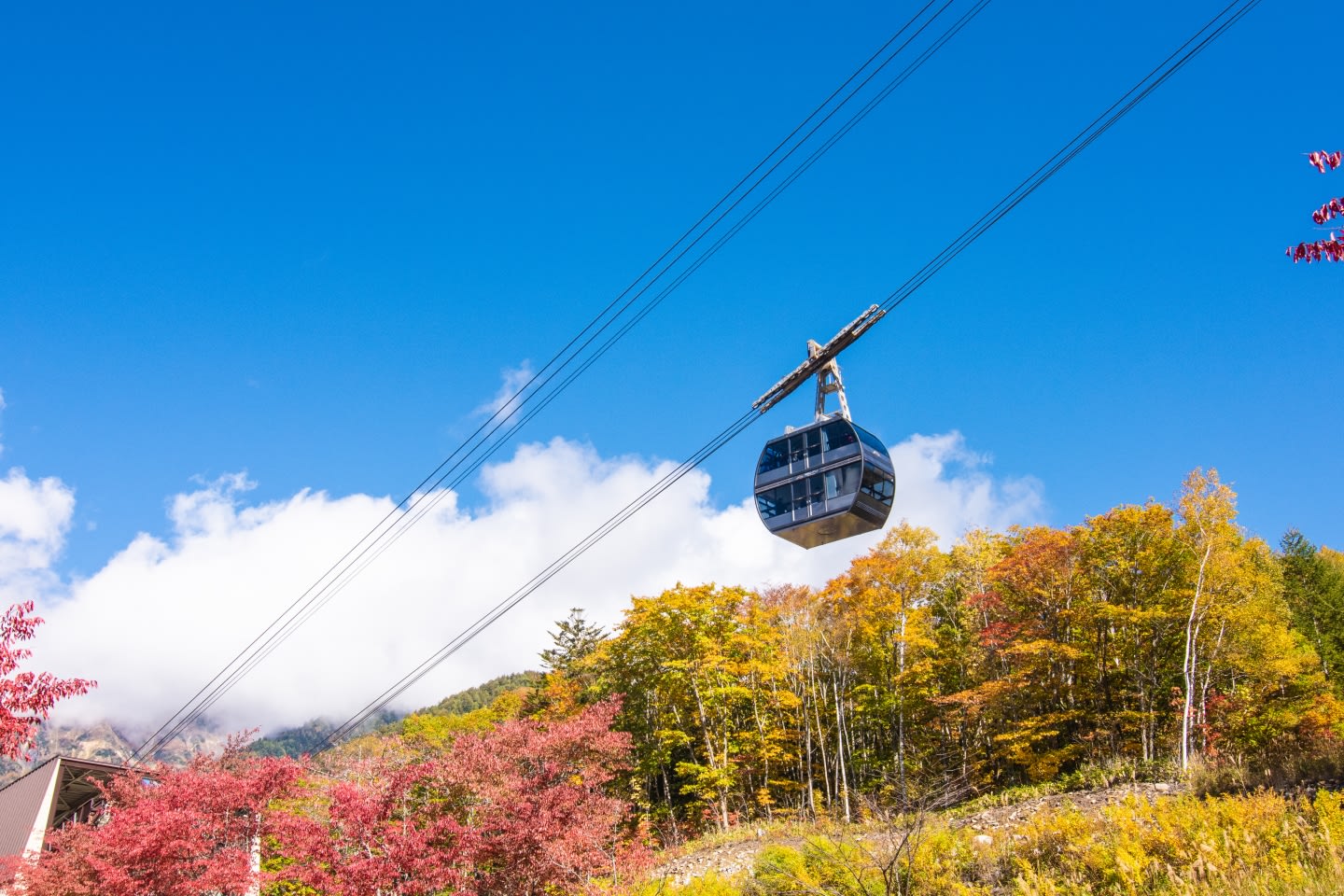
Explore Shinhotaka and Kamikochi by bus in one day
Discover the flowering meadows, waterfalls, and majestic peaks of the Northern Japanese Alps in the summertime on a fixed-route one-day bus tour. The route takes you to two of the most popular sightseeing spots in the Northern Alps—Shinhotaka and Kamikochi. Sit back and relax as you comfortably traverse the rugged landscape with a guide on hand to explain the region’s natural wonders. Tickets for the Shinhotaka Ropeway, which offers panoramic views of the Hida Mountains, and lunch at Hirayu Onsen Hot Springs, are included in the tour.
Other activities
The Japan Alps with Mountain Guides
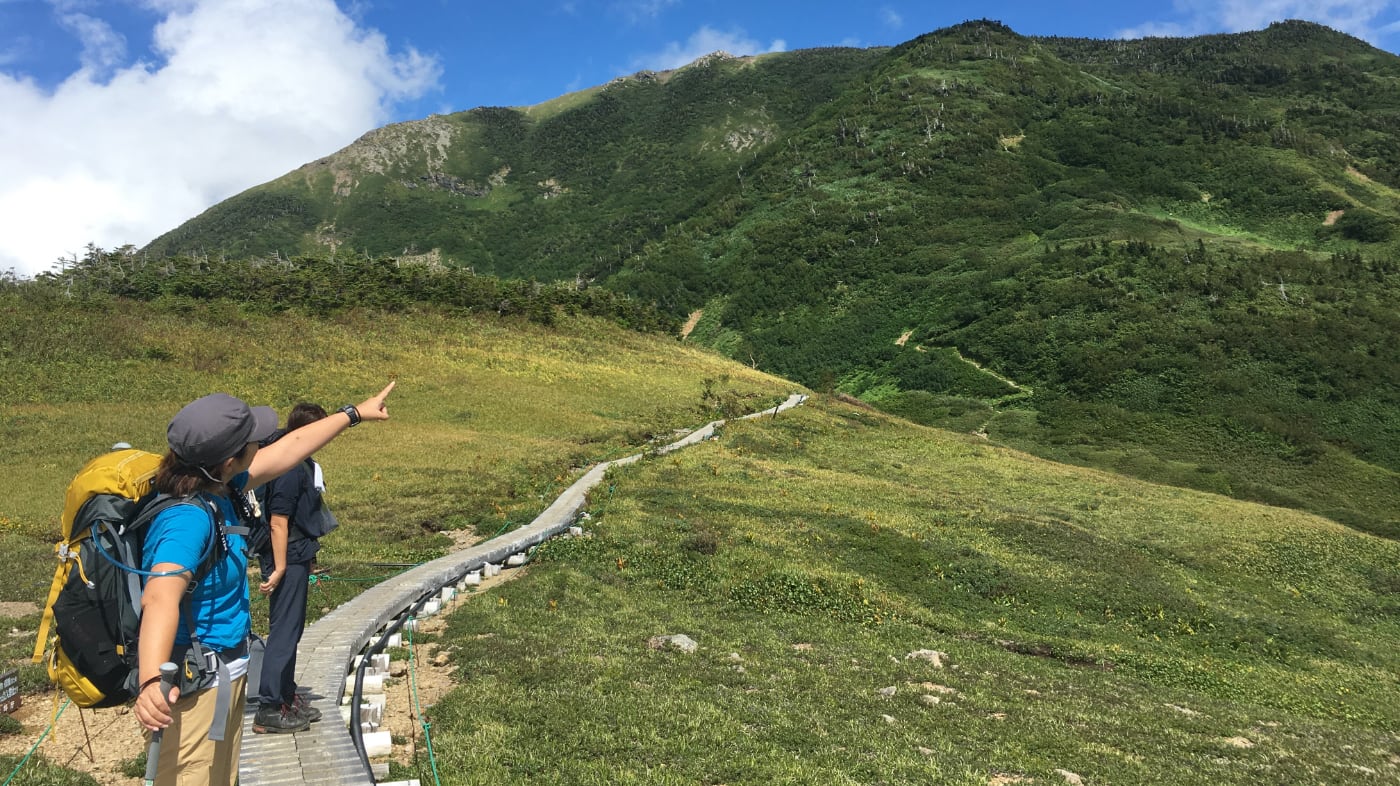
For both people from Japan and overseas who come to visit Japan’s mountains, for novice and expert climbers alike, for the safe enjoyment of Japan’s mountains and the deepest experiences possible.。
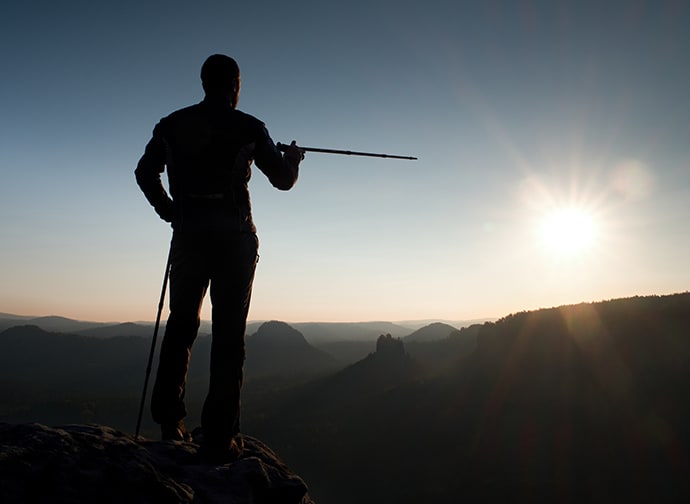
Let’s visit the mountains with a guide!
①guides are great for these situations.
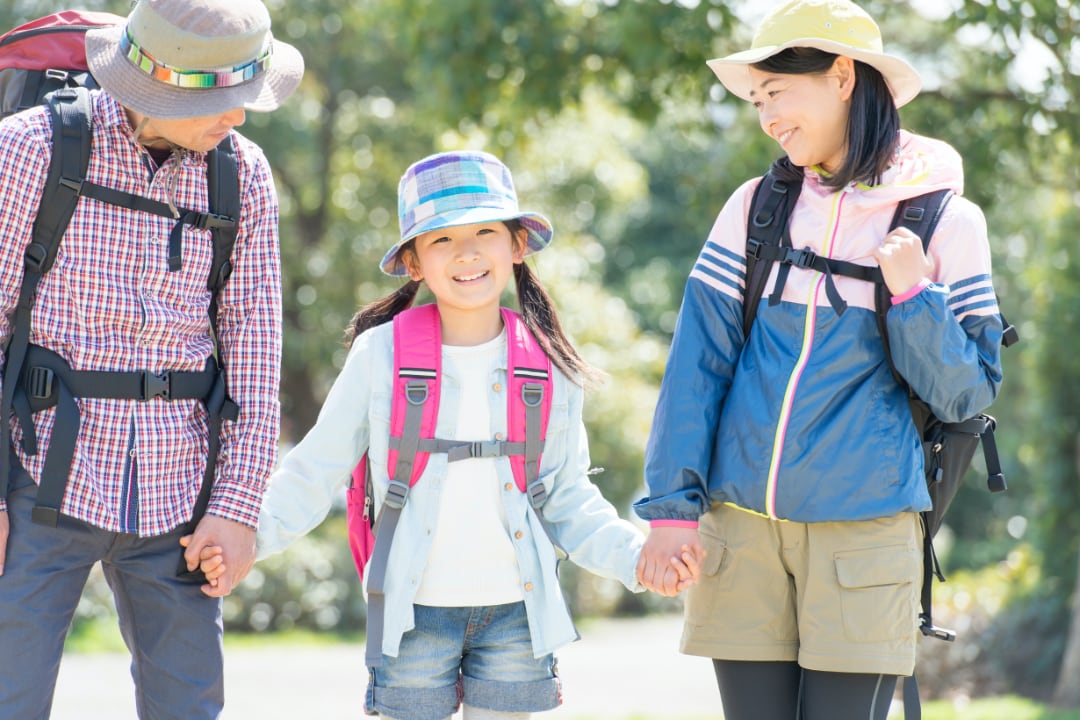
◆I want to take a leisurely day-long hike with my family, but I’d like a knowledgeable guide to accompany us and provide various information for my kids.
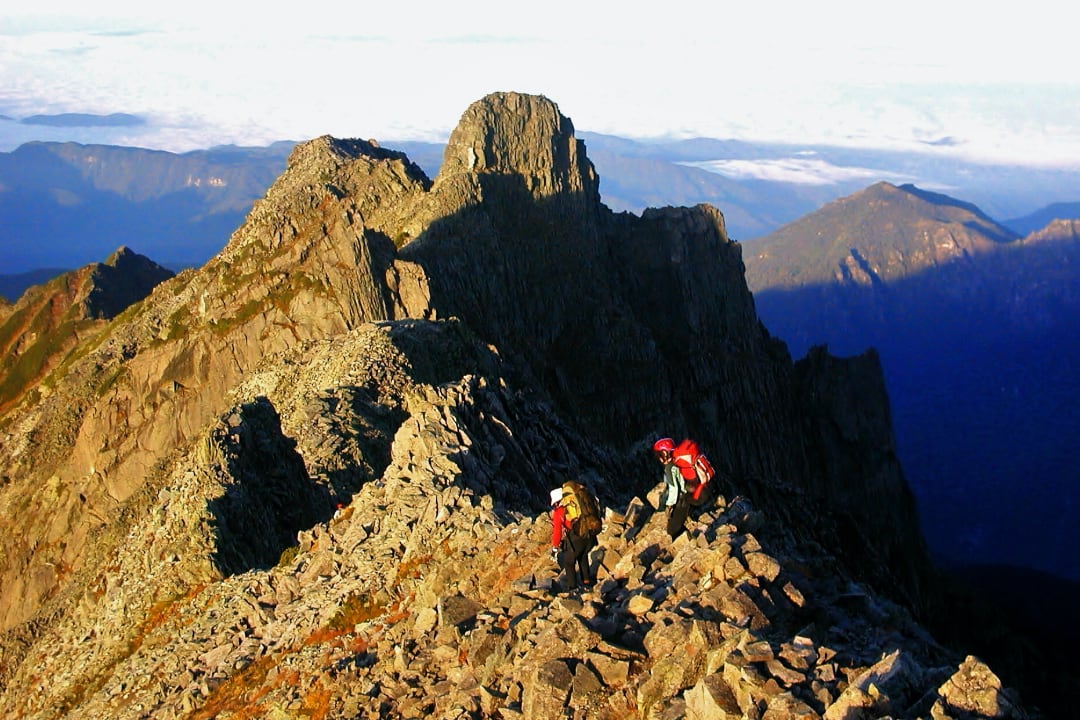
◆I’d like a reliable guide to lead me through a difficult Japan Alps hiking route.
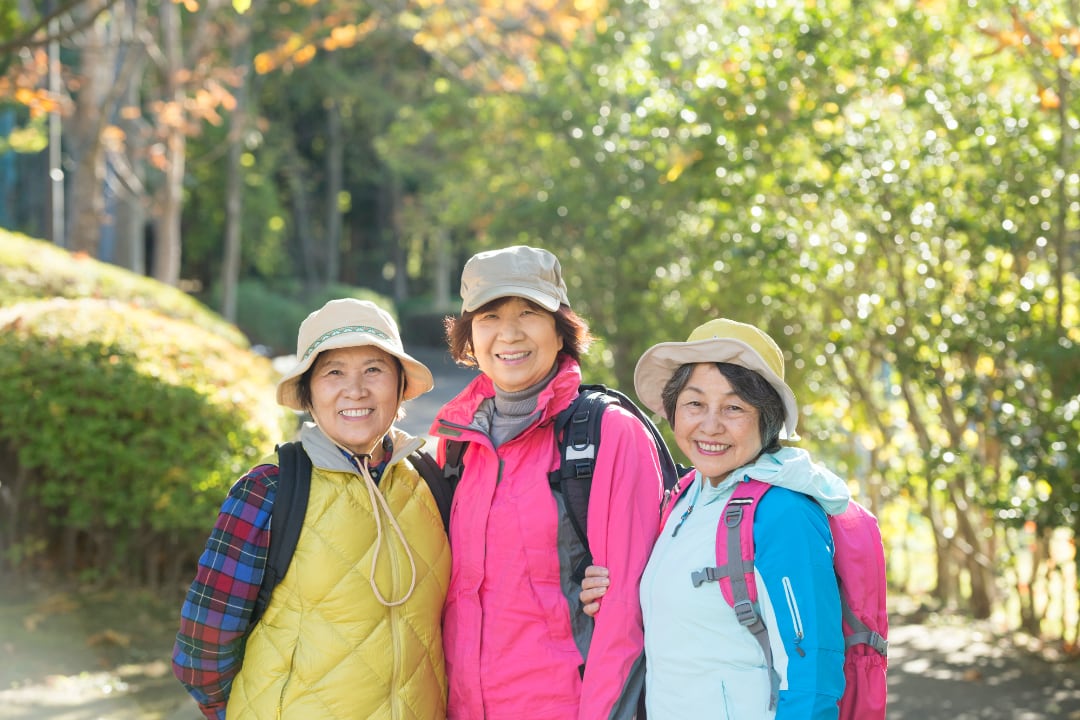
◆A friend and I have just started hiking and we want to try hiking a somewhat high mountain and spend the night in a Japan Alps mountain hut. We have various questions about the mountains we want to ask.
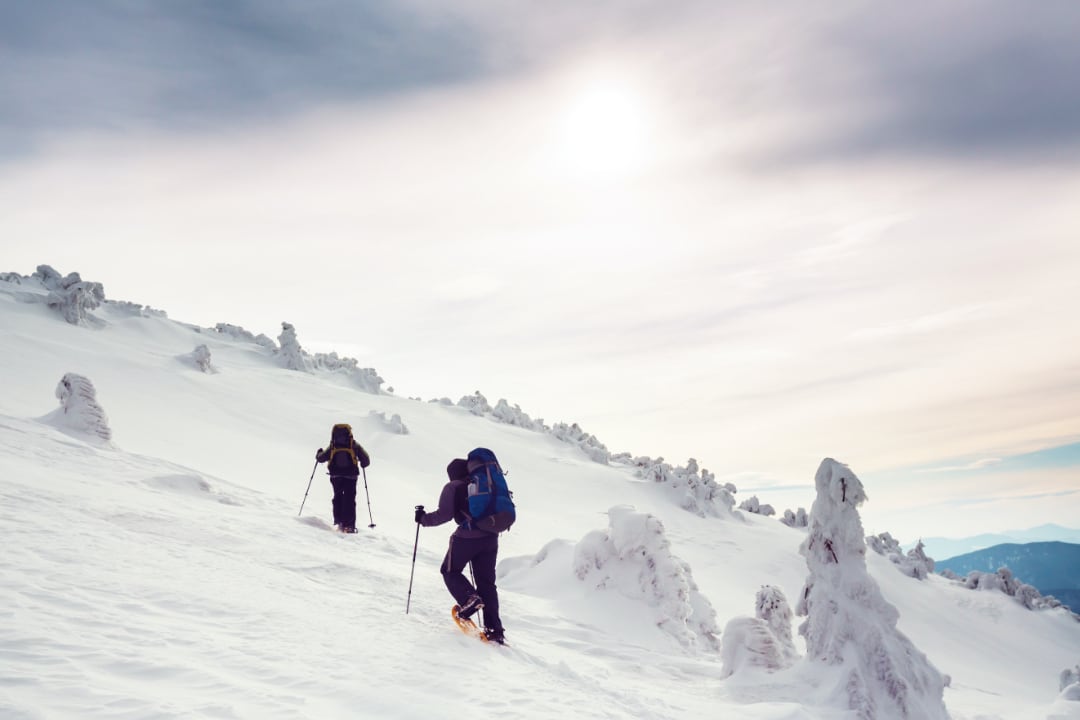
◆I want to try experiencing the Japan Alps in the dead of winter, but I’d like to request an expert guide to ensure I return safely.
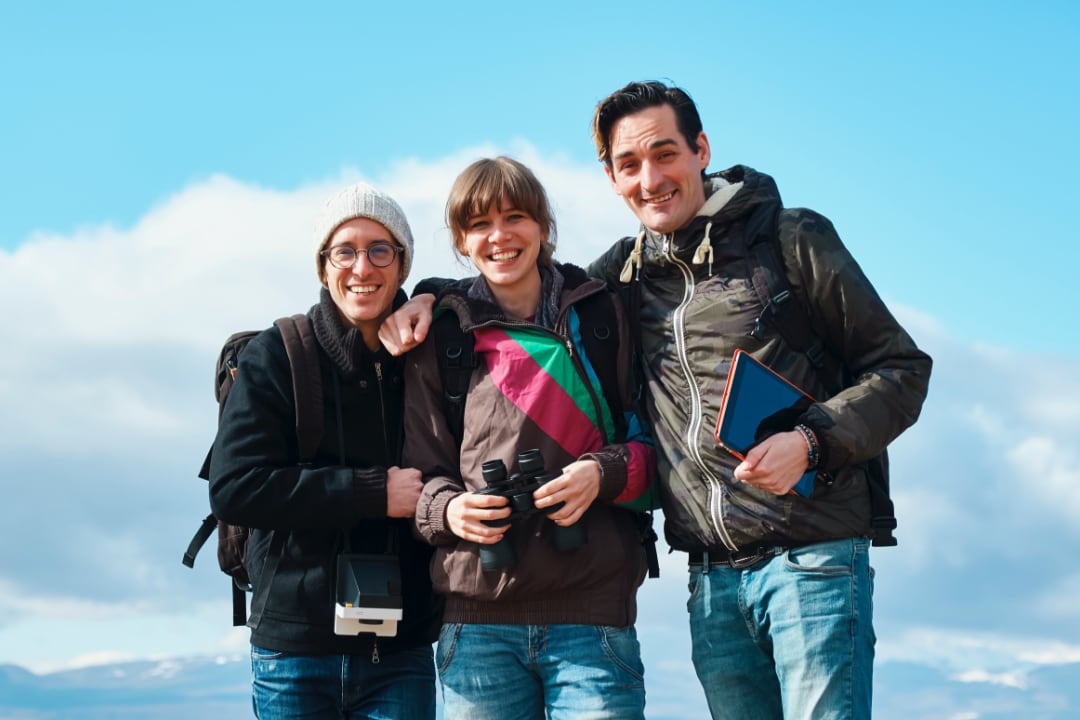
◆I want to try climbing the Japan Alps for the first time, and I’d like to request a guide that I can communicate with in English.
②Check before you make your request!
Clarify your purpose.
Climb or hike? Do you want to climb up a mountain, walk along flatter surfaces, or see the amazing view from the summit of a mountain? Do you want to look at the flowers along the way, see changing autumnal leaves, or are you not particular about location? It’s all good!
Decide who you’re going with and how many people
Family? Friends? How many people will travel together?
Be honest about your mountaineering experience and skills
There should be no more than 5 participants per guide, ③decide on the type of guide you’d like. “i would like you to take me to the mountains”.
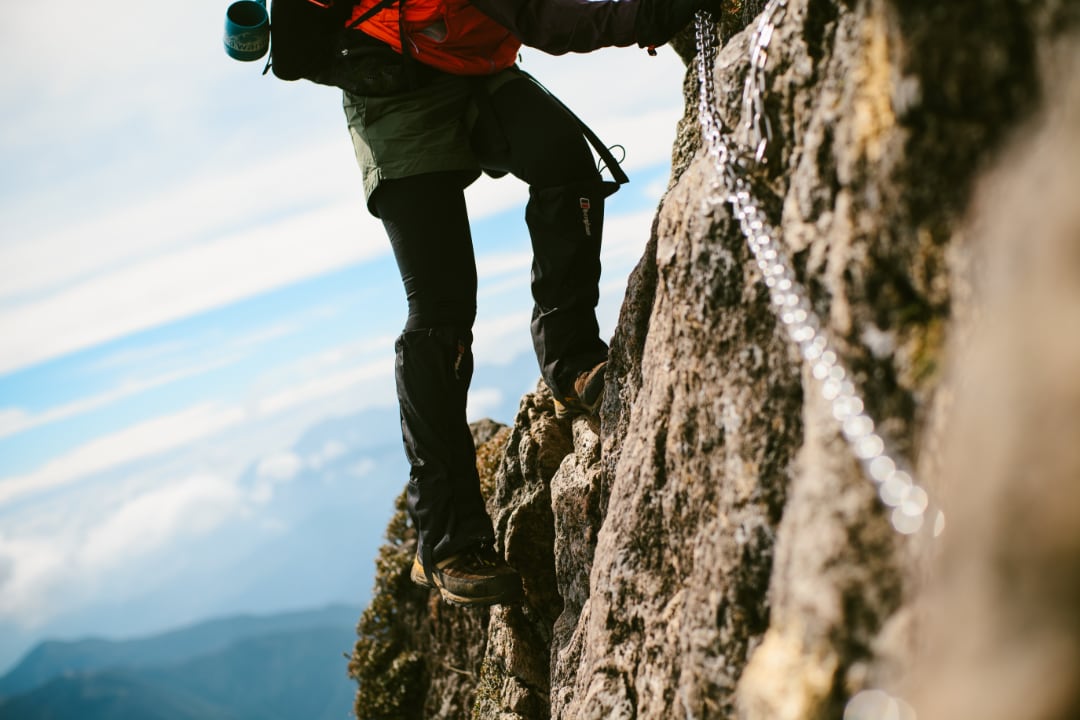
◆An earnest guide
Guides are all mountain professionals who are passionate about what they do, but the truly earnest guides maintain a website, blog, or social media account to communicate their activities, including their guide activities, to the outside world, so looking at that content may give you a point of reference to help you make your decision. The level of trust you feel in a guide increases when they themselves are mountain climbers, and the passion possessed by a guide comes across when they have a keen interest in equipment and tools and use the latest items before anyone else.
◆A guide who understands what it means to be a guide
You want a guide who is aware that they are providing a service. A guide’s first priority must be a safe and secure climb. Therefore, it makes sense that there may be times when a guide needs to be a little stern during a climb. However, climbing and hiking should be fun. As your climbing partner, it is essential that your guide can make calm decisions and be strong, but they must also be able to adapt to their client and the objective of their client’s trip. You want a guide who is able to provide more than just safety and security in their guidance.
◆It conveys a sense of fun that is not limited to scaling a summit.
As someone making a request, for example, it may be a good idea to ask a person who is familiar with alpine plants if the goal is flowers. If the theme of the trip is “mountains and alpine flora,” you may be able to learn about alpine flora you never knew existed. In the future, mountain travel will not only be about reaching the peak. It’s not just about alpine plants, but also about wild animals beginning with the Rock ptarmigan which has been a hot topic recently, TV travel program lit by geographics topics like geology, tents with superb views, the highest onsen in Japan and the deepest onsen in the Japan Alps, the interest in mountain trips is endless. Mountain guides are the people who invite you on such memorable mountain trips. Know the conditions before requesting a guide.
Standard Guide Contract
Generally, the cost to request a guide for one day in the summer season is ¥33,000 per day. → For example, if you are a group of 5 people, that is ¥6600 per person per day. Of course, rates vary depending on the guide’s skills, and extra costs can apply depending on whether the mountain is snowy, the difficulty of the route you choose, whether you want an English-speaking guide, or other options. Travel expenses, the cost of staying overnight in a mountain hut, etc., are all additional and separate expenses. * Please inquire directly for actual costs. It is possible to consult with your guide beforehand regarding the points you will be guided to on the day, the equipment you’ll need, and the route you’ll take. It may be reassuring to get to know your guide as a mountain consultant to rely on after your climb, too.
Avoid these things at all costs.
●don’t cancel at the last minute don’t be a no-show.
Mountain guides operate as proprietors of their own businesses. A cancellation, even in the summer season, means a lost opportunity and a big blow to business, so sudden cancellations are unacceptable. If you must cancel for some unavoidable reason, then please make sure to pay the pre-determined cancellation fee.
●Don’t be a mountain planning thief!
Sometimes there are people who request a plan to go mountain climbing, but then decide not to go. This may seem like common sense, but when you request a plan ahead of your trip, make sure to discuss and confirm with your guide at what point costs are incurred and their breakdown. Good mountaineers cultivate good guides, who in turn cultivate new, good mountaineers. This cycle is what creates a wonderful mountain environment.
What exactly are the qualifications of mountain guides in Japan?
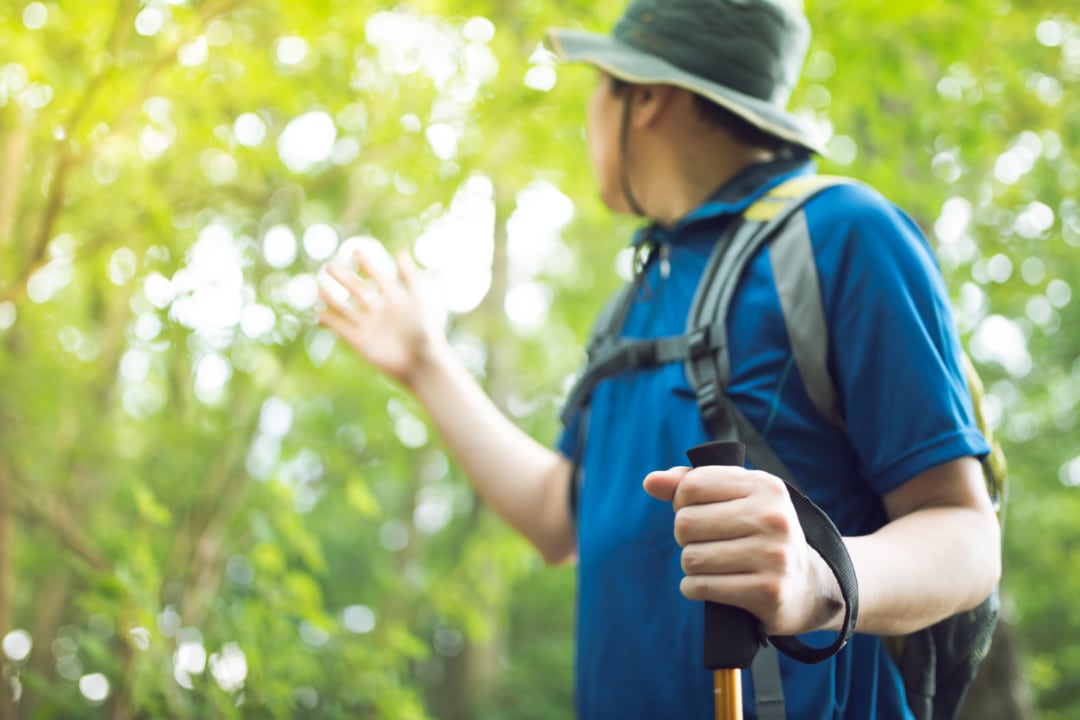
The mountain guide qualification in Japan is not currently a government certification, but in the past, each municipality, region, and organization operated under their own standards and now the qualifications recognized by the International Federation of Mountain Guides Associations have been consolidated as a guide certification recognized by the Japan Mountain Guides Association and preparations are underway to make it a national qualification. There are currently more than 1,500 active guides with this certification. There are several different types of certifications, and the scope of activity a guide can cover is based on the content of their certification.
Tour & Guide menu

Complete Travel Guide – The Japanese Alps
As an Amazon Associate, I earn from qualifying purchases
The Japanese Alps are a range of mountains in Japan, stretching across the Honshu , Shikoku, and Kyushu islands.
The range forms the spine of the main island of Honshu and is located on the border between Yamanashi and Nagano prefectures.
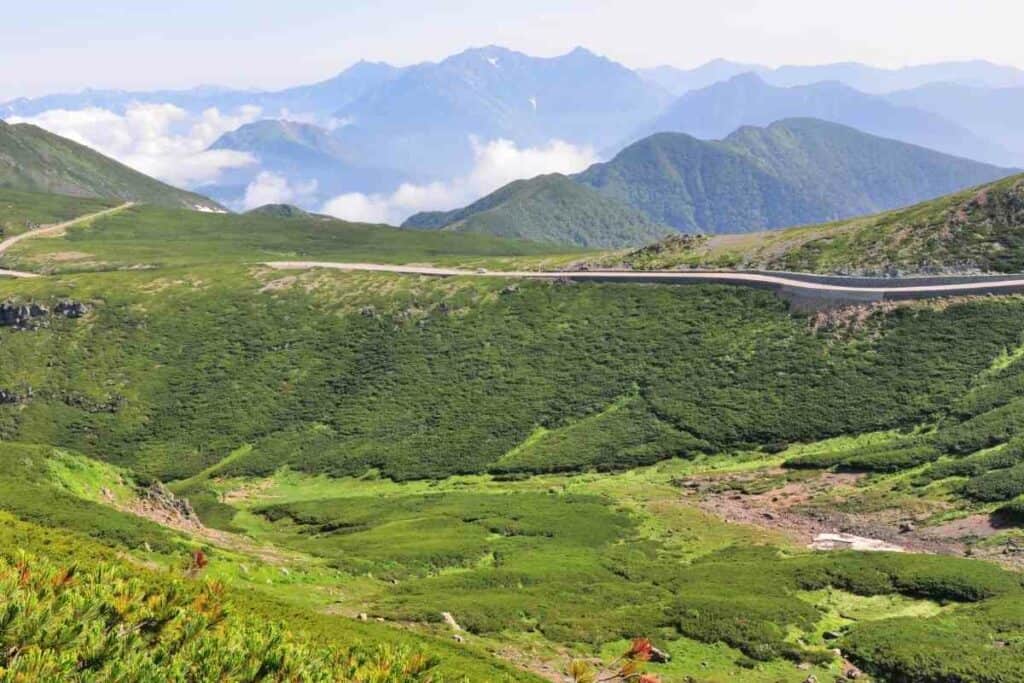
The Japanese Alps are a popular destination for hiking and skiing and offer some of the most stunning scenery in all of Japan.
What to Expect? In this complete travel guide, we’ll give you all the information you need to plan your trip to the Japanese Alps, including where to go, what to do, and where to stay.
Table of Contents
Overview of the Japanese Alps and what to expect
The Japanese Alps are a mountain range that runs through the central part of Japan.
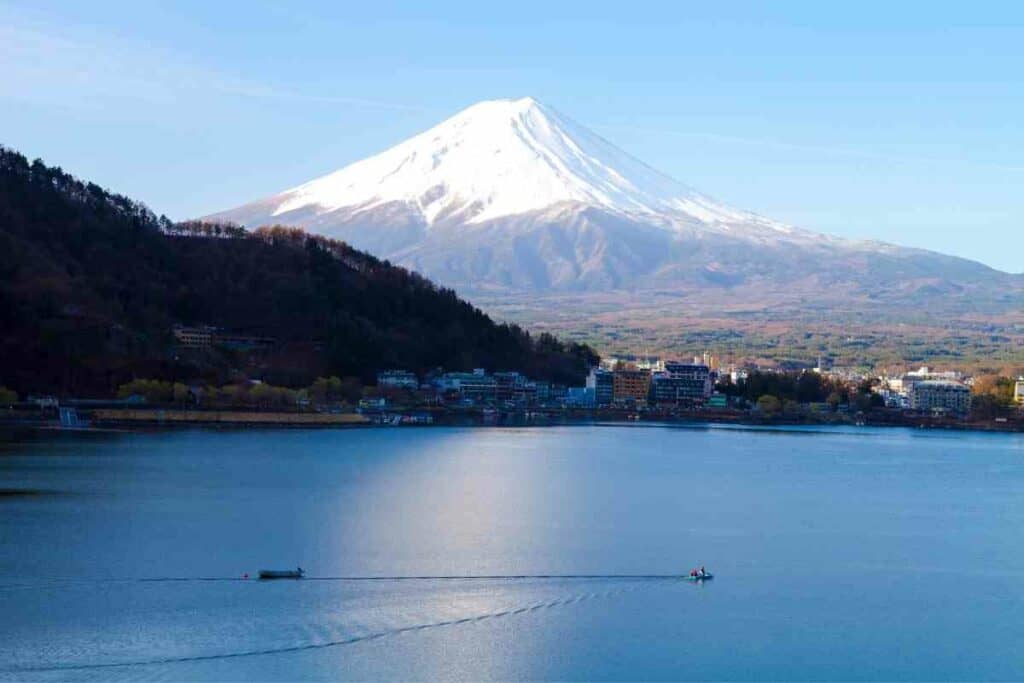
The range includes several peaks over 3,000 meters (9,800 feet), including:
- Mount Ontake
- Mount Norikura
- and Mount Fuji
The Japanese Alps are a popular destination for both winter and summer activities.
In the winter, the area is popular for skiing and snowboarding, while in the summer, hiking and camping are popular activities.
The Japanese Alps offer some of the most stunning scenery in all of Japan.
The range is home to many forests, rivers, and lakes, as well as numerous hot springs.
Climate and Temperature
The Japanese Alps experience a wide range of temperatures, depending on the time of year and elevation.
In general, the summers are hot and humid, with temperatures often reaching 86 degrees Fahrenheit.
The winters are cold, with temperatures often dropping below 32 degrees Fahrenheit.
This chart shows the average temperature and weather information for 30 years.
If you like less humid weather, you should plan a trip during April or May.
If you don’t want the weather to drop below freezing at night, but don’t want sweltering heat during the day, plan a trip from April to June or September to November.
Where to stay
When planning a trip to the Japanese Alps, it’s important to choose a city to stay in that is close to the mountain range.
There are several cities near the Japanese Alps, including Matsumoto, Nagano , and Takayama.
You may also like 📖
- 5 Best Hotels In Takayama
Matsumoto is located in the center of the Japanese Alps and is a popular base for exploring the mountains.
The city is home to Matsumoto Castle, one of Japan’s most famous castles.
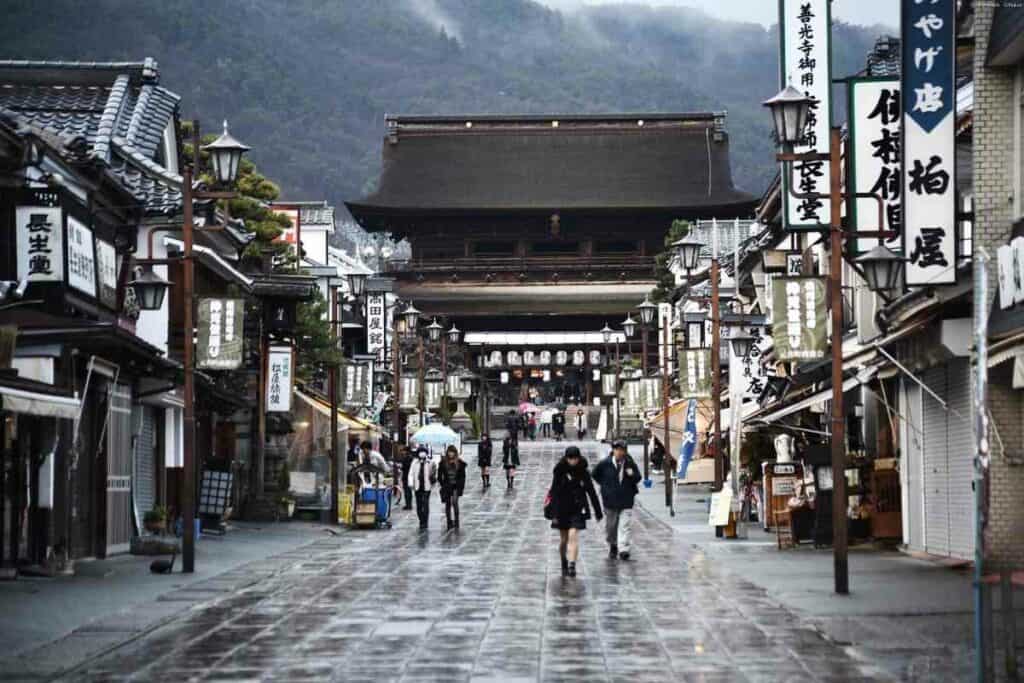
Nagano is located on the southern edge of the Japanese Alps and was the host city for the 1998 Winter Olympics.
This is a great city to stay in if you’re interested in winter activities , such as skiing and snowboarding.
Takayama is located in the northern part of the Japanese Alps and is known for its traditional architecture and folk art.
From here it is easy to explore the mountains, making this a great spot to stay if you are wanting a mountain adventure.
Nikko is located on the eastern edge of the Japanese Alps and is home to Nikko National Park.
This is another popular city to stay in if you want to explore the mountains or visit the national park.
- 5 Best Hotels In Nikkō
Kanazawa city is located in the middle of the Japanese Alps, and its proximity to the sea makes it a popular spot for hiking, camping, and skiing.
There are several national parks and scenic areas nearby, as well as hot springs and other attractions.
What to do and see in the Japanese Alps
There are many different activities to enjoy in the Japanese Alps, depending on your interests.
Nature and Outdoor Activities
For those interested in outdoor activities, there are plenty of hiking and camping options available.
There are several national parks including Nikko National Park, which is perfect for hiking and exploring the mountains.
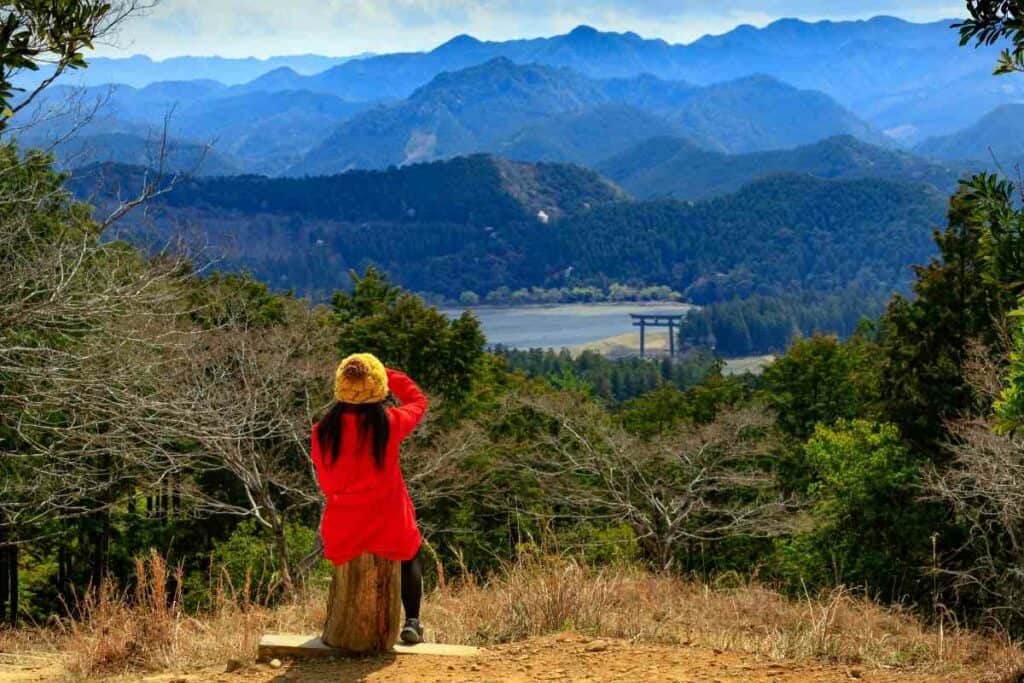
If you like monkeys, make sure Jigokudani Monkey Park is on your list of things to see.
This park is home to Japanese Macaques that come down from the mountains to soak in the hot springs.
During the Winter – The Japanese Alps are a popular destination for skiing and snowboarding. There are many different ski resorts located throughout the mountain range, so you can find one that is perfect for your skill level.
Culture and History
For those interested in culture and history, the Japanese Alps are home to several temples and shrines, as well as the famous World Heritage site of Shirakawa-go.
Shirakawa-go is a World Heritage site located in the Japanese Alps.
The site is known for its traditional thatched-roof houses, which were designed to withstand heavy snowfall in the region.
Also Read 📖
- Does it snow in Japan?
There are several temples located in the Japanese Alps, including the following:
- Konpon Daito: A Buddhist temple located in the Japanese Alps. The temple is known for its large statue of Buddha, which is said to be the largest in Japan.
- Manai Shrine: The Manai Shrine is known for the waterfalls located behind it. The falls are said to be the site of a famous love story between two lovers and are said to be especially beautiful in the springtime.
- Sengen Shrine: A Shinto shrine located in the city of Fujiyoshida, Yamanashi Prefecture, Japan. The shrine is dedicated to the worship of Mount Fuji and is one of the most popular tourist destinations in the area.
- Oku-no-in: A shrine dedicated to the spirits of Emperor Jimmu and his consort, Empress Suiko. The shrine is a popular tourist destination and is known for its beautiful gardens.
If you’re into larger historical buildings, check out Matsumoto Castle.
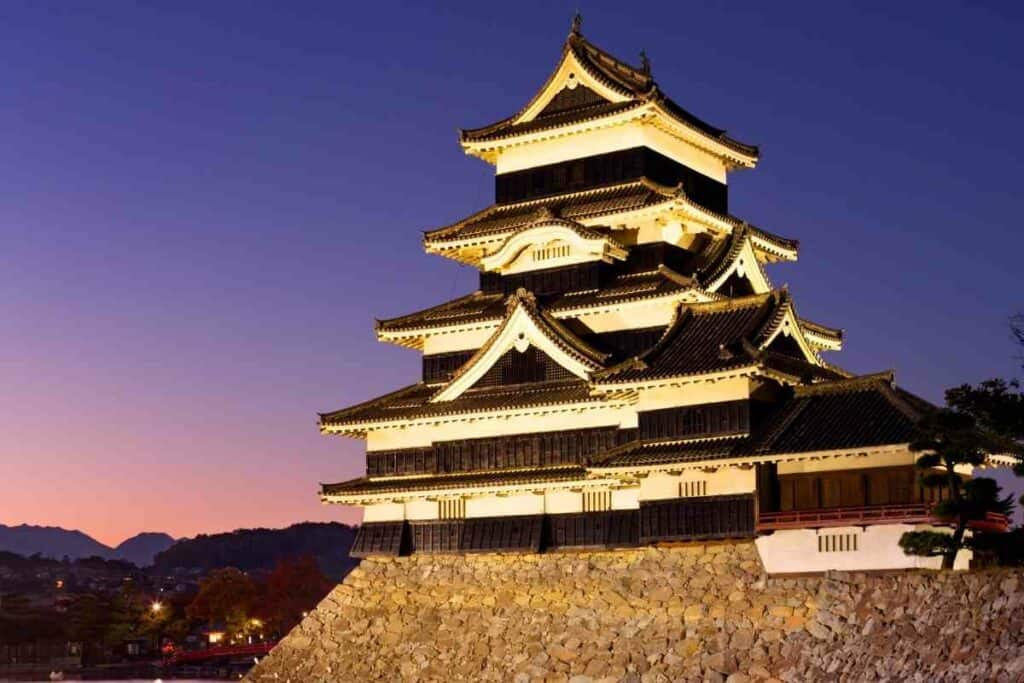
The keep of the castle is original and was built in the 1500s. The rest of the castle was rebuilt in the 1960s after a fire destroyed much of it.
The castle grounds are also worth exploring, as they contain a moat, an inner citadel, and several turrets.
Relaxing in Nature
Finally, for those interested in relaxation, the Japanese Alps offer numerous hot springs, or onsens, where you can soak in the warm waters and enjoy the stunning scenery.

Some of the onsens in the Japanese alps are:
- Kusatsu Onsen in Gunma
- Hakuba Onsen in Nagano
- Nozawa Onsen in Nagano
- Shibu Onsen in Nagano
Most of the onsens are in Nagano, so if relaxation is what you’re after, consider spending a few extra days there.
Exploring the Japanese Alps isn’t just reconnecting with nature and history.
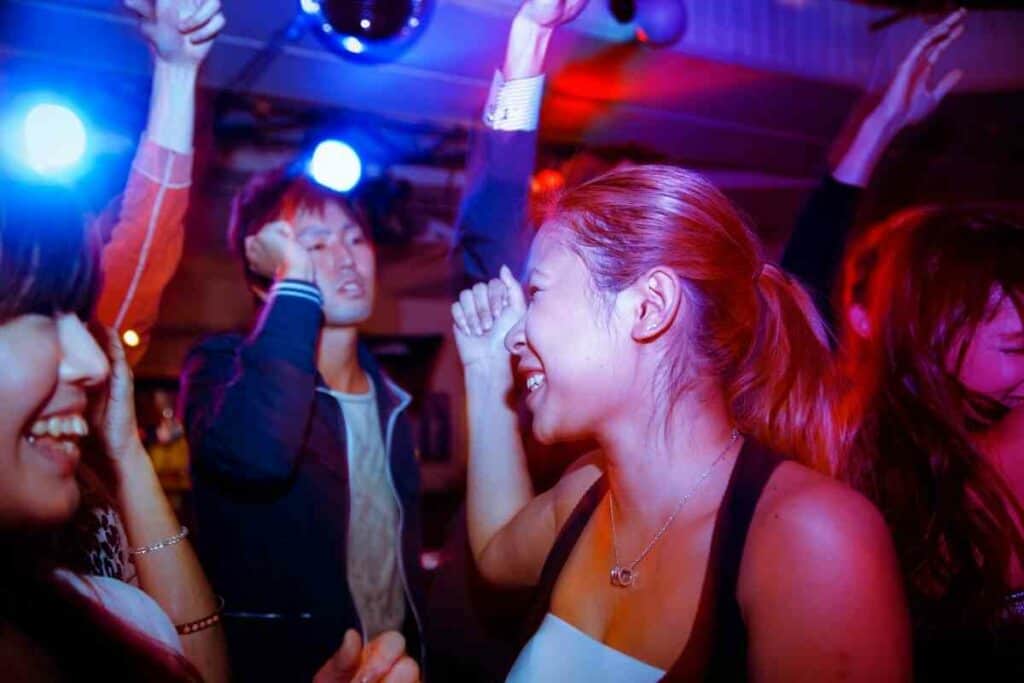
There are also places to visit if you like living the nightlife.
- Eonta : Close to Matsumoto castle, this jazz bar has been playing music for locals and tourists since the 1970s. Sit on comfortable couches while browsing a list of cocktails to keep your night light and fun.
- Oriental Brewing : Oriental Brewing opened two locations in Kanazawa; one in Higashiyama, and the one closer to the Japanese Alps in Korinbo. These pubs keep domestic brews and their own brews on tap, and they have happy hour from 4-6 Monday to Friday.
- Pole-Pole : A reggae bar that’s open until 5 am every morning. The two rooms fill up quickly, so if you want somewhere to sit, arrive before midnight.
- Red Hill : Branded as Japan’s Friendliest Bar, Red Hill sits on a quiet back street in Takayama. They serve domestic beers , imported beers (for travelers missing home), sake, and classic cocktails.
Where and What to Eat
There are many different types of food available in the Japanese Alps, depending on your preferences.
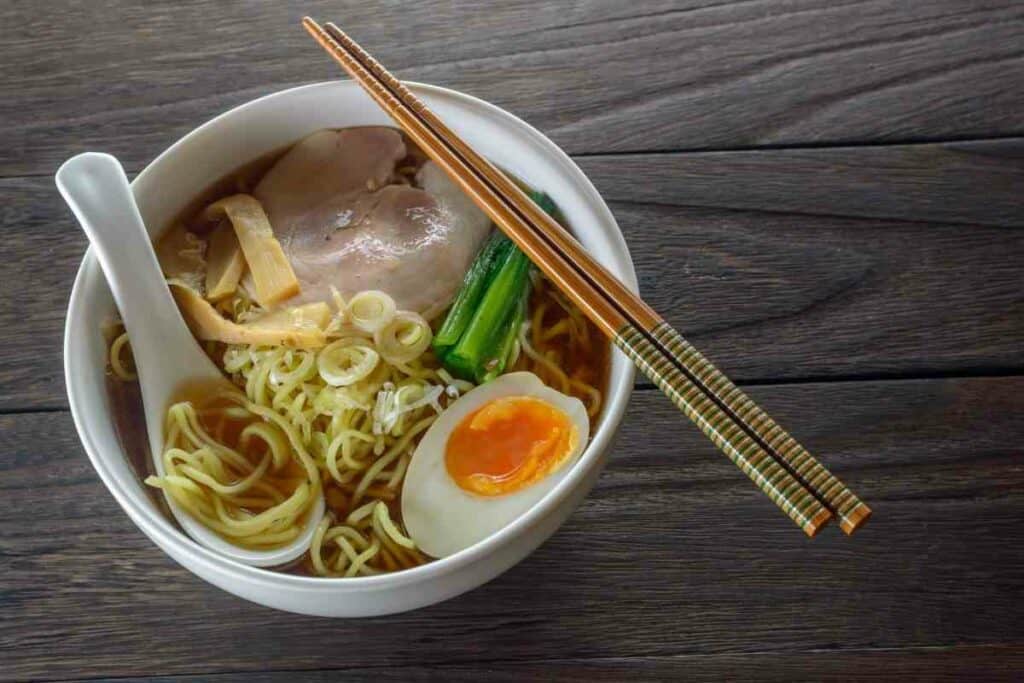
For those interested in traditional Japanese cuisine, the area is home to many different types of sushi and other Japanese favorites such as tempura and ramen.
For those interested in trying something new, the Japanese Alps are also home to several international restaurants, including Chinese, Italian, and French options.
Not everyone is lucky enough to be able to take as much time as they want to explore the Japanese Alps, but whether you can make plans to spend a day there, a week there, or even longer than that there are plenty of places to go and things to see to make your trip worth it.
Here are a few examples of different itineraries for a 6-day trip, an 11-day trip, and an 18-day trip.
6 Day Itinerary
Day 1: Kanazawa
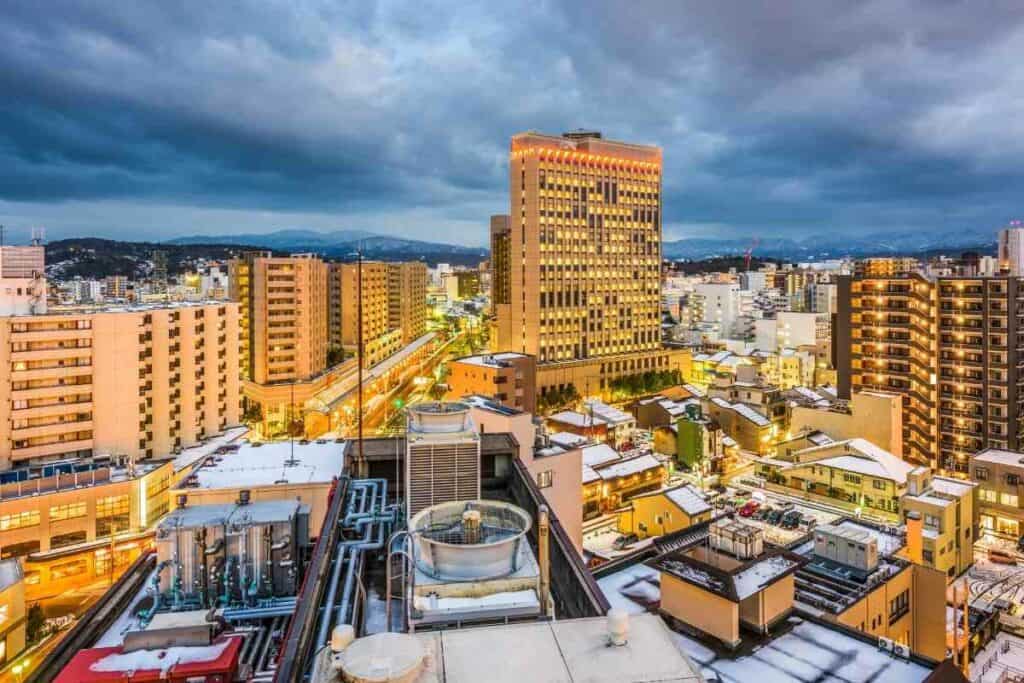
- Visit one of Japan’s most beautiful gardens; Kenruko-en Garden.
- Take a look at old Samurai neighborhoods; Nagamachi and Katamachi.
Day 2: Shirakawa-go
- Appreciate the architecture of the old Gassho-Zukuri farmhouses.
- Hike to the Shirakawa-go viewpoint with views overlooking the village.
Day 3 : Takayama
- Visit the old Edo period streets in the Sanmachi Suji historic district.
- Hida folk village is an outdoor museum featuring over 30 houses built in the Edo period and relocated to make the museum.
Day 4-5 : Kamikochi
- Dakesawa hike will take 3 to 4 hours depending on your skill level.
- Mount Yakedake is a 5-hour hike up an active volcano.
Read next – Kamikochi Hiking Guide
Day 6 : Matsumoto
- Visit one of the most complete castles in Japan, Matsumoto Castle.
11 Day Itinerary
Day 1-4 : Tokyo
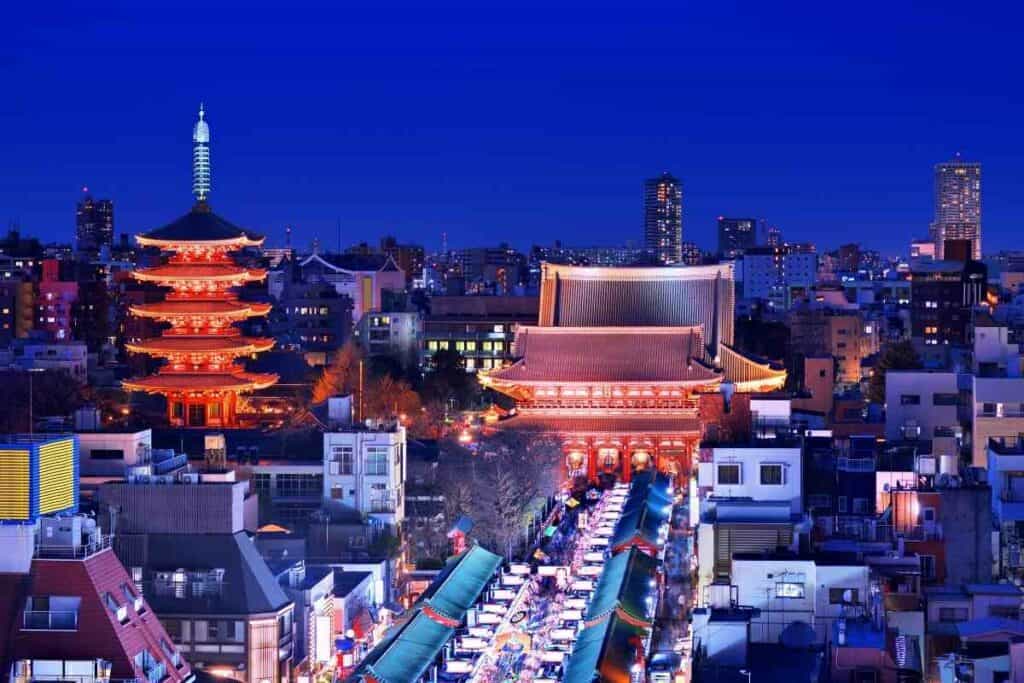
- Hamarikyu Gardens is a popular spot for photographers, featuring a large pond with an island in the center.
- Visit Tokyo’s oldest Buddhist temple; Sensoji Temple
- Take a day to visit Kamakura, the small coastal town with dozens of Buddhist temples and Shinto shrines.
- Daibutsu translates to Giant Buddha, which is exactly what you’ll find in Tokyo.
Read next – 5 Best Hotels in Kamakura
Day 5 : Matsumoto
- The famously photogenic castle that’s already been talked about a few times is a must-see in Matsumoto.
- With over 100,000 wooden printing blocks, Ukiyo-e Museum should be on the list of any art lover visiting Matsumoto.
Read Next 📖
- Art Of Japanese Woodblock Printing
Day 6 : Tsumago
- Hike part of the Nakasendo Highway. In the three hours it takes to walk the trail you’ll see bamboo groves, forest paths, rice paddies, shrines, and waterfalls.
Day 7-10 : Kyoto
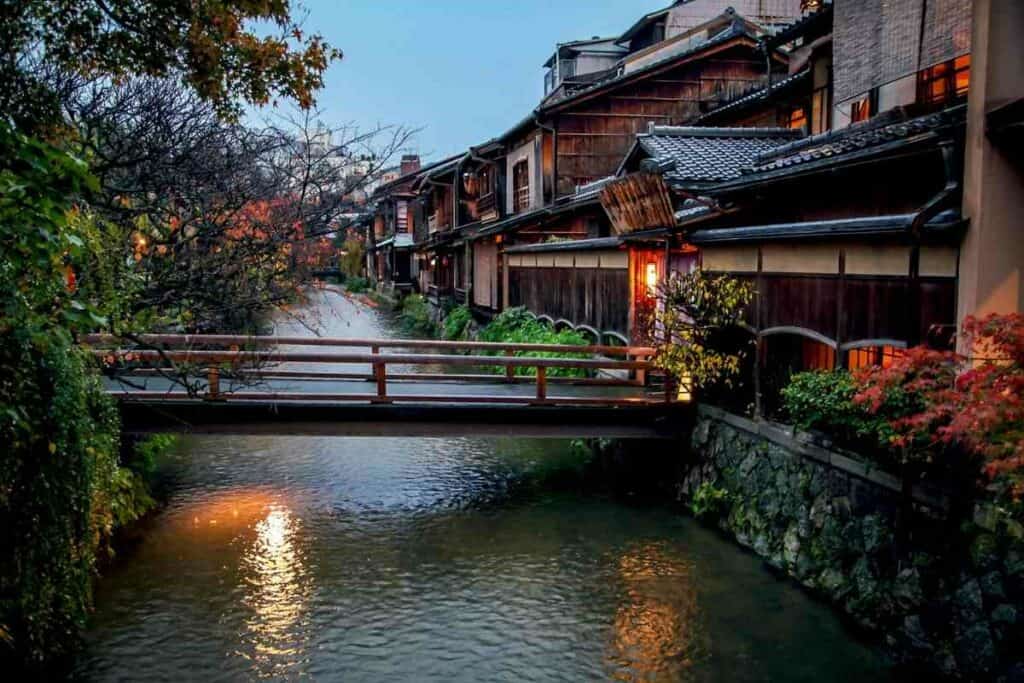
- Spend a day with the Kyoto’s Women’s Association where you’ll practice traditional origami and don a kimono during a tea ceremony.
- Nishiki Market is a narrow street with over 100 shops and food stalls.
- See entire floors decorated in gold leaf at the Kinkakuji Golden Pavilion zen temple.
- Take a tour to see a Geisha performance.
- Visit Nara to see the most historically significant Tōdai-Ji Temple.
- Of the several thousands of Shinto shrines, Fushimi Inari Shrine is the most significant, and one that is worth visiting.
- Will You See Geisha Girls on the Streets of Japan?
Day 11 : Tokyo
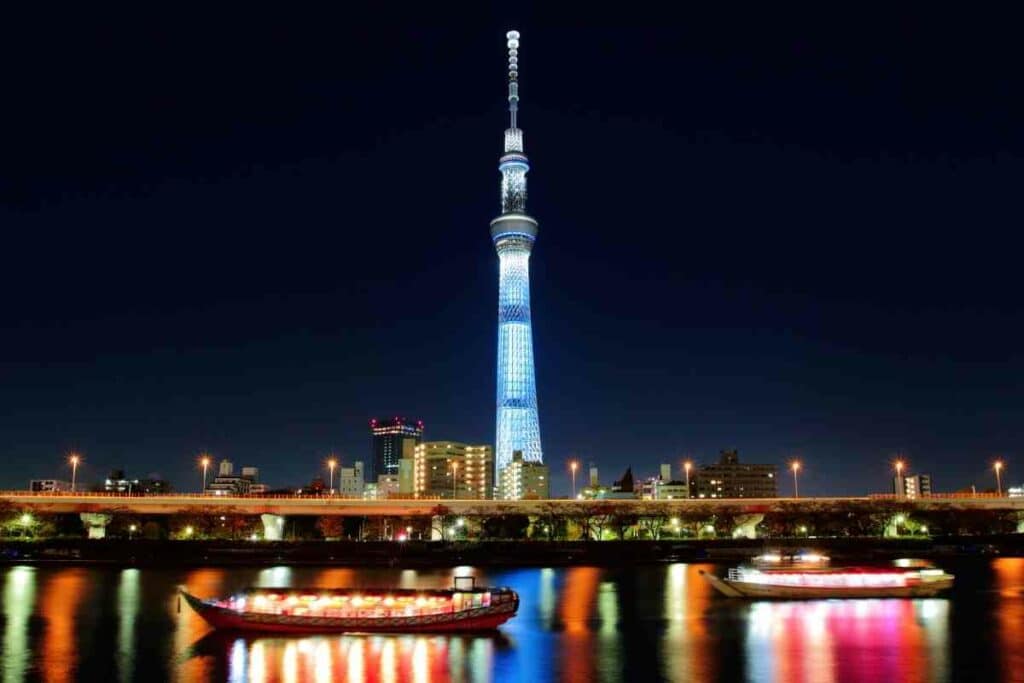
- Take a trip to the man-made island of Odaiba where you can visit a science museum, spend the day shopping, and take in the sights of Mount Fuji from the Ferris wheel.
- Not much of the castle built in 1888 remains beside ruins, but the garden is still tended to, making the Imperial Palace Gardens a peaceful spot in the heart of the city.
- Tokyo Sky Tree is a broadcasting tower where visitors can climb up to the observation deck for panoramic views of Tokyo.
18-Day Itinerary
Day 1-3 : Tokyo
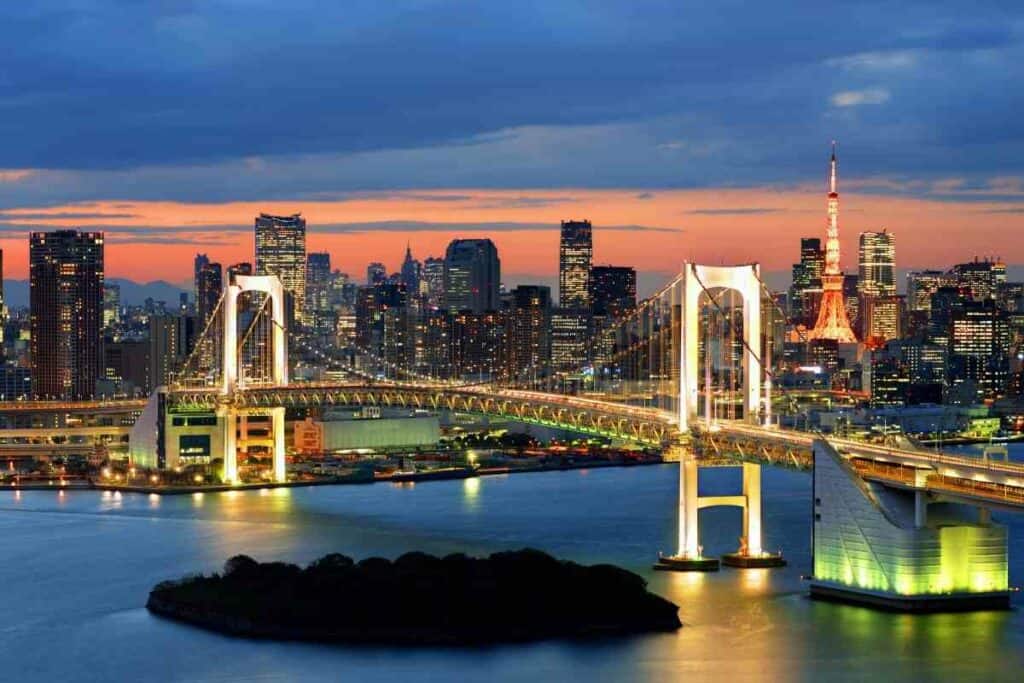
- Harajuku is the center for all things kawaii with shops featuring anime and manga, cosplay stores, and character cafes.
- Visit one of the most popular shrines in Tokyo; Meiji Jingû.
- Takeshita-Dori Street is the busiest street in Harajuku and features shops selling clothes, accessories, and crepes.
- Appreciate the architecture of Tokyo Central Station.
- Head to Ginza for some high-end shopping.
- When you’re hungry, stop by Tsukiji, the outdoor food market.
- Hamarikyu is a garden located between Japanese buildings.
- Visit the oldest temple in Tokyo, Sensô-Ji.
Day 4 : Kawaguchiko
- Visit the iconic Chureito pagoda that sits on a hilltop facing Mount Fuji.
- Kachi Kachi Ropeway, also called the Mount Fuji Panoramic Ropeway, is a much faster and exciting way of getting to a viewpoint than hiking.
- Fuji-Q Highland Theme Park is an amusement park that opened in 1968 at the base of Mount Fuji that currently has 6 roller coasters.
Looking for a Hotel? 📖
- 5 Best Hotels with a View of Mount Fuji
- 5 Best Hotels for Fuji-Q Highland
Day 5-6 : Matsumoto
- Matsumoto castle is one of the most popular castles in Japan and should always be a stop you make in Matsumoto.
- Take a look at the Ukiyo-e wooden block art museum.
- Ever wondered where wasabi comes from? Check out a local wasabi farm in Matsumoto.
Day 7 : Nagano
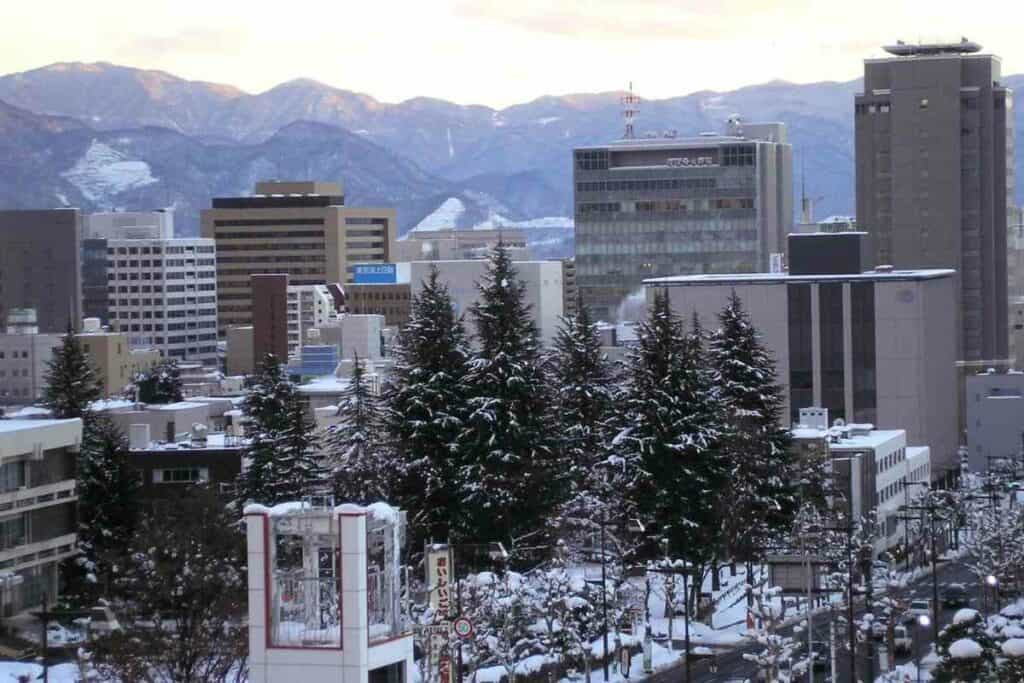
- Explore where the 1988 Winter Olympics were held.
- Zenko-Ji temple is a Buddhist temple built back in the 7th century and is still standing and visited today.
- Visit the Jigokudani Yaen Koen Park where you’ll see the snow monkeys bathing in hot springs.
Day 8-9 : Tsumago
- Narai village is an old town where travelers and merchants would stop to rest. It was in an extremely convenient location, which brought in a lot of travelers, and brought in enough money to make it one of the wealthiest post towns in Japan.
- Hike along part of the Nakasendo that runs beside a river. Whether you choose to hike on the road, or rough it a little more and hike along the river, you’ll have amazing views as you walk.
- 5 Most Beautiful Villages In Japan
Day 10 : Takayama
- Visit the traditional kusakabe and yoshijima houses and experience a glimpse of the way life used to be in the Edo Period.
- Yatai Kaikan is a hall that is used to store and display the hand-carved floats used in local festivals called matsuri.
- Visit the Shôwa-Kan Museum to see what life was like during and after WWII in Japan.
- Take an exploration break and visit the Sannomachi shopping district.
Day 11-12 : Kanazawa
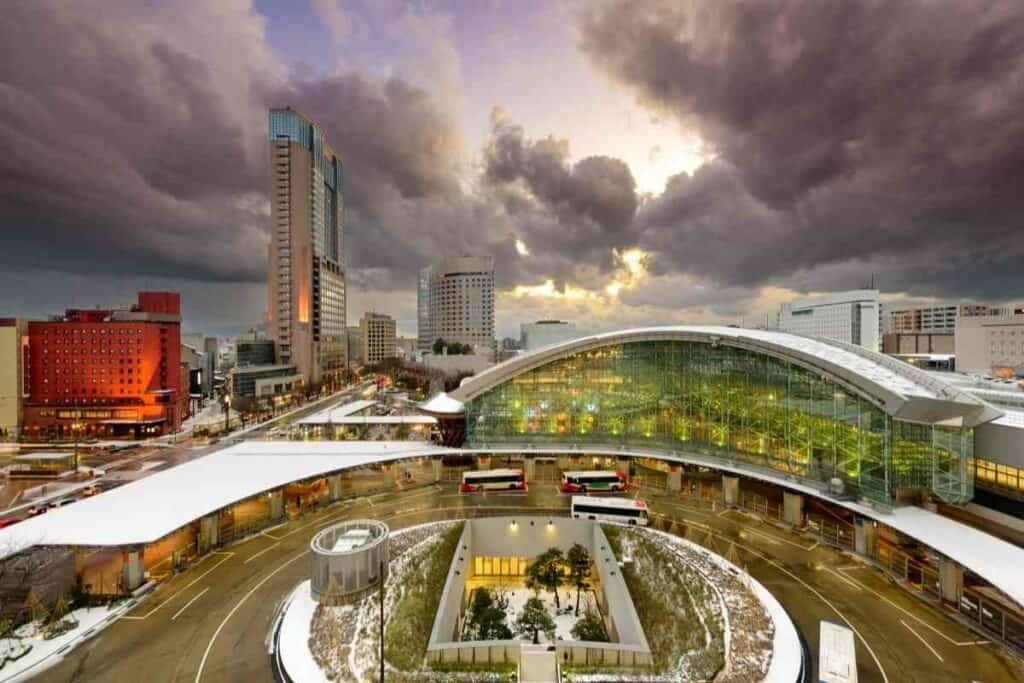
- Explore Kenroku-en, a beautiful Japanese Garden in Kanazawa.
- Visit The Museum of Contemporary Art and make sure to see the outdoor gallery.
- Omicho is the largest outdoor fresh food market. They have a wide variety of foods, but this market specializes in seafood and fish.
- If you want to see how samurai used to live, check out one of their residences by visiting Nomura house.
Day 13 : Shirakawago
- View the way traditional Japanese houses used to be built and check out the minka (houses) in the village.
Day 14 : Ishikawa
- Take a break from exploring, shopping, and picture taking and spend the day relaxing at Kaga Onsen, a hot spring and spa.
Day 15-17 : Kyoto
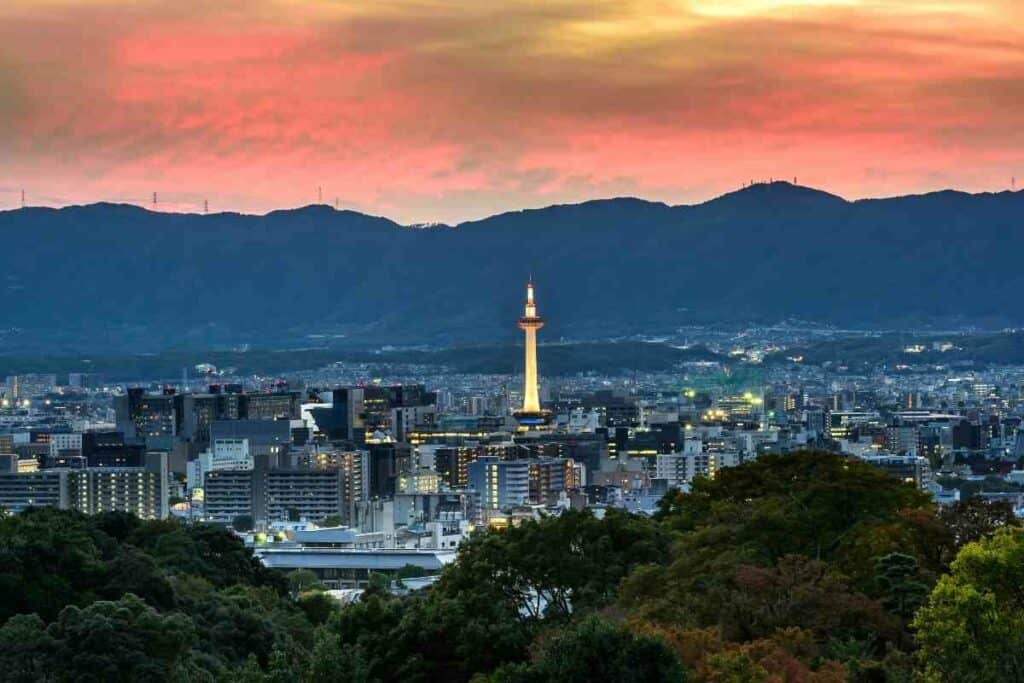
- Visit Kiyomizu-Dera, translating to Pure Water Temple, it was built in 760 on the site of a waterfall.
- Explore the historical stone-paved streets of Ninnen-Zaka and Sannen-Zaka.
- The Kinkaku-Ji, sometimes called the Golden Pavillion, is the most famous building in Kyoto and attracts tourists from all over. It’s for good reason too, the top two floors are completely decorated in gold leaf.
- Ginkaku-Ji, or Silver Pavilion, this temple was modeled after the Golden Pavillion. This temple isn’t decorated in silver as the name might suggest.
- Take a two-wheel cruise along the Kamogawa River. This is a great spot to spend a few hours in the afternoon, which makes it a lovely spot to have a picnic.
- Spend a few hours hiking along the Takao Gorge. Within an hour and a half of leaving Kyoto, you can find Kiyotaki village along the Gorge.
- End your trip with a traditional Tea ceremony where you’ll experience the principles of tea ceremonies: harmony, purity, respect, and silence.
Day 18 : Osaka
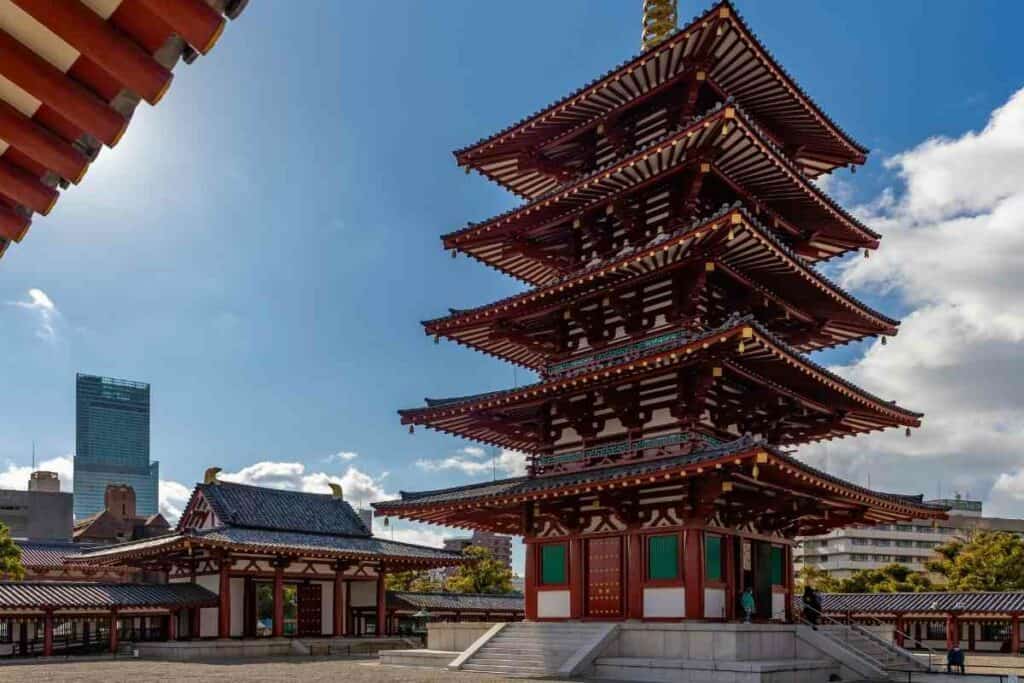
- On your last day, fly out of Kansai International Airport to return home.
Final Thoughts
No matter what time of year you visit, there is something for everyone in the Japanese Alps.
With so many cities and towns to choose from, it’s easy to find an area that matches your interests and offers everything you’re looking for on your vacation.
From outdoor activities and beautiful landscapes to cultural experiences and nightlife, these mountains have something for everyone.
Also Helpful
- How Many Days to Spend In Kyoto?
- 13 Things You Need to Know Before Visiting Tokyo Dome
- Is Kanazawa Worth Visiting?
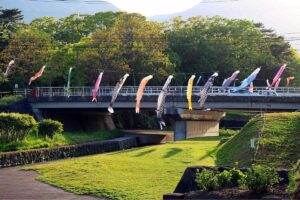
About the author
Latest posts

Japanese Wedding Traditions (Venue, Dress & Food)
This post will discuss wedding customs you can expect to find in a traditional Japanese wedding today. These include the traditional Japanese wedding dress code, venue, gift, and food.

Bubble Tea vs Boba Compared: What’s the Difference?
Bubble Tea and Boba are two extremely refreshing drinks with the added satisfaction of jelly balls to add a whole new sensation to the drink.

Rinko Kikuchi Net Worth:Sci-fi blockbuster Japanese Star
Acclaimed actress Rinko Kikuchi and her impressive net worth. From her breakthrough role in ‘Babel’ to starring in blockbuster hits, learn about the financial success that accompanies her illustrious career.

- Things to Do
10 Best Places to Visit in the Japanese Alps
Enjoy Nature in Japan, from Shirakawago to Kamikochi, Nakasendo, Kanazawa and more!
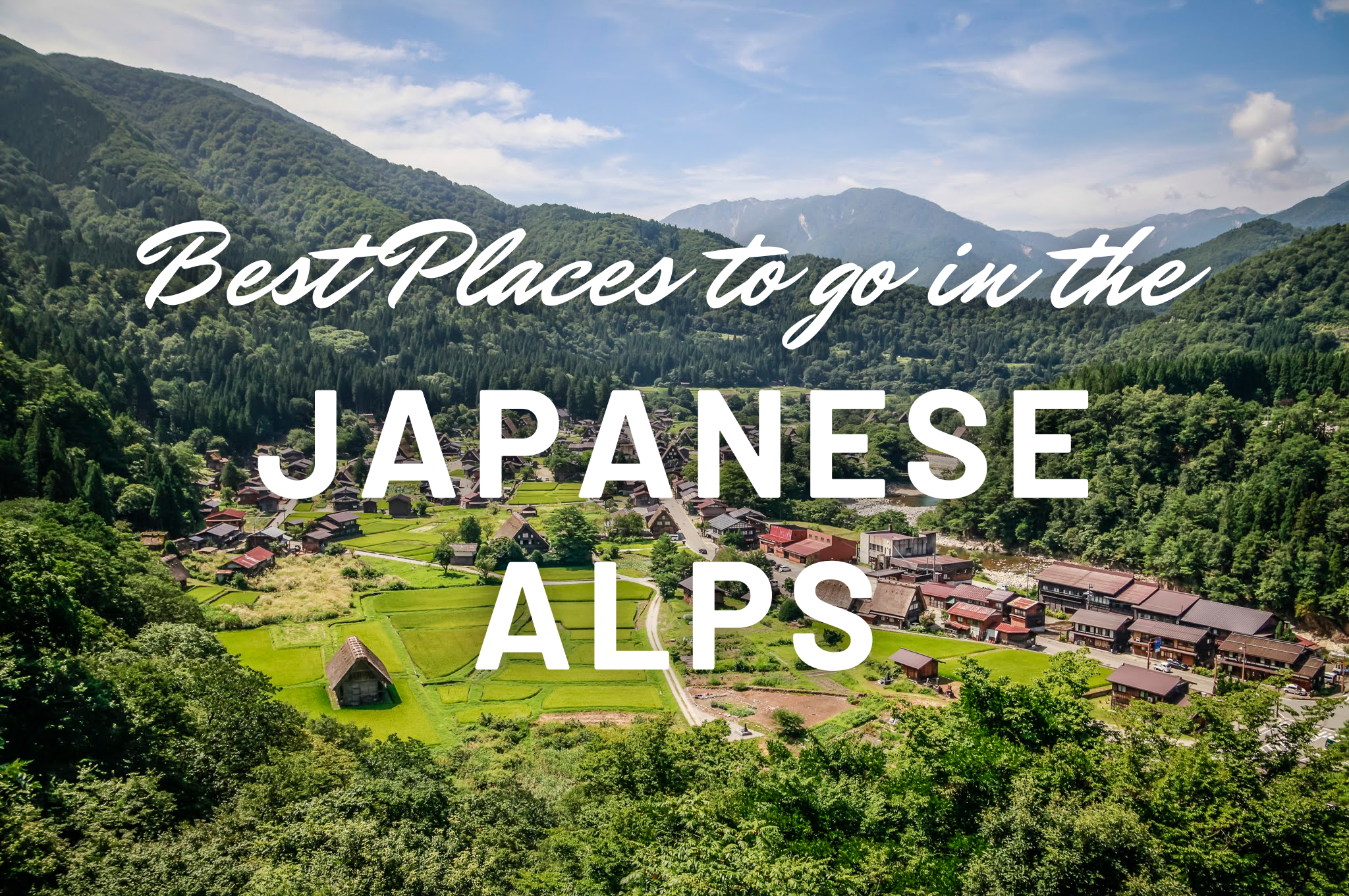
When one thinks of Japan, two images quickly come to mind: the huge skyscrapers and endless entertainment of Tokyo, and the traditional streets of Kyoto with geisha, maiko, temples and shrines. Also, of course, sushi, ramen and other delicious foods.
Although these places are undoubtedly amazing, they tend to be overcrowded with tourists, especially in high season. In this article I would like to introduce you to one of my favorite parts of Japan: the Japanese Alps. In the Japanese Alps you can find nature, clean and pure air, beautiful landscapes and views and a different part of traditional Japan, more rural and mountain.
Here you have my list of the top 10 places to visit in Japanese Alps, including the World Heritage Site Shirakawago, the best hiking route Kamikochi or Nakasendo, Hakuba for snow activities, the traditional Kanazawa and more!
*Please note that this article contains affiliate links.
1. Shirakawago
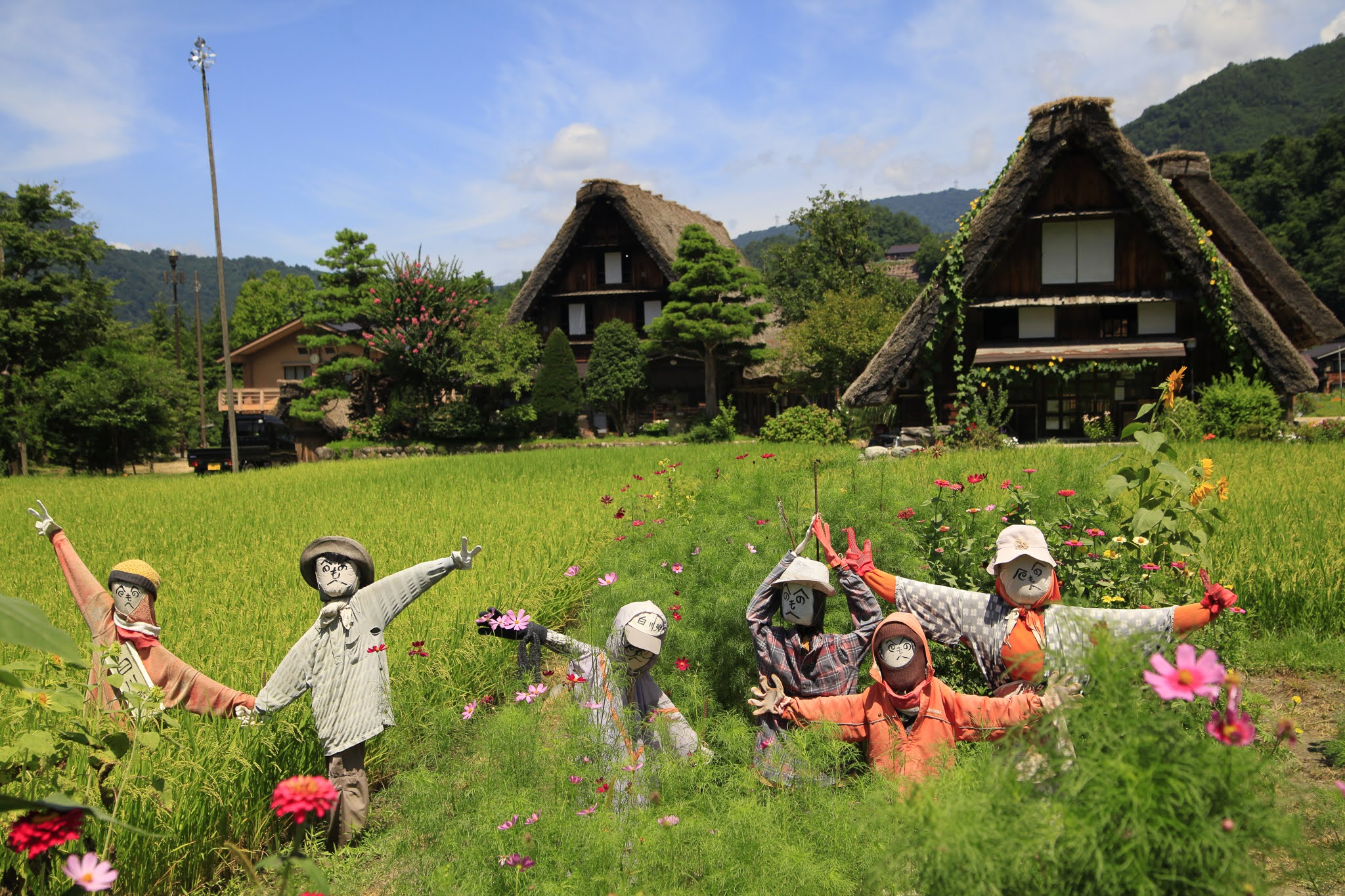
Shirakawago is no doubt one of my favorite places in Japan. This picturesque village in the middle of the mountains is famous for its typical Gassho-Zukuri houses, which have steeply pitched thatched roofs for the harsh winter snowfall.
Considered a World Heritage Site, it’s also on the list of many travel agencies and there are usually quite a lot of tourists, but not as many as in Kyoto or Tokyo. Depending on the time of the year in fact, you can visit it without overcrowding. I recommend taking the first bus in the morning and arrive early to enjoy the place with more tranquility (it tends to get crowded later).
▶︎▶︎ Book HERE a Shirakawa-go Half-Day Food Tour
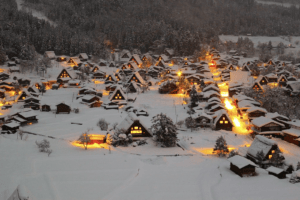
2. Gokayama

If you want a quieter and less touristy place, Gokayama is about 10 km from Shirakawago and is just as beautiful but less known, which means less people. Gokayama means five valleys in Japanese, as the village is surrounded by mountains.
Besides enjoying the views and visiting some of the houses, you can also enter some of the houses that offer souvenirs, food or tea. The specialty of the area is soba noodles and tofu!
▶︎▶︎ Click HERE the Book the Art Tour in Gokayama Now!!
3. Takayama
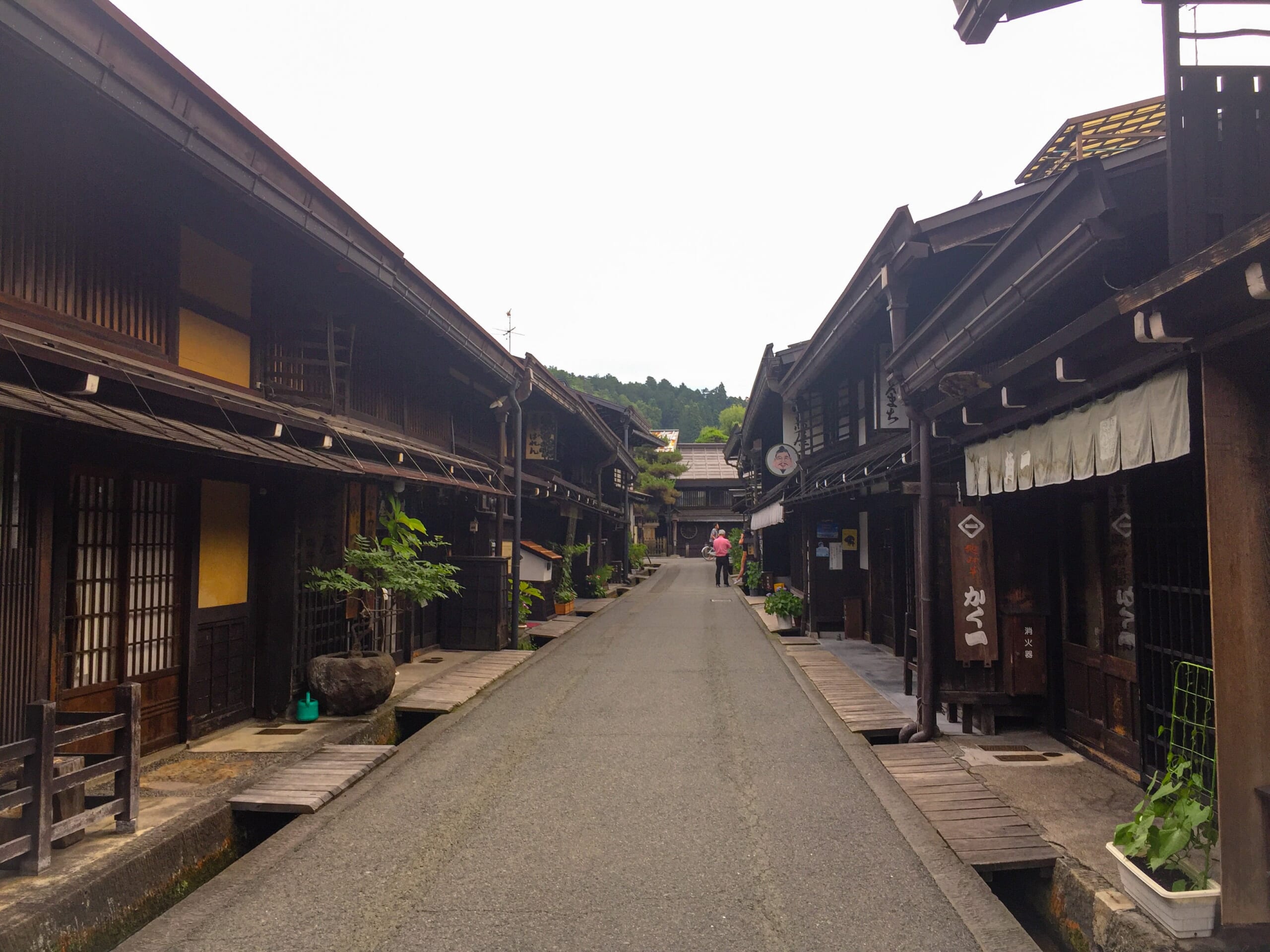
Takayama is a small town in the mountains in the Hida region. It’s popular as a stopover area on the way to Shirakawa-go. In Shirakawa-go you cannot stay overnight, so many people travel to Takayama, visit the town and the next day take a bus to Shirakawa-go and return to Takayama.
But even if it is taken as a place of passage, Takayama is also beautiful and has activities to offer! The old town is one of my favorite places, and also to be able to taste excellent hida beef meat, famous in Japan, at good value for money. At night, when everything else is closed, I recommend going to an onsen in the area.
▶︎▶︎ Book HERE the Sake brewery tour in Takayama!
▶︎▶︎ Click HERE the Book the Takayama local guide walking tour Now!!
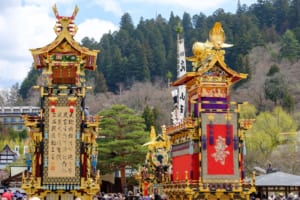
4. Tateyama Kurobe Alpine Route
The most popular mountain sightseeing route of 37km through the Japanese Northern Alps, Tateyama Kurobe Alpen Route, connecting Tateyama at Toyama prefecture to Omachi at Nagano prefecture.
Visitors can enjoy different amazing view points as the great snow wall ”Yuki-no-otani”, or Murodo, a Volcanic plateau with a pond. In addition, the route also includes 7 different transports as the Tateyama Ropeway or a funicular.
▶︎▶︎ Book HERE the Alpine route from Tokyo
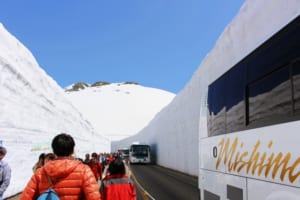
5. Matsumoto
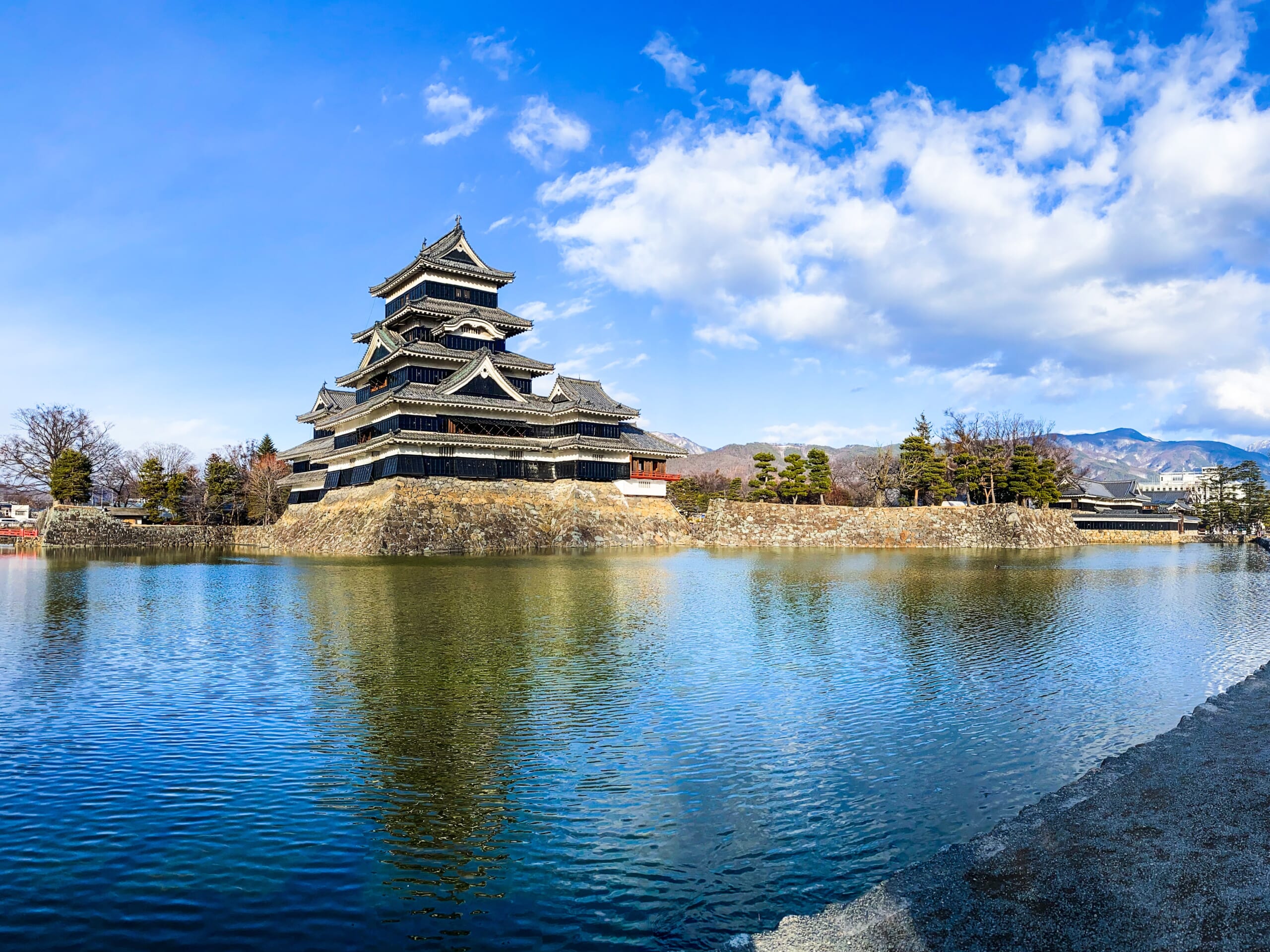
Matsumoto is a small and charming town surrounded by mountains famous for its castle, Matsumoto Castle, declared a National Treasure of Japan as one of only four original castles remaining in Japan.
You may have heard of Himeji Castle , the beautiful white castle also nicknamed “The White Egret”. Matsumoto Castle on the other hand is completely black, so it’s nicknamed “The Raven” in contrast. Considered one of the three most beautiful castles in Japan along with Himeji and Kumamoto, Matsumoto Castle is much less crowded than Himeji and is easily accessible from Tokyo (about two to three hours by fast train).
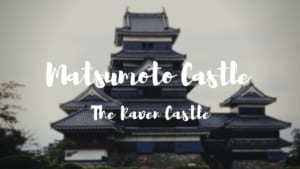
6. Kamikochi
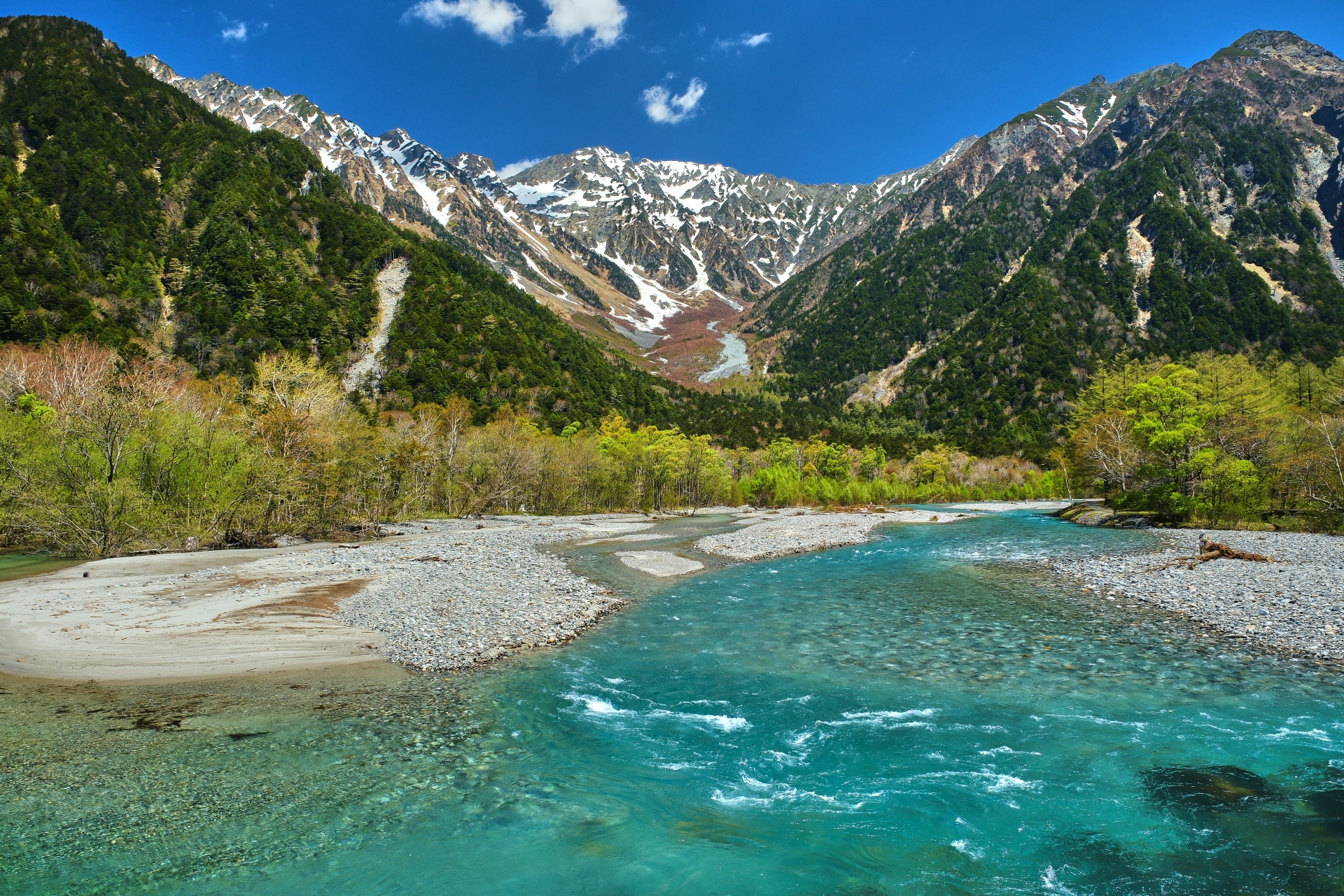
Considered one of the best places in Japan for hiking, Kamikochi offers one of the most beautiful views of the Japanese Alps. Kamikochi has different routes available, depending on level and strength, making it suitable for both beginners and experts. Due to the high temperatures and cold in winter, the routes are only open from mid-April to November.
It can be reached directly from Tokyo by bus, and is a perfect getaway to enjoy fresh air, get some exercise and marvel at the spectacular mountain scenery.
▶︎▶︎ Click HERE the Book Kamikochi Day Tour from Nagoya Now!!
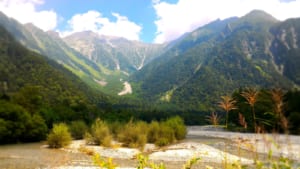
7. Nakasendo
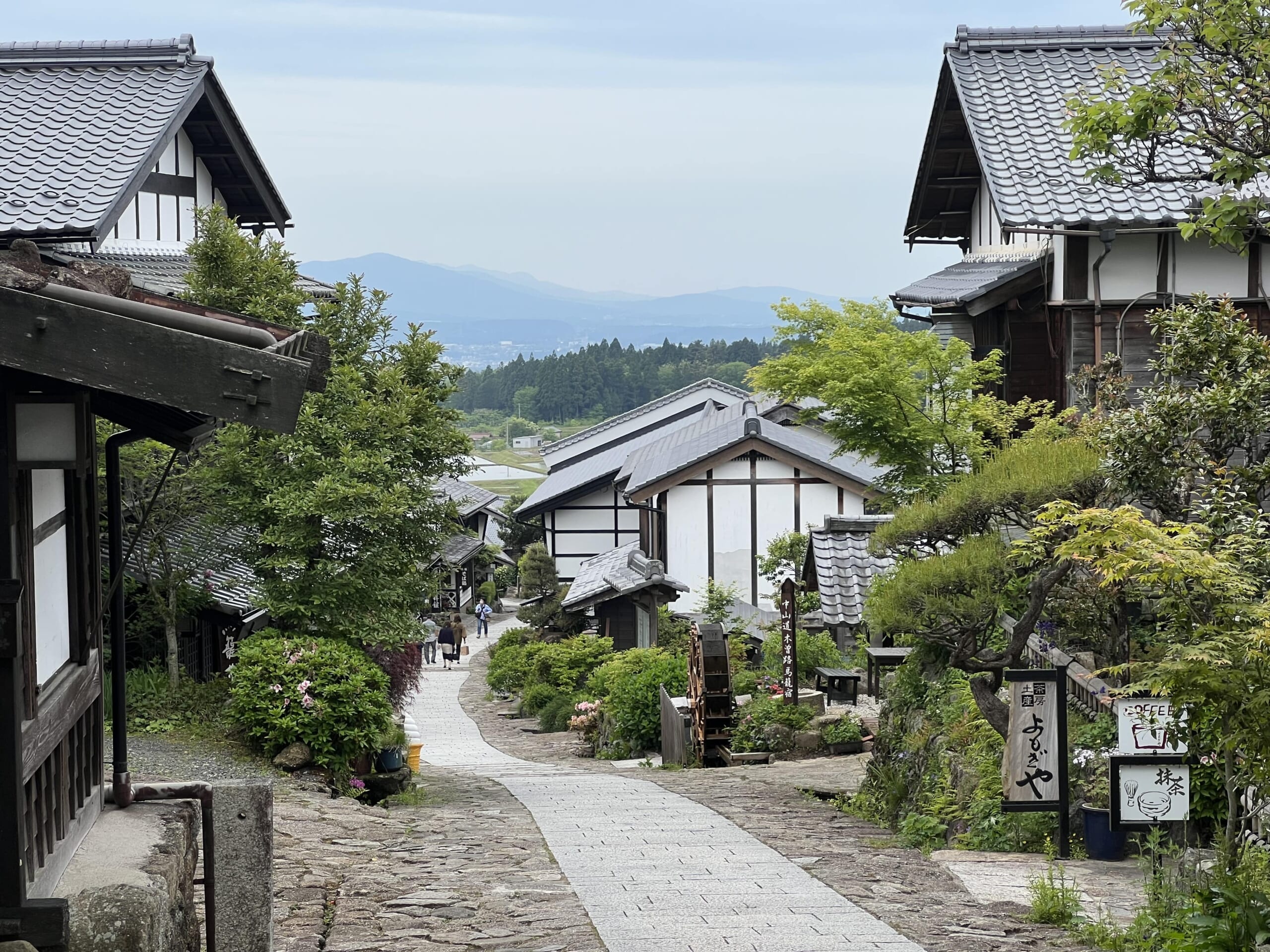
Another of my favorite and top recommended places in Japan! The Nakasendo route in the Kiso Valley. During the Tokugawa period the feudal lords, or daimyo in Japanese, were obliged to live 6 months in the capital and 6 months in their fiefs. Therefore, different roads were created to connect these fiefs with Edo (Tokyo). The Nakasendo route connected Kyoto with Tokyo. It is a road of 500 kilometers with more than 60 small rest villages.
One of the most famous parts of the Nakasendo route, in the Kiso Valley, is the one that links the villages of Magome and Tsumago. If you want to see one of these villages, but can’t or don’t want to hike through the mountains, another beautiful and easily accessible option from Matsumoto is Narai-juku.
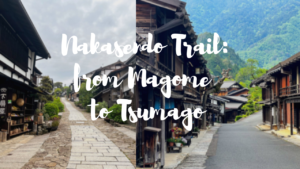
Hakuba is a very popular destination in winter for snow sports enthusiasts, as it has some of the best ski resorts in the area. But it’s also a good destination for those who like mountain hiking and hot springs! For example the beautiful Hakuba Happo-one pond or Hakuba Yari Onsen in Mount Hakuba Yari.
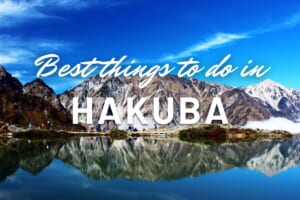
9. Jigokudani – Snow Monkey Park
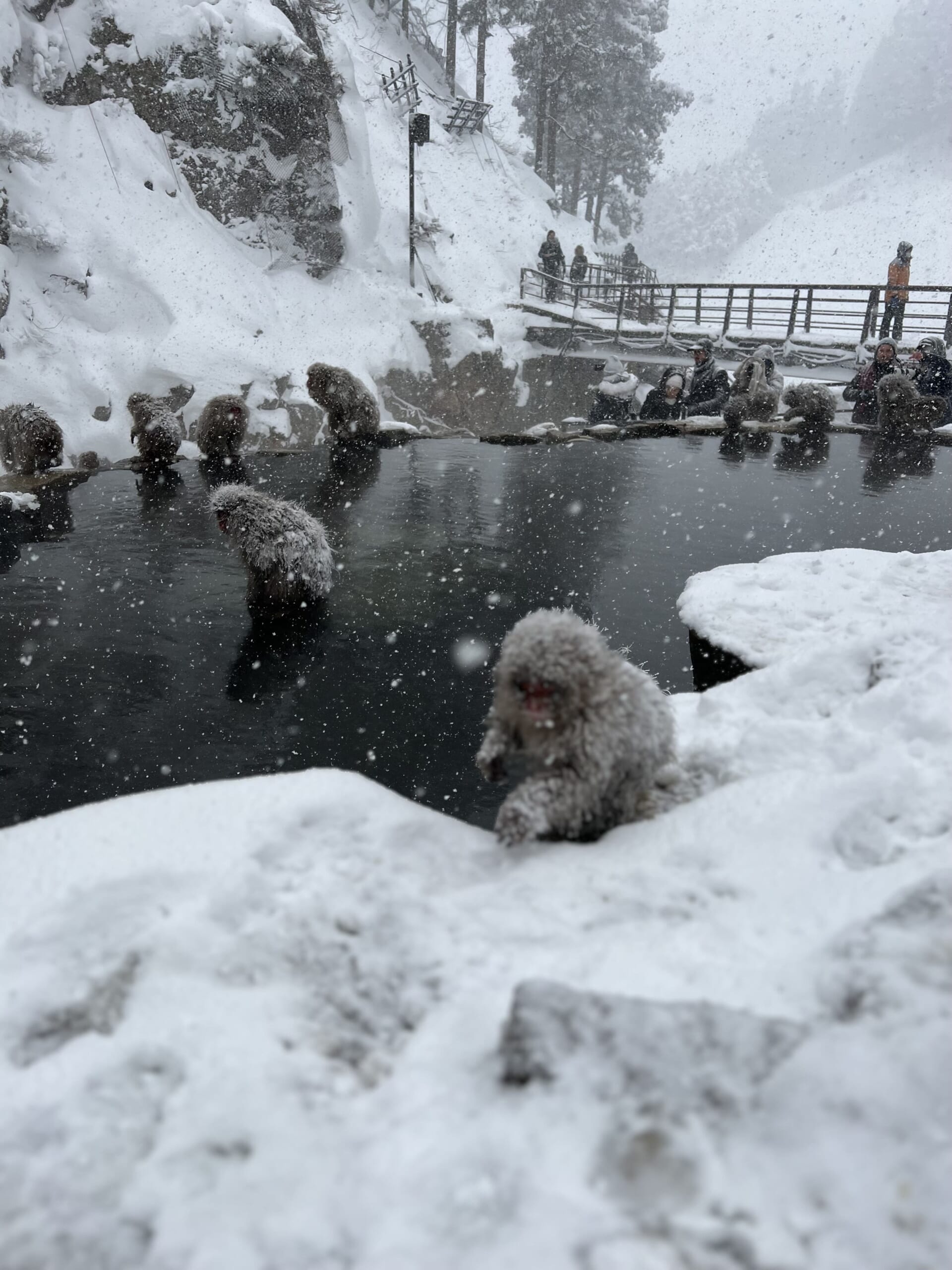
The snow monkey park in Nagano is one of the most popular destinations, especially in winter! Located just over an hour’s bus ride from Nagano Central Station, the park is an open space where Japanese Macaquess roam free. In the middle of the forest there is a natural open-air hot spring, and when it’s cold the monkeys relax by bathing like humans.
▶︎▶︎ Book HERE a Snow Monkey Park and Zenko-ji Temple Tour with Sake Tasting

10. Kanazawa
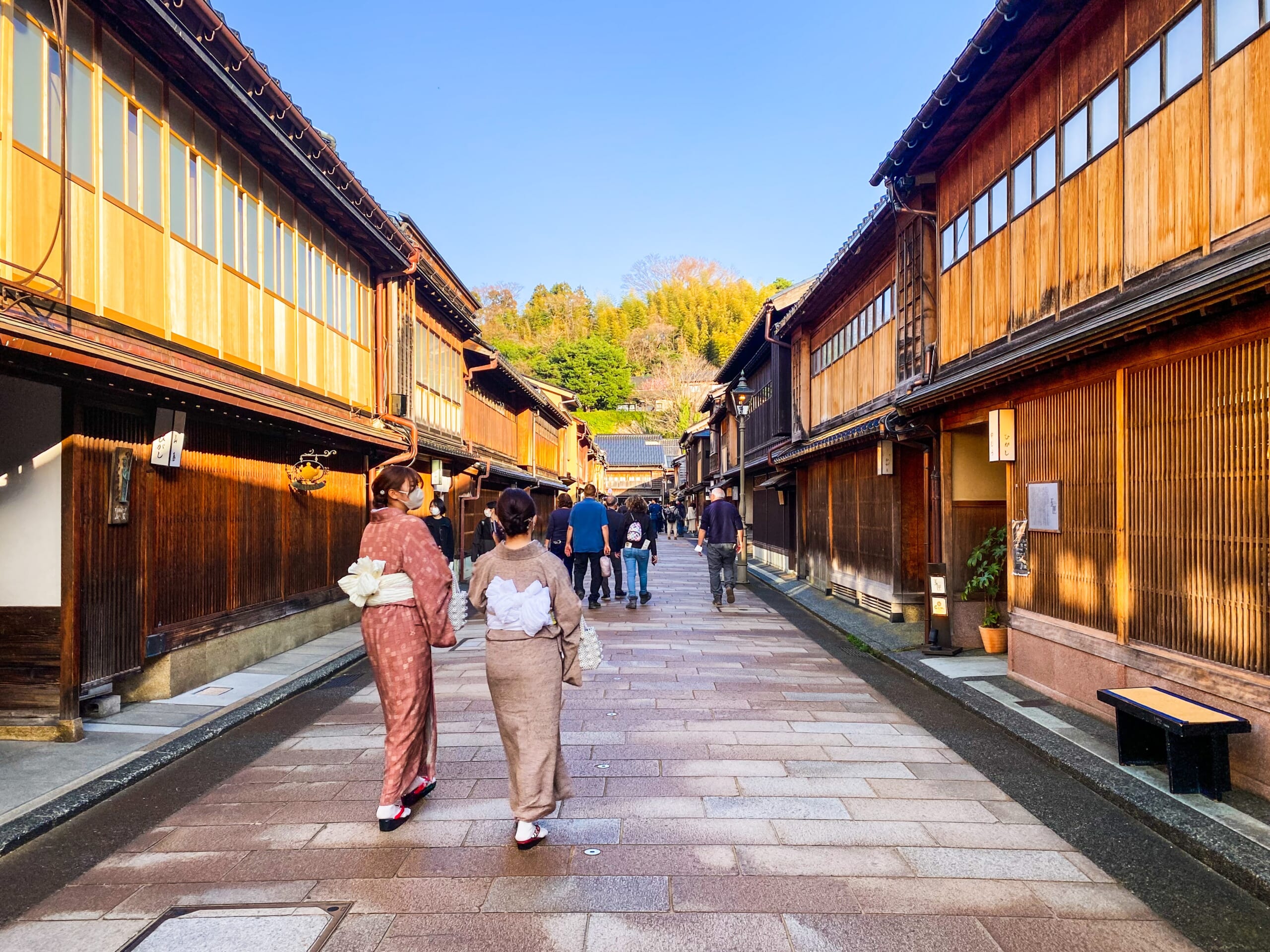
If you want to visit Kyoto but you don’t have time, or you don’t like crowds of tourists, Kanazawa is a very good alternative! Besides Kenrokuen Garden, the most beautiful Japanese garden in Japan, Kanazawa also has old samurai houses and a geisha and maiko area, Higashi Chaya District similar to Gion in Kyoto.
Since a new Shinkansen route was opened a few years ago, connecting Tokyo to Kanazawa in less than 2 hours, it has become an increasingly popular destination. It can be visited in a day, quietly walking or renting a bike!
▶︎▶︎ Click HERE the Kanazawa 1–Day Highlight Private Walking Tour Now!!
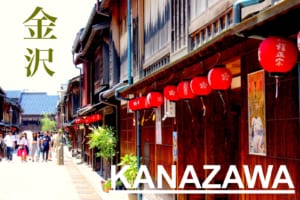
If you are planning a trip on the Japanese Alps, with the 5 Day JR Alpine-Takayama-Matsumoto Area Pass you have unlimited travel for 5 consecutive days in the area!! The pass includes JR trains between Nagoya and Toyama and transportation along the Tateyama Kurobe Alpine Route.
▶︎▶︎ Purchase NOW the 5 Day JR Alpine Area Pass
▽Check this perfect itinerary in the Japanese Alps▽
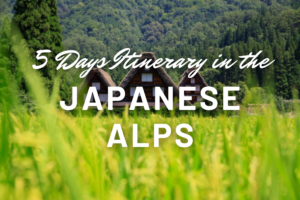
Beautiful, isn’t it!?? For more amazing and less know places to visit in Japan, and best ways to go, you can check these articles too!! Discover a different side of Japan besides Tokyo or Kyoto!
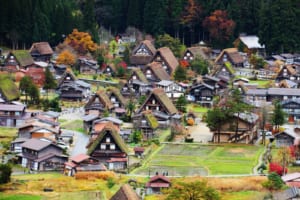
▽Related Articles▽
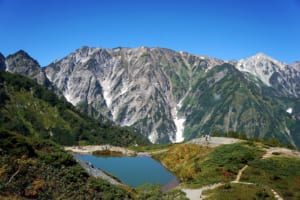
▼Editor’s Picks▼
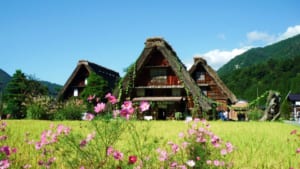
From Barcelona to Tokyo. Coffee & Adventure lover 🌏☕️
I started to like Japan because of the anime, music and doramas, but after my first trip to the country I found what I love the most: traveling around, the culture and history. I have travelled a lot in Japan, but I still have many places to discover that I want to share with you 🙋🏼♀️ Let’s discover Japan together!
Also, as a foreigner living in Japan for over 6 years I understand what kind of things are difficult when you move here and I want to help other people in the same situation that I have in the past.
- Central Japan
- Shirakawago
We earn a commission for products purchased through some links in this article.
5 amazing holidays to Japan for an unforgettable adventure
Considering a once-in-a-lifetime Japan holiday? Look no further with these magnificent options
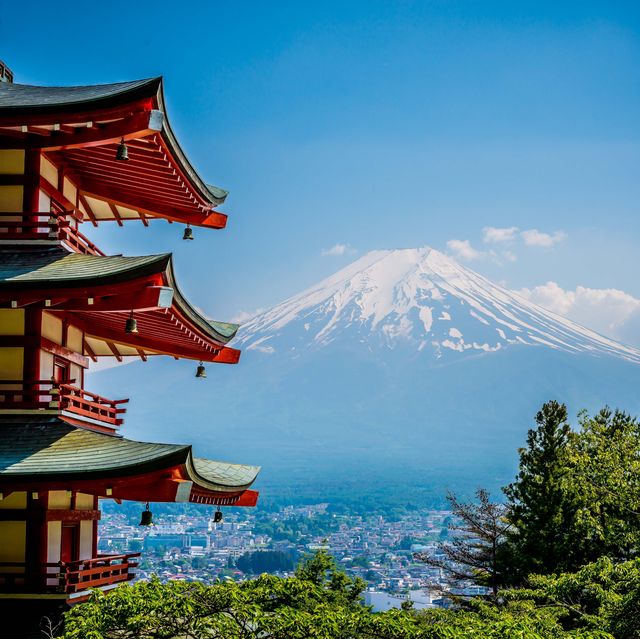
While the country's big-hitting cities such as spiritual Kyoto, cosmopolitan Osaka and vibrant Tokyo, Japan's capital and a popular springboard for Mount Fuji, are all must-sees, there are the sunny southern islands of Japan to discover too. With breath-taking beaches and a slower pace of life, they're the ideal spot for a more leisurely trip. And then there are the Japanese Alps, vast and verdant, and a hugely popular choice for a Japan skiing holiday.
While you need to consider where you'd like to visit on your epic Japan adventure, there's also the case of how . Flights go direct from London to Tokyo, but when it comes to choosing how to traverse this incredible country there are numerous options – from guided coach tours to luxury cruises.
For a helping hand with where to start, we've rounded up some of our favourite ways to discover Japan, including a group tour across the Japanese Alps , a 17-day cruise during beautiful cherry blossom season, and an indulgent inclusive break in sun-drenched Okinawa.
A tour of Japan's essential highlights
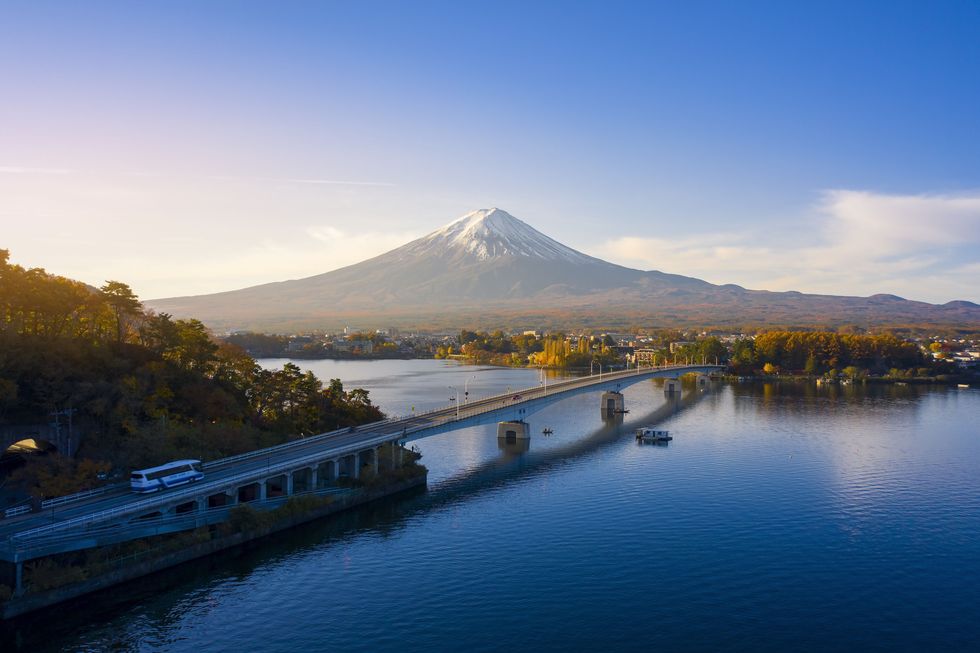
Embark on this thrilling 13-day roundtrip from Tokyo, which showcases the magical, ancient heritage of Japan as well as its futuristic, neon-lit metropolises. This guided tour, which includes coach travel and hotel accommodation, will give you plenty of time to soak up the colour and culture of Japan's capital, which boasts the bustling shopping district of Ginza, vivid Harajuku, iridescent Akihabara electric town, and world-famous Meiji Shrine in Shibuya, the commercial district.
Beyond Tokyo, you'll visit majestic Mount Fiji, Japan's tallest peak; ride the Shinkansen, the high-speed bullet train; see the resident deer in the city of Nara; spend the day in Hiroshima, which has been rebuilt into an attractive, modern city; and have the chance to stay in a ryokan , a typical Japanese inn, in Kyoto. This accessible and fully-organised tour covers all the essentials and more.
Join us on the Good Housekeeping 13-day Japan tour in August 2024.
A cruise in beautiful cherry blossom season
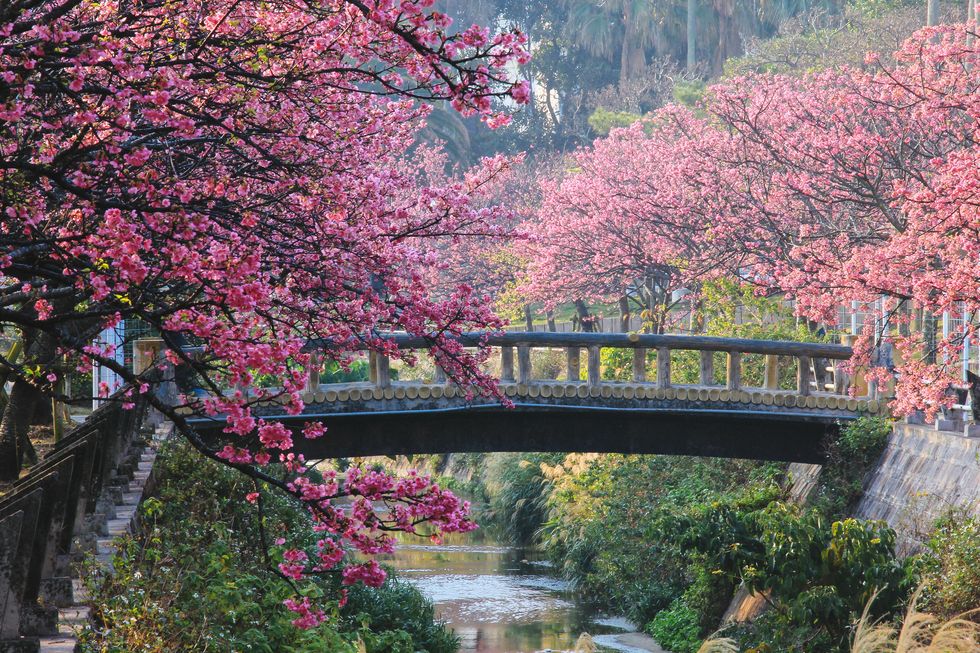
One of the biggest draws to Japan is undeniably its picturesque cherry blossom season and the custom of hanami , admiring the beauty of it. Every spring, millions of locals and visitors alike patiently wait for the first sakura (the Japanese term for cherry blossom) buds to bloom, showing off their delicate, baby pink-hued petals. The abundance of blossom flowering is celebrated with festivals, picnics and the eating of seasonal, sakura-themed delicacies.
If experiencing this springtime phenomenon is on your bucket list, then this 17-day cruise in Japan is for you. While giving you the opportunity to catch the cherry blossom in cities like Tokyo and Osaka, the leisurely sailing with Holland America enables you to see plenty more of Japan, too. Other port stops include Kagoshima, Nagasaki, Aomori and the lively, karaoke-loving city of Busan in South Korea. And all of this is without mentioning the incredible entertainment, food and bars onboard your ship, of course.
Embark on a 17-day cherry blossom cruise around Japan with Good Housekeeping in 2025.
FIND OUT MORE
A jaunt through the Japanese Alps with plenty of tradition
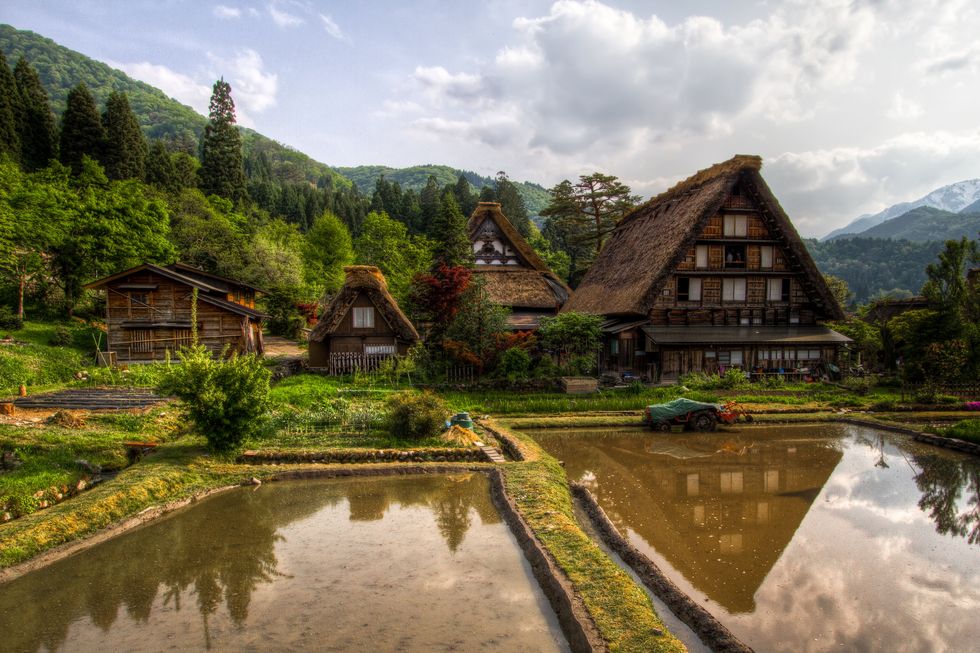
While this group tour ticks off the unmissable cities of Tokyo, Osaka, Kyoto and Nara, it takes its guests on a journey through the beautiful Japanese Alps, a series of mountain ranges on the island of Honshu. This mountainous region is home to an abundance of picturesque cities and towns, all offering a glimpse into Japan's rural life. On this 13-day tour you'll visit the pretty city of Takayama, which brims with Edo Period houses, food and craft markets and traditional restaurants.
You'll also get the chance to wander the village of Shirakawago, a UNESCO World Heritage site known for its thatched roof farmhouses that are said to resemble the praying hands of Buddhist monks. Along with admiring gorgeous scenery, you'll have the chance to get on hands-on with activities such as miso-making, washi paper-making, gold leaf crafting and origami. If you're craving a taste of traditional Japan, you'll find bags of it on this brilliantly-curated trip.
Explore the Japanese Alps with Good Housekeeping in 2024 or 2025.
A city break in Tokyo, Japan's energetic capital
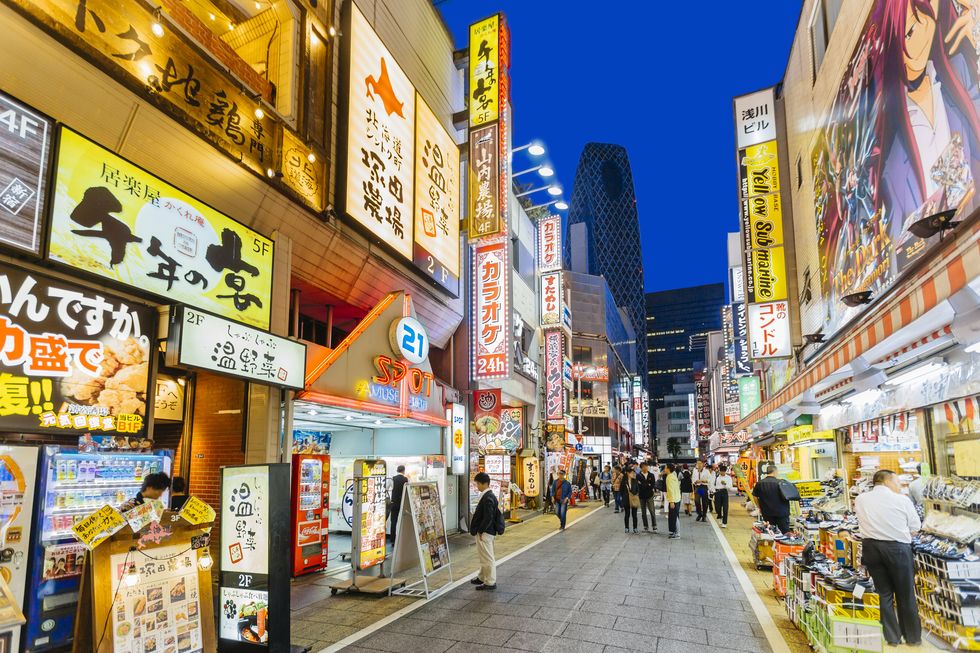
If you've got limited time or would prefer to dedicate your trip to just one destination in Japan, then Tokyo is the answer. Known as Edo until 1868, the Japanese capital is the world's most populous city and thus it's a melting pot of activity, culture and cuisines. As city breaks go, you'll be spoilt for choice here: see the Imperial Palace and many landscaped gardens (we like Koishikawa Korakuen and Hama Rikyu) in central Tokyo, the museums and towering Skytree viewing platform for city-wide views in northern Tokyo, and the busy shopping and entertainment districts of Shibuya, Shinjuku and Harajuku in the west.
For easy access to all of this (and so much more) it's best to base yourself centrally, and a hotel would give you the benefit of a helpful concierge to offer recommendations, book transfers and advise on transport throughout your trip. In a city with so much to offer, a bit of local knowledge goes a long way.
Plan a Tokyo city break British Airways, where you can book flights and hotels as a package.
A relaxing all-inclusive holiday in Okinawa
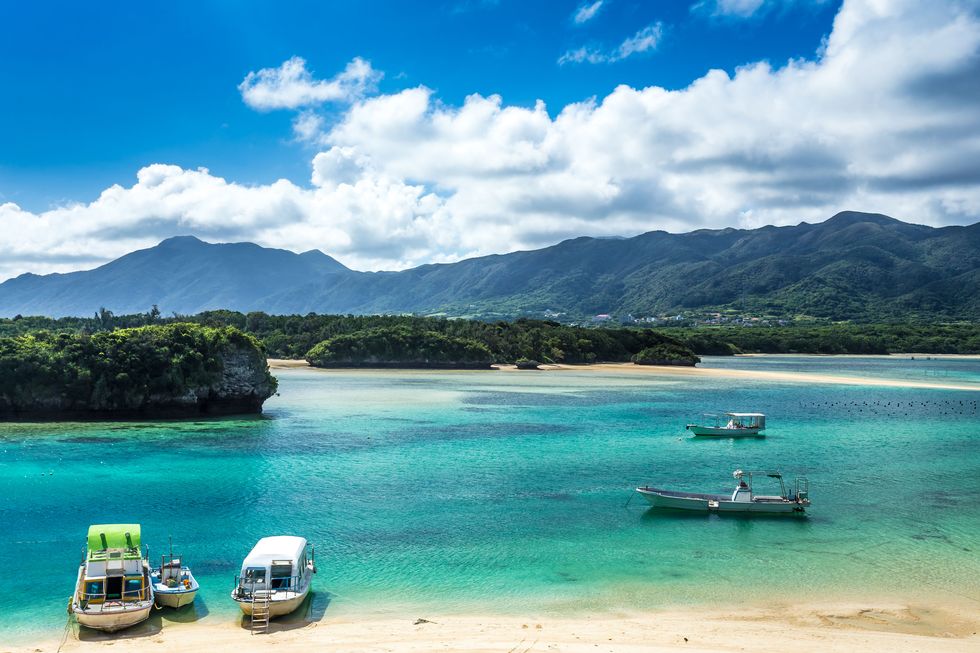
The idyllic island of Ishigaki is part of the Okinawa Prefecture in southern Japan, where the climate is tropical and the weather is warm and humid all year round. It's here that you'll find Club Med's Kabira Ishigaki resort , perched on the edge of the Kabira peninsula with endless views of the turquoise ocean ahead. A family-friendly resort, Kabira Ishigaki is the ideal way to see Japan with a hearty side of rest and relaxation. You can lounge around the freshwater pool and unwind with a treatment in the spa, or, on days where you can muster the energy, try your hand at windsurfing or kayaking in the crystal-clear sea.
The ocean is sacred here, as it's home to manta rays and other marine life, and guests wanting to learn more about life under the water's surface can book eco-friendly snorkelling tours or day trips to nearby islands. There's the chance to experience local culture on dry land too, as guests can take part in sanshin lessons (an Okinawan musical instrument that's similar to a banjo) and sample Okinawan flavours with a selection of traditional dishes, all served in a restaurant that offers 180-degree sea views. Sounds like paradise to us...
Soak up the sun, sand and sea of southern Japan at Club Med's Kabira Ishigaki resort.

@media(max-width: 64rem){.css-o9j0dn:before{margin-bottom:0.5rem;margin-right:0.625rem;color:#ffffff;width:1.25rem;bottom:-0.2rem;height:1.25rem;content:'_';display:inline-block;position:relative;line-height:1;background-repeat:no-repeat;}.loaded .css-o9j0dn:before{background-image:url(/_assets/design-tokens/goodhousekeeping/static/images/Clover.5c7a1a0.svg);}}@media(min-width: 48rem){.loaded .css-o9j0dn:before{background-image:url(/_assets/design-tokens/goodhousekeeping/static/images/Clover.5c7a1a0.svg);}} Travel
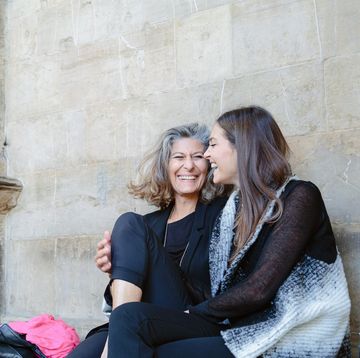
12 amazing ways to experience Italy
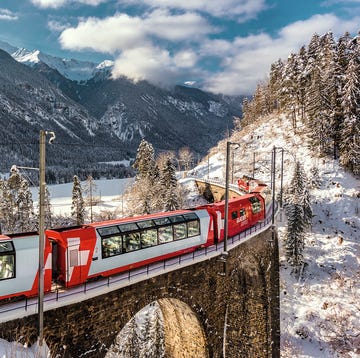
Glacier Express: Everything you need to know

Cruise to Japan's cherry blossom displays with GH

Everything you need to know about Japan in spring
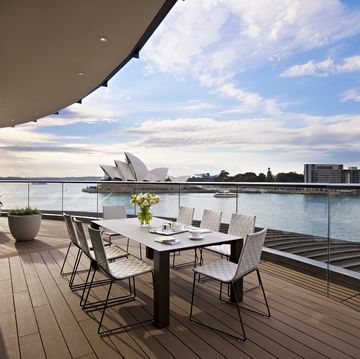
The best hotels in Sydney
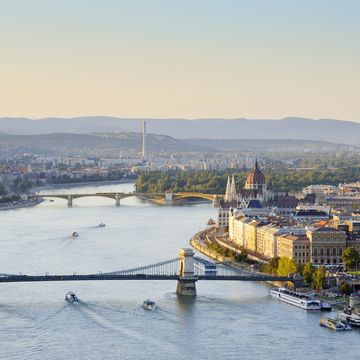
Our guide to Danube river cruises

The best river cruises

The best cruises for 2024

The best spring holidays for 2024
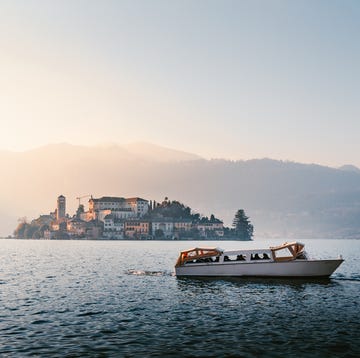
Lake Orta is the hidden gem of the Italian Lakes

Best time to visit Japan: Here's when to go

Japanese Alps Tour - Epic Volcanoes & Ancient Roads

Difficulty Level 5 out of 5
Max Distance: 160km Max Elevation: 3200m
See FAQ for Route Levels
Explore Bike Options Bring Your Own Bike

Accommodations Premium Ryokan Hotels + Futon Japanese Beds + Public Hot-Spring Onsen Bath
Learn more about the ryokan experience

Regions Matsumoto City North Alps Kita-Kanto Rindo's Norikura-dake (JP's highest road) Ashikaga Two Volcano Summits Below Mt Akagi Mt Haruna
Getting to and From this Tour

Price $5,750 USD
$1,760 USD Single Supplement
$1,000 USD E-Bike Rental
The Tour of the Japanese Alps is our most challenging and ambitious cycling adventure: a week-long odyssey across the spectacular mountains of central Japan. These roads will push you to your limits and take you to the most breathtaking views that this country can offer.
Take on grueling climbs, including Japan’s highest paved road. Then, relax and delve into its ancient traditions. Along our journey, find serenity and peace in authentic ryokans, all equipped with beautiful hot-spring baths. Be prepared to work hard and spend long days in the saddle, while creating lasting memories with the nature, food, traditions, and people of the Japanese countryside.
Ready for this epic adventure? Please a provide a link to your strava/mapmyride/etc account or describe the most challenging ride you’ve completed in the past 3 months, including distance, elevation gain, and time. We request this information for all of our Level 4-5 tours to confirm that the trip will be a great fit for your current riding ability.
Set up a time to connect with us over the phone or book your spot on tour now!

Let's Connect!
Please submit the below form and then use the call scheduler. Failure to submit a form will result in the call being canceled due to insufficient information.
Please note that routes are subject to adjustments during the tour.
Welcome to Japan! We begin with introductions and a light lunch at a local restaurant. Then, we’ll set off on a shake-out ride through beautiful and flat country roads. Begin to get a feel for the epicenter of Japan’s road cycling scene. Gaze up at the surrounding mountains we will climb in the coming days. After our ride, we will return to our ryokan to feast on a beautiful Japanese meal. Fill up your tank for many more inspiring rides to come.

Kick off our first full day with a bang: by taking on the highest road Japan. We’ll begin riding at sunrise and will climb for 60km (40mi) to the summit of the West Alps! This is the largest climb in the country, so breathe deeply as we take to the skies for unparalleled views and colors. Volcanic rocks, incredible flora, floating clouds–it’s truly an unforgettable canvas. Lunch awaits at the summit with delicious food. Then, we’ll ride 60km of beautiful downhill road, making for one of the most epic descents of all time. Your tired legs will love the beautiful outdoor hot springs and freshly-prepared meal at our ryokan tonight. We recommend a cool-down stroll to the famous Matsumoto Castle after dinner.

Today, we ride south of the Japanese Alps to the Kirigamine (tr: Misty Highlands) on tranquil roads along the central mountains of Matsumoto. An initial climb takes us high up through thickets of bamboo forests, which eventually become the high grasslands of the Kirigamine. Then, we head down to the famous ski town and mountaintop lake of Tateshina. Finally, we will descend into the Saku valley before climbing the east side of the Utsukushigahara (tr: Beautiful Highlands). You will find that each corner of this wild and secluded road offers a new incredible view of Mt Norikura and the Matsumoto Valley, where we are staying for the night. To cap off the day, an onsen and a beautiful meal await atop the Utsukushigahara.

We will set off on an epic journey across Japan today! Starting from the Utsukushigahara, wave goodbye to the western mountains, and head east towards the Saku valley. A long ride through rural Japan takes us to our second climb of the day: the hidden gem of Taguchi Pass. A long steady climb at around 3-5% grades, this pass meanders through the best of Japan’s countryside. The road will take us through a tunnel before bringing us to our home for the evening in the city of Takasaki. A night out is in order after three long days of intense cycling. This is what cycling in the Japanese Alps is all about! Relax, feast, and sleep in, because tomorrow is our recovery day.

Wake up slow–it’s our rest day! Take a morning dip in the hot spring before we head out on an amazing recovery spin to our final home in the North Alps in Ashikaga. Today, we will take the Tone River path, free of cars and full of views of the North Alps ahead. Relax your legs, stop for photos, and enjoy the tailwinds that the Tone Valley creates as we head to a fantastic local sushi lunch on the river. After lunch, we will head to our short climb up Mt Kanayama (80m gain). Explore ancient ruins and take in fantastic views of Japan’s North Alps. Just 10km separate us from our hotel, hot-spring bath, and delicious dinner. Rest up and get ready for the final three days!

Begin the day with six moderate mountain passes - this delightful loop weaves through our favorite selection of Rindo Forest Roads in Gunma and Tochigi. Save some energy for our final ascent to over 1,200m above sea as we climb out of the forests up to the Mae-Nikko Highlands for a panoramic view of the endless valleys of the surrounding mountains.
Once at the summit, enjoy a well-deserved descent to the Watarase River valley where a ripping final 50km awaits! Soak in the healing hot spring waters and enjoy a big meal before a good night’s sleep before our final full day of riding tomorrow.

Today, we’ll ride up two most prominent volcanoes in the Tone Valley: Mt Akagi (tr: The Red Fortress) and Mt Haruna (tr: Harvest Mountain). These are unforgettable climbs on Gunma’s finest roads, both crowned with beautiful caldera lakes.
Akagi and Haruna are famous training grounds within the Japanese cycling community, and riders from all over the country come to experience these storied volcano climbs. Enjoy a beautiful descent into Ikaho Onsen Town for a celebratory evening at the ryokan.

Our last day starts off with a number of simple pleasures. Take your time enjoying a pre-breakfast soak in the hot springs and a visit to the temple at the top of the hill.
After breakfast, we will begin our final ride into Takasaki Station with two options: an all flat/downhill 32km flying down the base of the volcano, or one last ascent up Mt Haruna to the caldera lake within and a nearly 1,000m descent into the local city of Takasaki. Say sayonara to the Japanese Alps and to your cycling compatriots over a final meal together.
Our team will help you arrange tickets to Tokyo on the Shinkansen Bullet Train (1h to Tokyo Station). Til next time! Mata Ne~

Stay up to speed on new trips, tour announcements, and tips for cycling in Japan. Join our mailing list today!

T. Koegel 🇺🇸
Bike Tour Japan was OUTSTANDING. The riding was incredible with beautiful Fall colors, quiet back roads and challenging climbs. The countryside is gorgeous and Rob knows how to end every day at the perfect ryokan with onsen baths and delicious food! Can’t wait to do another tour in 2018!
Tour of the North Alps 2017
Our group of 4 enjoyed an incredible 3 days of self guided cycling in Japan in October. The information provided by BTJ before and during our trip was top class - very clear and professional. The selection of routes provided by BTJ was excellent and varied. Beautiful and quiet but challenging country roads. Excellent accommodation and the onsen was special! Michelle was extremely knowledgable, helpful and friendly. I would definitely recommend BTJ if you're thinking of cycling in Japan. Bespoke Tour 2019
The biking-ryokan-onsen combination is fantastic, loved it! Both you guys were great company, and we enjoyed the cultural exchange dinner conversations. Learnt a lot more about Japan in this short trip than from other Japanese holidays. The planning and organisation were professional, your eloquence with the language was impressive, and our bikes were a joy to ride. Hope to come again on another ride with BTJ in future! Bespoke Tour 2018
A. Hipsley 🇦🇺
Bespoke Tour 2020
J. Porter 🇺🇸
BikeTourJapan brought my dream vacation into reality. Amazing rides matched with unforgettable scenery, endless photo opportunities. I got to experience beautiful countryside, amazing hot spring towns, friendly folks, great food, all one could ask for, and to be on a bike, the icing on the cake…..cant wait for my next trip, on a bike…..in Japan, thanks Robert!!!
Japanese Alps Tour 2016 & Bespoke Tour 2018
A. Morgan 🇬🇧
After watching one of the ride vlogs on YouTube, I decided to drive up from Tokyo with some friends for a day trip. It certainly did not disappoint!
The location meant that we were quickly out of the down, able to ride along a beautiful river and then straight into the mountain roads. There were long stretches which we had to ourselves. And the beautiful thing about Japan is that the road surfaces are all immaculately well maintained, even for those roads that barely see any road traffic. So for those who enjoy zipping downhill at high speed (like me), it was really a treat.
Robert (our guide and company co-founder) knows the area very well. He was able to choose a route that matched our fitness levels and dynamically adjust it when we came across some random roadworks. Highly recommended.
Bespoke Tour 2019
A. Fossett 🇺🇸
I'm not a cyclist, but I've been living in Japan for a few years and love any opportunity to explore the countryside and spend time away from the cities. I joined a day tour with some friends, and I'm glad I did.
Firstly, everything was taken care of - the team clearly knows everything that goes into well-planned outing, and every detail, from the equipment to communication and even meals was thoughtfully planned and managed. Secondly, our route took us along some beautiful scenes with lots of fresh air along well-maintained roads. Even with pretty good Japanese, there's no way I could have planned as smooth and enjoyable an itinerary, let alone managed the logistics outfitting our group with reliable gear. Thanks to Bike Tours Japan for an experience to remember - I'll be recommending them to friends who visit Japan in the future.
E. Rivers 🇺🇸
Bike Tour Japan organized a Self-Guided adventure for me over 5 days and 4 nights. Toyokan was an great ryokan in Ashikaga. The route planning and self-titled, "Eugene's Adventure Map," was amazing! I felt completely secure cycling along with Bike Tour Japan one message away on What's App. They turned my first time in Japan to an unforgettable experience of a lifetime. From the food, riding, and support, Bike Tour Japan is a great company to assist with your cycling needs while in Japan. I vow to return for one of the scheduled Tours!
J. Campbell 🇺🇸
S. gribble 🇺🇸.
Ashikaga Training Camp: Tokyo Escape 2019
R. Dutton 🇺🇸
My husband and I have just returned from a most wonderful bike trip with Bike Tour Japan guides, Rob, Michelle and Michael. We were fortunate to be there when the maples and their red, golds and oranges were on fire with color. Just beautiful!! We visited hidden magical shrines tucked away in the forest. After interesting and sometimes challenging rides we soaked in fabulous hot spring-fed baths and tucked ourselves into cozy futon beds on tatami mats in the lovely ryokans. Meals were a real adventure too as we sampled every imaginable and artistically displayed culinary delight the Japanese are famous for. We just so appreciate how professional and fun our guides were. We had a blast, lots of laughs and great camaraderie. We highly recommend this trip Valleys & Volcanoes Tour 2018
K. Shumaker 🇺🇸
The tour and a vacation of a lifetime. Robert and company were the perfect hosts and organizers taking us to places and situations in the Japanese culture we would never been able to access ourselves. Riding the Japanese Alps at peak fall colors dazzled my retinas and burned into my brain an experience I will never forget. Nikko North Alps Tour 2017
P. Burgess 🇦🇺
A group of us road the northern Japanese alps with Rob in September. Rob was a great host, rode with our fastest and slowest riders, provided food and drink and navigation. Rob is a great guy who loves riding and hosting tours in Japan. He is flexible with his planning and accommodates all types of riders. He also selects some amazing Ryokan and Onsen locations. I would recommend his tours to anyone looking to ride Japan Japanese Alps Tour 2019
Weather On Tour
Please Note: This tour covers elevations from near sea level to over 2,700m. This is a mountainous tour so it is best to bring layers each day. While valley temperatures can easily hit over 25°C (77°F) it can be near freezing at the top of summits over 2,000m above sea on this trip.
The data here for Matsumoto City (700m above sea) is where we are based in the first half of this tour and is indicative of the averages we can expect when not at high elevation on this tour.
For the second half we will be staying closer to 100m above sea level where temperatures tend to be a little warmer.
Getting To and From this Tour
Please click here to see trains and transit information for this tour.
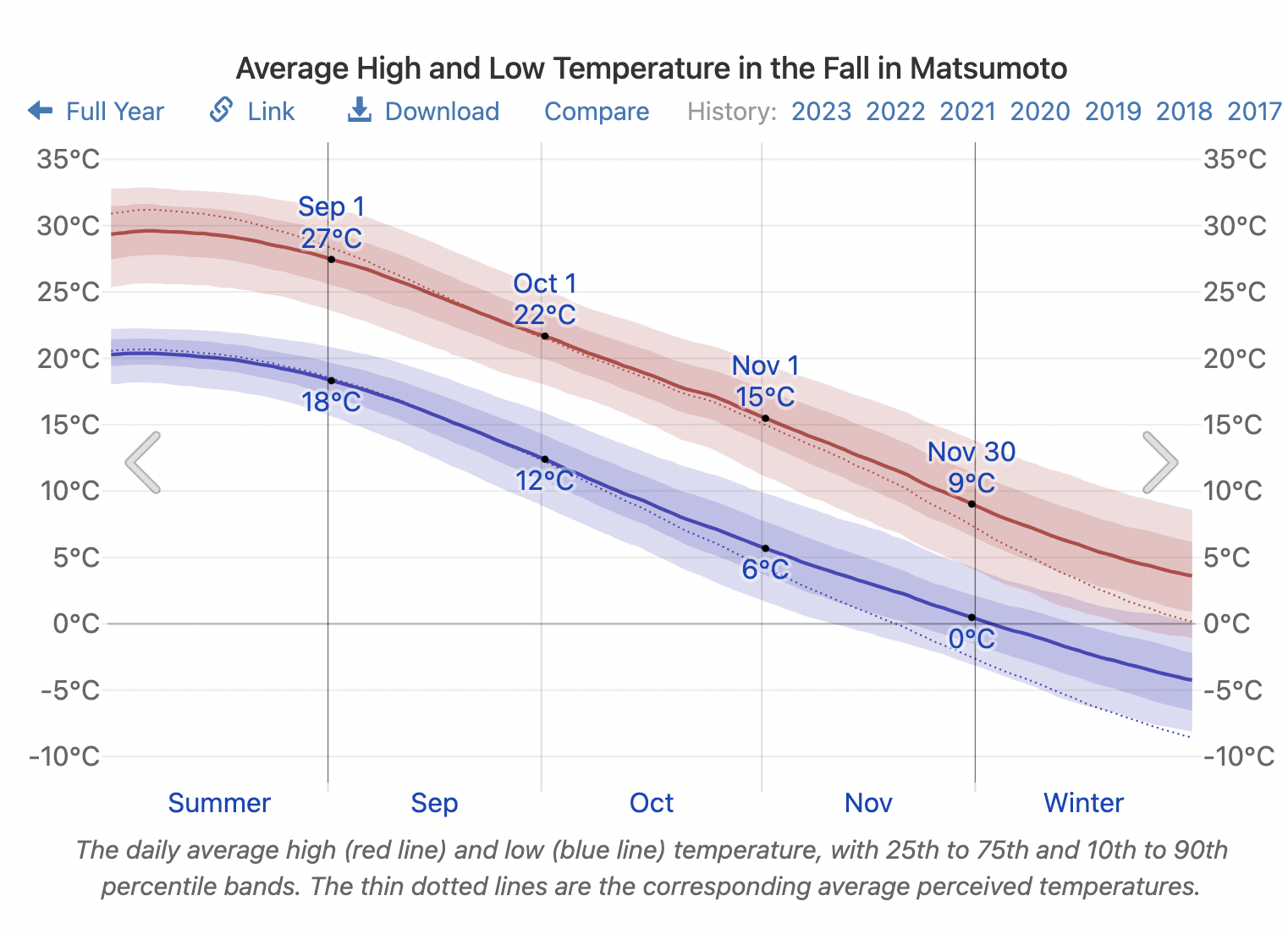
Japanese Alps Map
- Fully-serviced road bike or hybrid bike, with helmet and accessories. Please note there is an additional fee for an e-bike; please inquire in advance to reserve
- All accommodations and meals during your tour
- Snack and hydration stops on each day's ride
- Luggage delivery
- Support and gear vehicle
- Expert guides to show you the amazing experiences in the Japanese countryside
- Transportation to and from the tour
- Alcoholic beverages

© 2024 Rindo Bike Tour Japan. All Rights Reserved.

IMAGES
VIDEO
COMMENTS
On the Best of Japan Alps tour you will experience soaring mountain peaks, open-air hot springs, lush forests, quaint mountain villages and a slow pace that makes this central alpine area a great escape. Hidden away in its rural and remote valleys are many of Japan's best-preserved post towns, farm hamlets, hot springs and traces of the old urban culture. Combined with its beautiful natural ...
2 My Favorite Things to Do in the Japanese Alps. 2.1 Hike on any day of the year. 2.2 Discover heritage cities and towns. 2.3 The journey—and the destination. 2.4 Enjoy the snow (on or off skis) 2.5 Focus on all four seasons. 3 Best Time to Visit the Japanese Alps. 4 Other Mountains in Japan.
The Japan Alps. Duration : 18 days. Locations : Tokyo, Kawaguchiko, Matsumoto,Tsumago,Takayama, Shirakawago, Kanazawa, Kaga Onsen, Kyoto. Add to favorites. This Japan tour takes you to the heart of the Japanese mountains. A tour in the Japanese Alps means discovering a less touristy, more unspoilt and traditional Japan.
The Tateyama Kurobe Alpine Route (立山黒部アルペンルート, Tateyama Kurobe Alpen Route) is a unique and spectacular route through the Northern Japan Alps which is traversed by various means of transportation including cablecars, electric buses and a ropeway. Completed in 1971, the route connects Toyama City in Toyama Prefecture with ...
More than 70% of Japan's landmass is mountainous and covered by forests, pushing much of the 127 million strong population to the well-populated coastal areas and creating a central wilderness within the country. The Japan Alps cover a large area of central chubu, from Nagano in the north, to Shizuoka in the south.
4. Complete your booking and enjoy your trip. Create your tailor-made itinerary. The price of this service starts at EUR 50,- and is fully reimbursable if you book your tour with us. Admire the exquisite beauty of the Japanese Alps on this scenic 16-day tour. Wander the samurai towns of the Kiso Valley and enjoy phenomenal mountain views.
Japan's Nikko North Alps. Ashikaga. Mount Akagi. Mount Haruna. Getting to and from this Tour. Price. $4,950 USD. $1,920 USD Single Supplement. $1,000 USD E-Bike Rental.
The Japan Alps is an incredible assortment of mountains that provide for winter activities as well as beautiful nature scenery for hikes and photographers to enjoy. The Japan Alps is easily one of Japan's largest and most stunning nature destinations for visitors to explore. ... Japan Deluxe Tours, Inc. 1820 W. Carson St. Suite 224 Torrance ...
A Singularly Scenic Expedition Across the Japan Alps Massive snow walls, stunning autumn colors: The Tateyama Alpine Route is an ecotourist's dream Spanning more than 30 kilometers with an elevation change of 2,000 meters, the Tateyama Alpine Route through Chuūbu-Sangaku National Park astounds nature lovers with some of Japan's most ...
Kamikochi Official SiteChubu Sangaku National Park in Nagano, Japan. We help people connect with nature and create lasting memories in the Northern Japan Alps. The park is open to visitors until November 15. Learn More. Japan is full of beautiful contrast and lives in tension with itself.
The Japanese Alps itinerary summary. Day 1 Kanazawa: visit the Kenruko-en Garden and explore old samurai neighborhoods. Day 2 Shirakawa-go: check out the historic gassho-zukuri farmhouses and admire the view from the Shirakawago viewpoint. Day 3 Takayama: explore the Sanmachi Suji historic district and visit the Hida folk village. Day 4-5 Kamikochi: go hiking and camping in Kamikochi, one of ...
Peak wilderness delights in Japan's Alps—for climbers, skiers, hikers and nature fans Nagano's Alps hold everything an outdoor sports enthusiast dreams of. The attractions here include the Kamikochi area with endless trekking possibilities, the Hakuba region and its Olympic-class powder and slopes, and the Senjojiki Cirque, carved by a glacier.
This is probably the most popular hike through the Japan Alps, and one that children and adults can do together. The great appeal of the Nakasendo is its preserved "post towns" which hearken back to the more rustic Edo period. ... All Japan Tours Ltd: 337 N. Vineyard Ave, Suite 215, Ontario, CA 91764, USA Tel: 1-909-988-8885 Email: info ...
Plan Your Visit. Visiting Kamikochi for the first time? We want to help make your journey in the Japan Alps a great memory. Please remember that Kamikochi is in the Chubu Sangaku National Park and is not accessible directly by private cars. There are 3 main ways to access Kamikochi: Public Transportation, Car + Public Transportation, and Bicycle.
Alpine scene at Mount Kisokoma in Japan's Central Alps. Day 1. Overnight in Hakuba. This morning, depart Toyko bound for Hakuba in the Northern Japan Alps. En route, stop in Matsumoto to visit the beautiful Matsumoto Castle also known in Japanese as Karasu-jo ("crow castle") because of its black exterior.
2024 Walking Tour of Nagano & Japan Alps. This walking tour takes you to some of Japan's most pristine and stunning remote landscapes, with the Japanese Alps high above you and at the peak of autumn too. The brilliant autumn colours will take your breath away on a variety of short walks (8-10km) through the national parks and small villages.
Discover the flowering meadows, waterfalls, and majestic peaks of the Northern Japanese Alps in the summertime on a fixed-route one-day bus tour. The route takes you to two of the most popular sightseeing spots in the Northern Alps—Shinhotaka and Kamikochi. Sit back and relax as you comfortably traverse the rugged landscape with a guide on ...
For both people from Japan and overseas who come to visit Japan's mountains, for novice and expert climbers alike, for the safe enjoyment of Japan's mountains and the deepest experiences possible.。 The Japan Alps Mountain Guide Look for The Japan Alps Mountain Guide※ in preparation Let's visit the mountains with a guide! ①Guides are.
The Japanese Alps are a mountain range that runs through the central part of Japan. Lake Kawaguchiko Fujigoko. The range includes several peaks over 3,000 meters (9,800 feet), including: Mount Ontake. Mount Norikura. and Mount Fuji. The Japanese Alps are a popular destination for both winter and summer activities.
If you are travelling during the winter, the Japanese Alps have some incredible skiing opportunities. Head to the nearby Ryuoo Ski Park or Shiga Kogen Ski Resort to hit the slopes. Shiga Kogen is Japan's largest and highest ski resort. It also benefits from having Japan's longest ski season with the full opening from mid-December to mid-April.
Matsumoto Castle: The Raven Castle The Black Castle: Discover one of the only four original-built castles in Japan jw-webmagazine.com. 6. Kamikochi. Considered one of the best places in Japan for hiking, Kamikochi offers one of the most beautiful views of the Japanese Alps.
While this group tour ticks off the unmissable cities of Tokyo, Osaka, Kyoto and Nara, it takes its guests on a journey through the beautiful Japanese Alps, a series of mountain ranges on the ...
2024 Alps Tour season; Duration: 20 February 2024 () - 19 October 2024 () Number of official events: 16: ← 2023. 2025 → . The 2024 Alps Tour is the 24th season of the Alps Tour, a third-tier tour recognised by the European Tour. Schedule. The following table lists official events during the 2024 season. Date Tournament ...
Getting to and From this Tour. Price. $5,750 USD. $1,760 USD Single Supplement. $1,000 USD E-Bike Rental. The Tour of the Japanese Alps is our most challenging and ambitious cycling adventure: a week-long odyssey across the spectacular mountains of central Japan.